inbox and environment news: Issue 557
October 2 - 15, 2022: Issue 557
Arnies Recon Will Recycle Your Electronics For Free: Drop Off At Cromer-North Narrabeen-Manly Vale-Avalon Beach This October
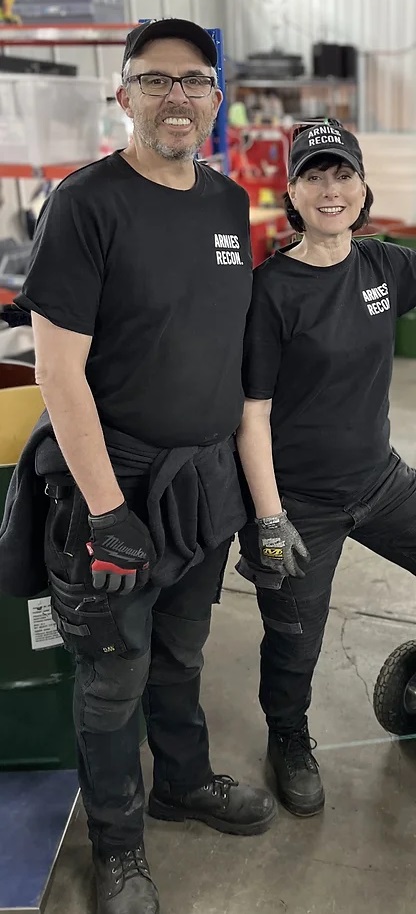 Adrian and Lisa Saunders founded Arnies Recon in 2019 as a self-funded social enterprise to reimagine the approach to dealing with electronic waste. Their services are free to households, business and government.
Adrian and Lisa Saunders founded Arnies Recon in 2019 as a self-funded social enterprise to reimagine the approach to dealing with electronic waste. Their services are free to households, business and government. - 4 October - Cromer: 7:00 - 9:00am at Cromer Community Centre Car Park, Fisher Road North
- 6 October - North Narrabeen: 7:00 - 9:00am at Lake Park Car Park, Lake Park Road
- 12 October - Manly Vale: 7:00 - 9:00am at Miller's Reserve, Campbell Parade
- 13 October - Avalon Beach: 7:00am - 9:00am at Hitchcock Park, Barrenjoey Road
- Arnies try to find buyers for the items as they are. If we can safely provide the item to a collector or refurbisher, we can recycle with the lowest footprint possible.
- Arnies find people who refurbish and reuse the items as they are or as parts to make whole units.
- Arnies locate collectors in Australia and overseas who are excited by retro electronics and want to own or restore old items that have nostalgic value.
- Disassemble items and sell individual items are parts
- Donate items for use in community and/or arts projects
- Break down computers for precious and valuable metals recovery
- Recycle any items that we are unable to sell with safety for metals and precious metals
- Constantly seek better ways to recycle
100 Trees For 100 Years Of Avalon Beach: Avalon 100 Centenrary Wildlife Talk
Above are some of the 100 trees that have been planted in and around the Avalon Beach village centre over the past few months to celebrate the Avalon Beach Centenary.
An Avalon 100 Centenary wildlife talk is scheduled for Sunday 16th October at 11am in the Avalon RSL.
Roger Treagus of the Avalon 100 Committee states;
''One of the important features of Avalon life is its wildlife. We will have three speakers at the event - John Dengate will talk about the general scene and is keen to answer lots of questions that residents may have. Then Andrew Gregory, famed wildlife photographer will show his stunning pictures of the powerful owl. Finally we have Merinda Air from WIRES to explain what to do when encountering injured wildlife.''
Australian water dragon, Intellagama lesueurii, catching some afternoon sun at Careel Creek, Avalon Beach. Photos: A J Guesdon
National Bird Week + Aussie Bird Count 2022
Watch Out - Shorebirds About
.JPG.opt1460x973o0,0s1460x973.jpg?timestamp=1663629195339)
Take Someone Under Your Wing This World Migratory Bird Day: October 8 2022
- A priority when birdwatching should always be to ensure minimal disturbance to birds and their habitats, and their wellbeing should never be compromised to get a good sighting or photograph. Don’t get too close, never disturb their nests, and avoid blocking their route back to the nest. This can prevent parents from returning to their chicks, leaving them hungry and at greater risk of predation. Also, try to stay on roads and paths when possible, so as not to trample vegetation or ground nests.
- You don’t need to travel far to enjoy birdwatching as one of the many incredible things about birds is that we can see them everywhere! You can head out to a forest or nature reserve, or just watch out from your kitchen window. No matter where you see a bird, submitting your sightings is always useful information, whether it’s at a National Park or your local bus stop.
- Birds are easily startled by loud noises, so to increase your chances of exciting sightings you need to be as quiet as possible and avoid sudden movements. This way, you’re more likely to hear their songs and calls too. Patience is also key, so don’t be disheartened if you don’t immediately spot lots of species – persevering will pay off!
- Identifying birds takes practice. There are thousands of different species of bird, so don’t pressure yourself to know them all! Use a guidebook to help with your identification or take a photo if you can and ask a friend to help to figure out the species.
Magpies, curlews, peregrine falcons: how birds adapt to our cities, bringing wonder, joy and conflict
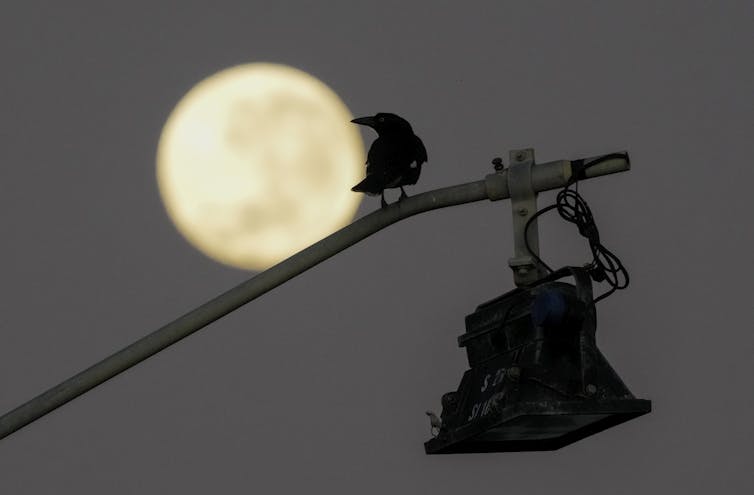
For all the vastness of our Outback and bush, most Australians live in urban areas. In cities, we live within an orderly landscape, moulded and manufactured by us to suit our needs. But other species also live in this modified environment.
Review: Curlews on Vulture Street: cities, birds, people & me – Darryl Jones (NewSouth)
In many cases, this cohabitation is peaceful, benign or even mutually beneficial. Part of Darryl Jones’ Curlews on Vulture Street: cities, birds, people & me documents the surprising variety of bird life in our cities and towns. Many of these birds are native species, finding a way to live – and sometimes to flourish – in a human-dominated system.
Lorikeets, honeyeaters, cockatoos, crows, currawongs, silver gulls, peregrine falcons, and even (in some Australian cities) curlews and brush-turkeys have cracked the code, adapting to the resources we inadvertently provide, or intentionally create, for them – such as native plants in our gardens. They survive or thrive notwithstanding the cars, cats, concrete, dogs, noise and pollution.
Many of us appreciate these birds, they add colour, joy and wildness to our lives. As witness to their fascination, thousands of Australians meticulously record the birds in our backyards every year, chuffed at every novelty, casually competing with other backyard observers.
Jones notes that many of us also feed birds, to seek closer interactions with them, and to provide some restitution for the damage our species has done to their natural environment. Urban life can be alienating, lonely; birds can connect us to the wellspring of nature.
However, in some cases, cohabitation with other species is problematic: we come into conflict with those other lives.
Much of the content of this book describes such situations: aggressive dive-bombing magpies, brush-turkeys re-arranging what were once meticulously neat gardens, bin-chickens (white ibis) snatching food from our lunch tables and picnics, and hooligan sulphur-crested cockatoos ripping up our verandahs.
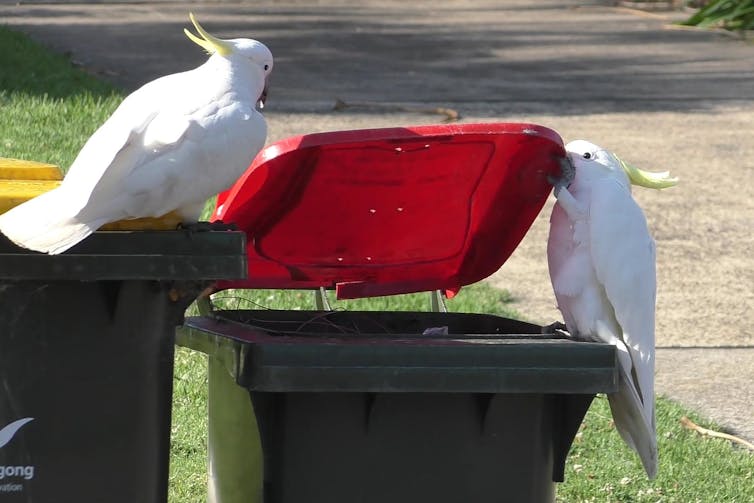
Many of us love these birds; some of us hate them. These are challenging conflicts to resolve, and Jones carefully describes various cases and how he goes about finding solutions.
Happy to admit his initial assumptions are often proven entirely wrong, Jones articulates the need for carefully planned and implemented – and often highly innovative – research in order to understand why these “troublesome” birds are behaving as they do.
He also shows that at least some of these problems, and their solutions, have more to do with human attitudes and behaviours than with the wayward intentions of birds. So, if we stressed less about the orderliness of our gardens, we may enjoy the landscaping chaos that comes with sharing our yards with industrious brush-turkeys. If we can admire the pluck and fierce paternal protective drive of magpies, we may better tolerate their brief seasonal bouts of aggression, or shift our walking or cycling routes to avoid them.
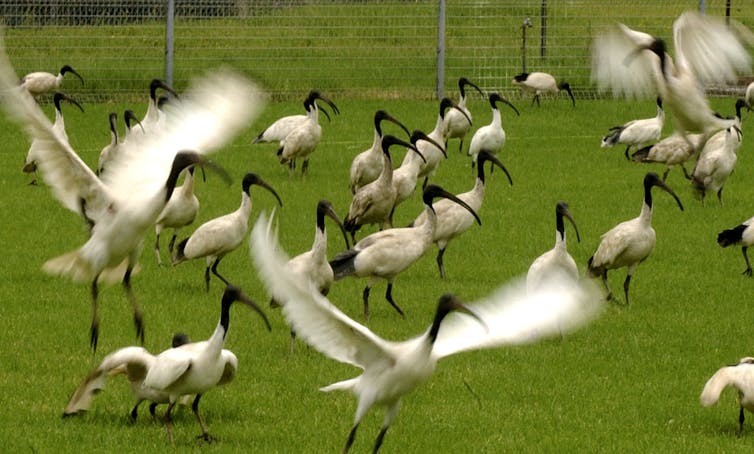
Solving The Swoop
Most Australians have been swooped by magpies, some terrified and long-scarred by the sometimes spectacular experience. It is an acute case of courageous, untamed nature fighting back within our domain.
Jones shows that many magpies do not swoop, that the swooping birds are most always the males, that the behaviour occurs when there are eggs in the nest, and that many swooping birds specialise in their targets. Some birds swoop only cyclists, others pedestrians, and some just one or two individual humans.
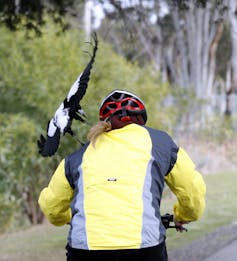
Swooping is an exaggerated form of defence of the clutch against what the magpie perceives to be a potential predator. Whereas many such issues were once addressed simply by shooting, Jones uses careful experimentation to show that the problem can be at least temporarily resolved by capturing the magpie and moving it at least 30 kilometres away: any closer and it may swiftly return.
His studies also show that other male magpies may replace the transported male and help raise his young, an altruism that may return longer-term benefits.
But this book is more than simply an account of urban birds and wildlife management problems. It is part autobiography, part mystery, part reflective celebration of the beauty, vitality and value of our wildlife.
Jones’ fascination with nature, and particularly with birds, is the current that shapes his career and his life. And the stories in this book infect the reader with this fascination. This engagement is further reinforced by wonderful, evocative illustrations by Kathleen Jennings.
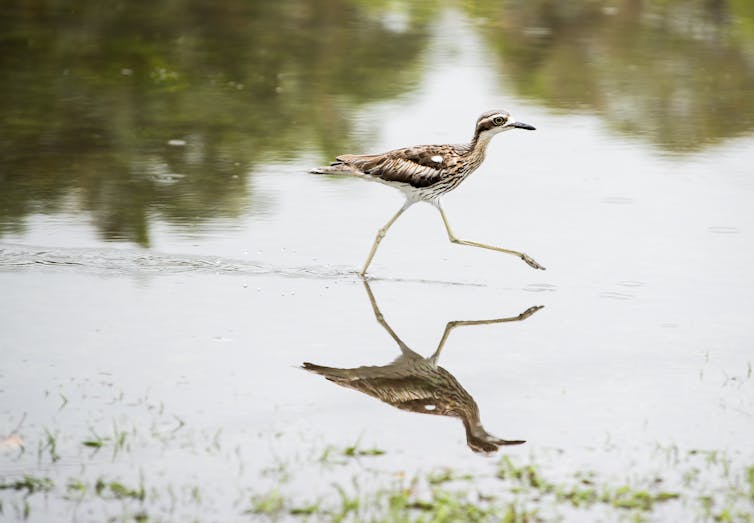
Childhood Events
Some childhood events shape us, embed enduring values, open the pathways that we may follow all our lives. For Jones, the wonder in his life starts with noticing something different in his solitary youth – this particular wonder as prosaic as a single introduced blackbird in the backyard of his house in rural New South Wales, far from the Australian city centres where it was “meant” to be. (Nature is fluid; we cannot presume too much.)

The first mystery solved by Jones is its identification, a more complex challenge then – in the 1960s – when bird books were crude. Knowing the name of things proves to be a gateway to understanding. The second mystery, also triggered by early experience, is a much larger one, and it permeates this book: how does nature live with us; and how do we live with nature?
Another childhood event is traumatic. Jones describes the brutal killing by other boys of a beloved pet magpie. It reinforces his feeling for birds, and a desire to help conserve them; and it reminds us that we can’t assume that all people share such sympathies.
Jones honed his youthful interest in birds through tertiary education. He is generous in recognising the mentors who guided him on this pathway, and the characters who later helped him understand and develop practical solutions to urban wildlife issues. Over time, he returns the favour: mentoring – and admiring the expertise of – many students.

The subject of this book is a tricky one. We should all appreciate the variety of wildlife that can live within our cities, and we should help to maintain and enhance it. But of course, across much of the world, including much of Australia, biodiversity is in steep decline, and it is particularly those native species that are dependent upon unmodified natural environments that are most suffering.
Jones at least notes this broader context. We should not be so beguiled by the wildlife in our cities, and even the increases in that wildlife, into presuming that nature is resilient and can cope with the way we mess with this world.
But we should also be grateful: even in our cities and suburbs, we live in a wonderful world, full of small mysteries, surrounded by the lives of many other animals. Our lives become better, richer, less selfish if we can see and try to understand that wonder. This book helps guide us there.![]()
John Woinarski, Professor (conservation biology), Charles Darwin University
This article is republished from The Conversation under a Creative Commons license. Read the original article.
West Head Lookout Upgrade
- The area of outlook unencumbered by fencing has been substantially reduced yet the information email highlights a cross section through this area. In fact most of the site will be affected by a crude metal perimeter fence similar to a pool fence - see red highlight on plan below.
- The scheme is represented as a concept design whereas it is in fact part of a tender set presumably advanced to call tenders for construction. This is a barrier to addressing any design concerns raised.
- The site is widely recognised as an exceptional example of landscape architecture within a national park. The National Trust is similarly concerned with developments proposed for this location.
- It appears the concerns originally raised by so many in the community either have not been heard or appreciated. These relate to the lookout serving as a place where the public have been able to enjoy unimpeded views over Pittwater and North to Bouddhi. The lookout has been a quiet place of contemplation as well as a place for small numbers of people to stop for impromptu picnics. The imposition of a 1200 high crude metal fence will impact the enjoyment currently experienced. The proposal as it stands is a regressive step and detracts from the experience of visiting this exceptional site.
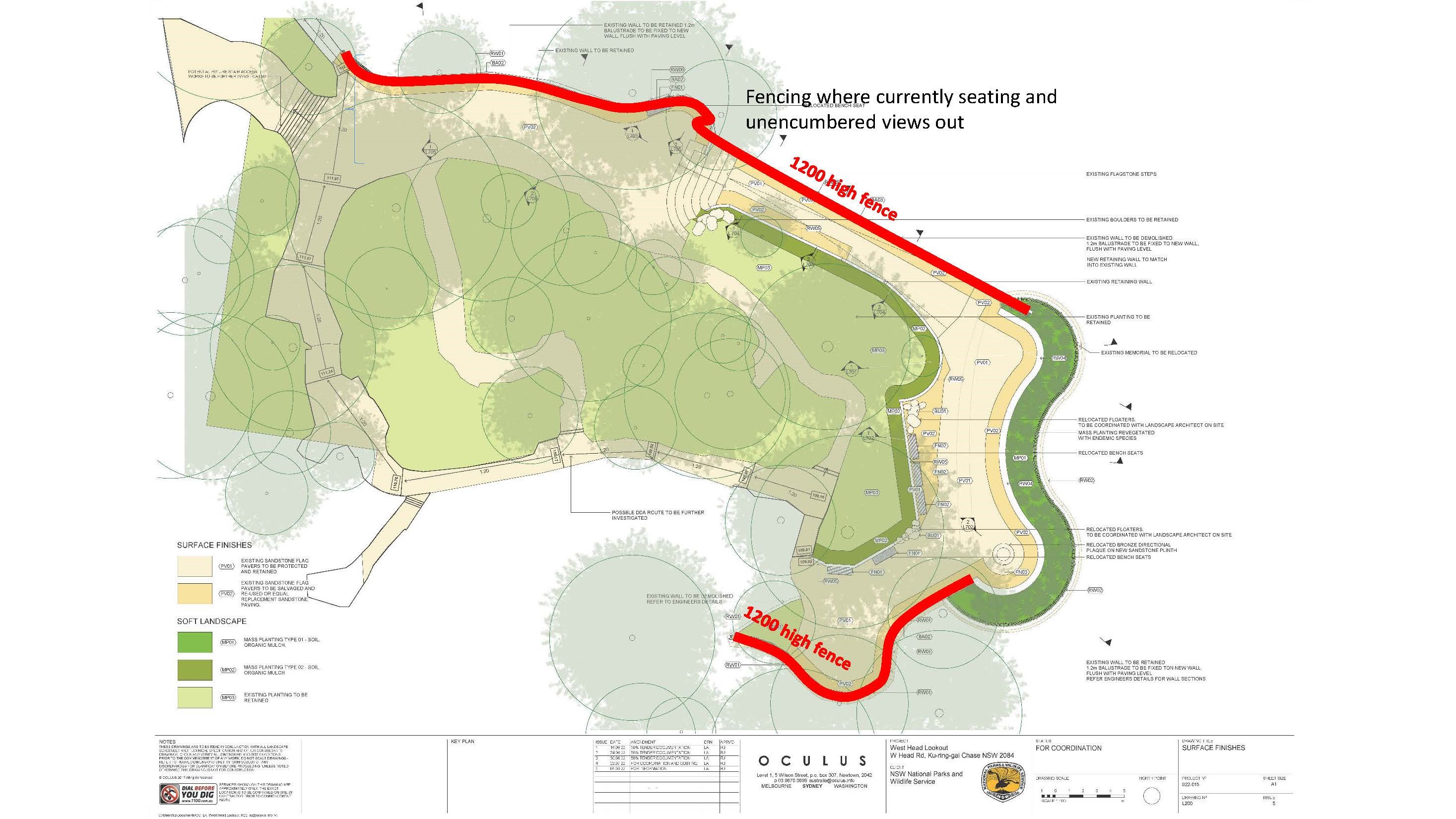
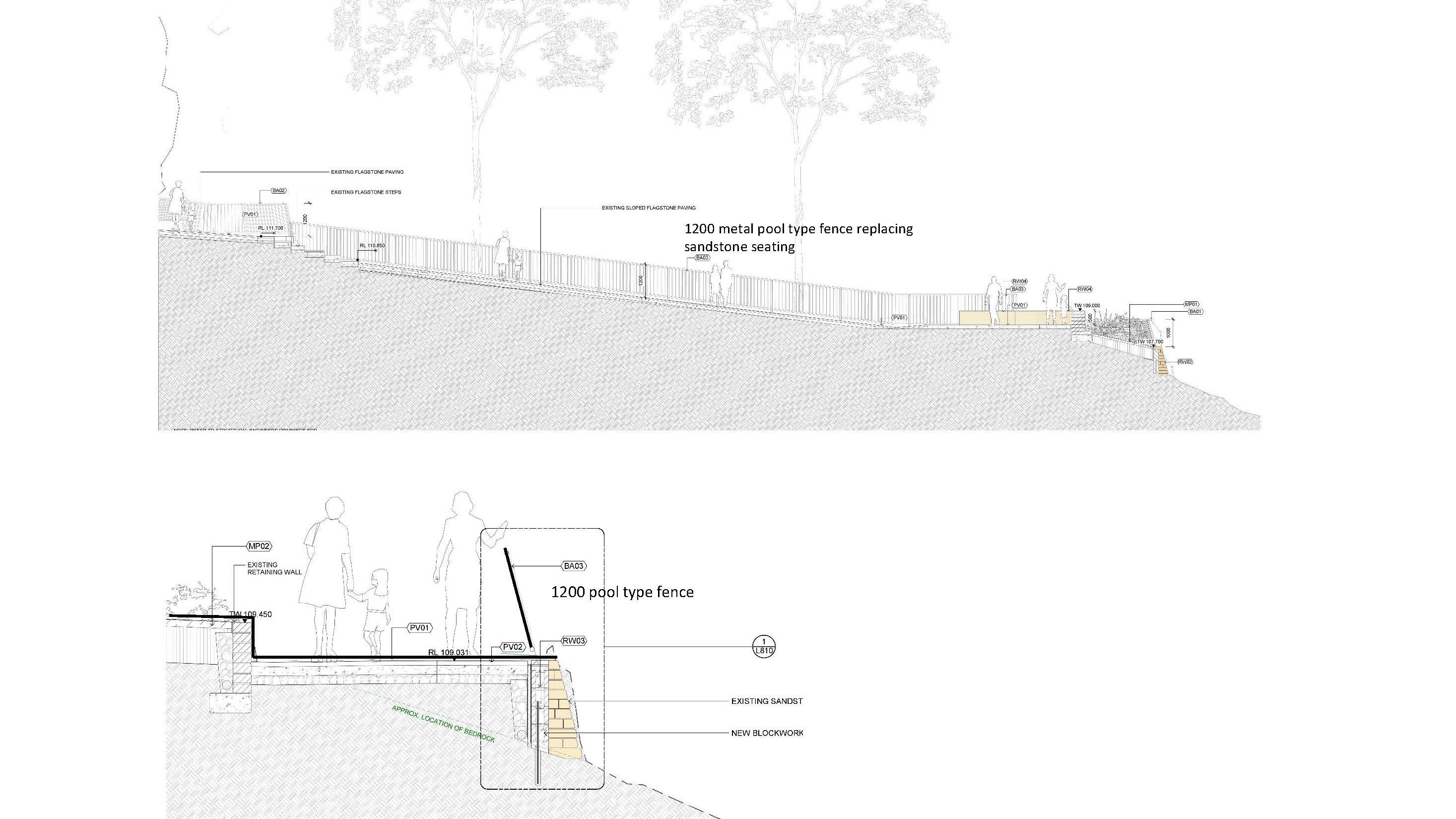
Over A Hectare Of Crown Land At Belrose To Be Sold: Transferred Public Lands
 Residents have contacted Pittwater Online regarding the transfer of over one hectare of Crown Land at Blackbutts road Belrose to Aruma (formerly House With No Steps).
Residents have contacted Pittwater Online regarding the transfer of over one hectare of Crown Land at Blackbutts road Belrose to Aruma (formerly House With No Steps). Scotland Island Spring Garden Festival
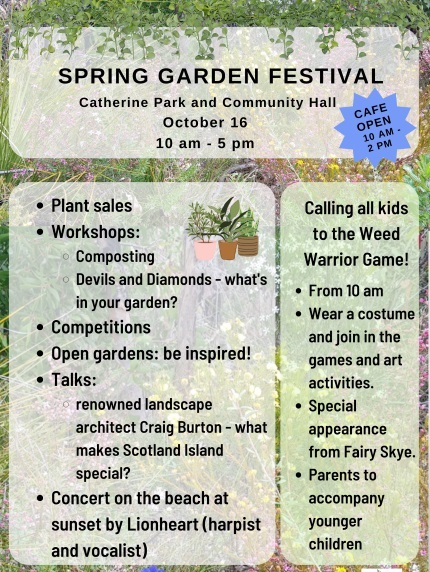
Weed Alert: Corky Passionflower At Mona Vale + Narrabeen Creek
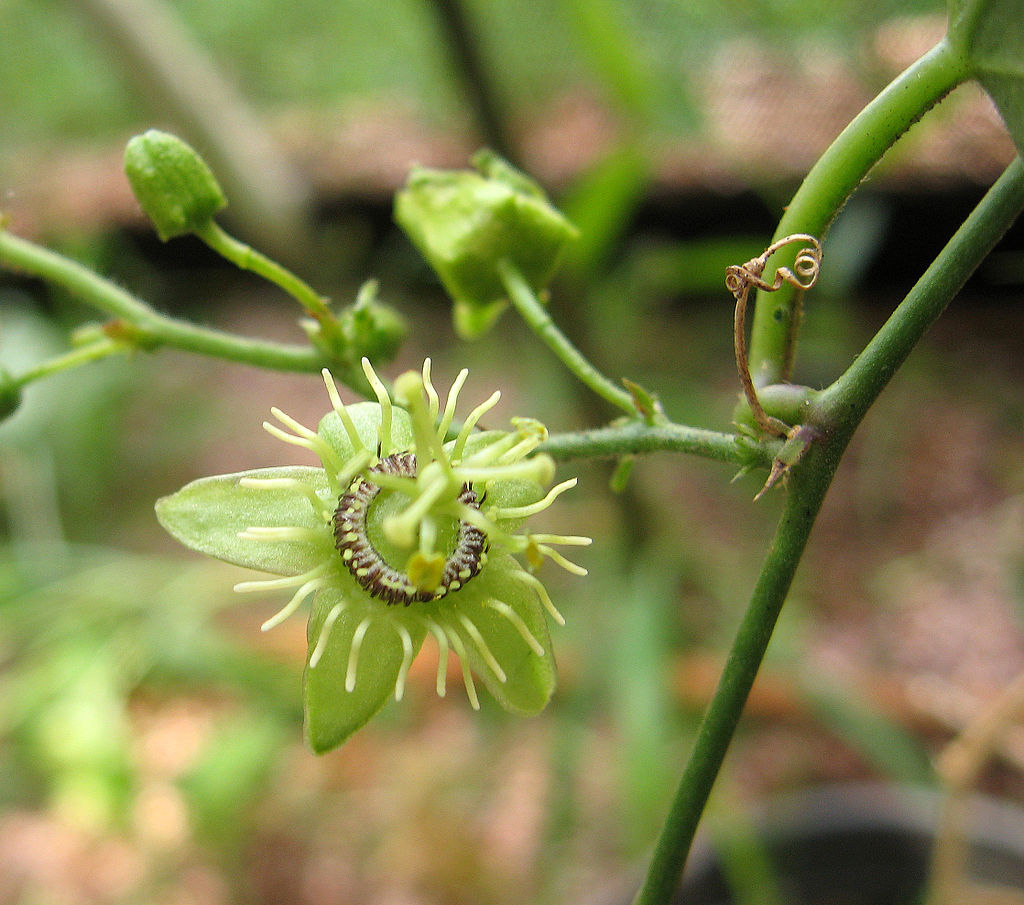
.jpg?timestamp=1663392221562)
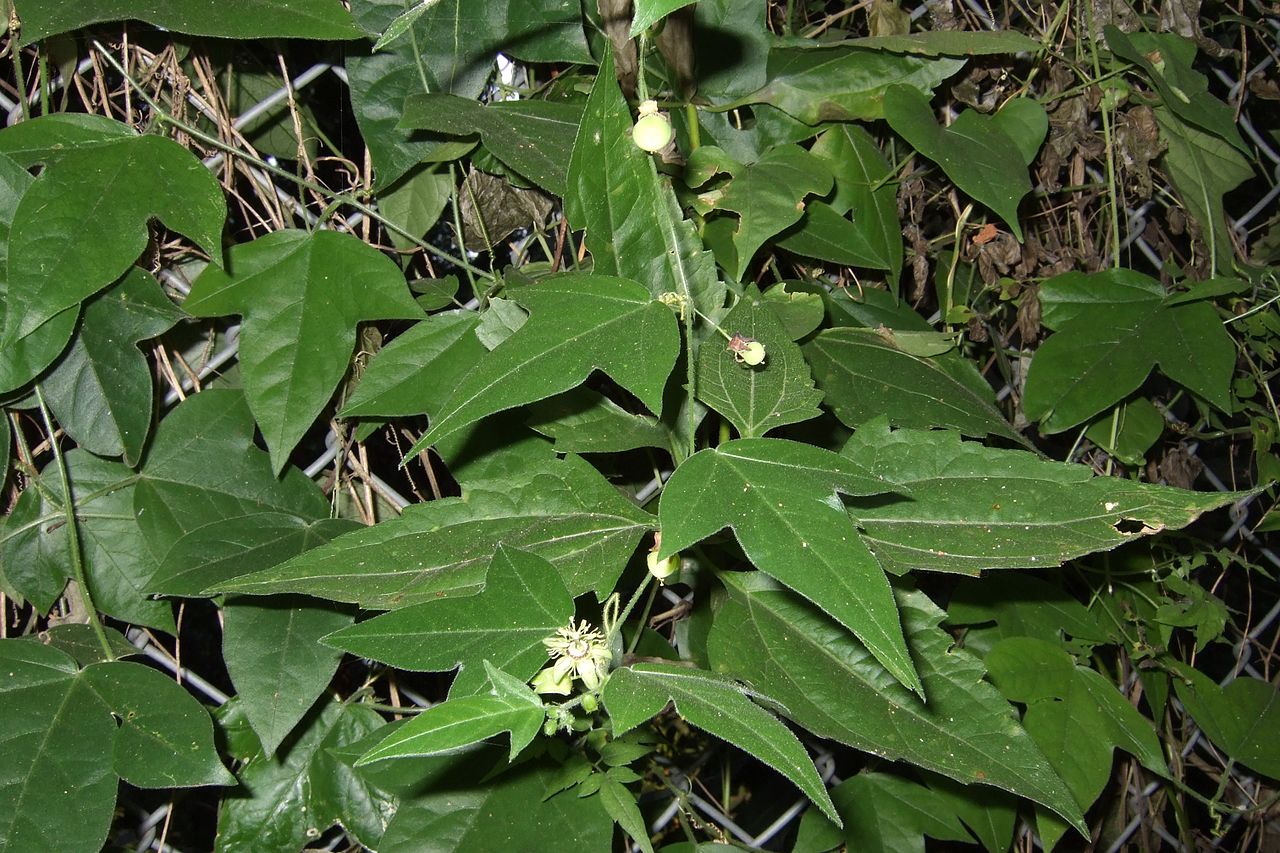
Katandra Bushland Sanctuary Open
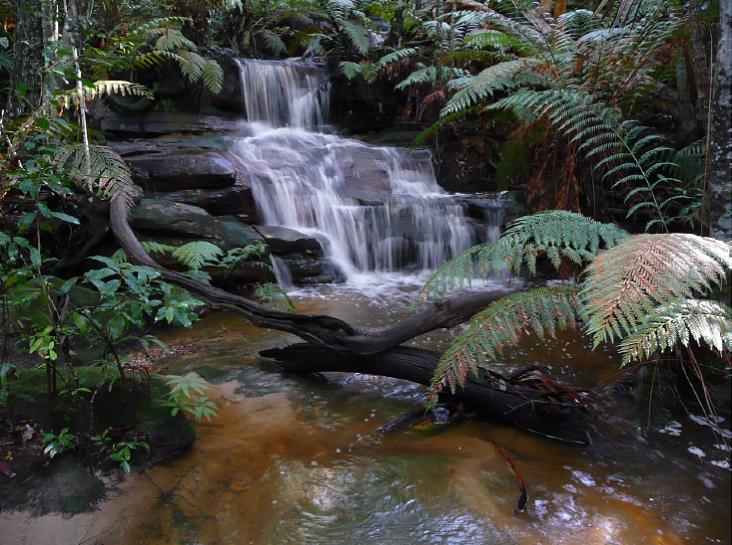
Ku-Ring-Gai Sculpture Trail For 2022 Eco Festival
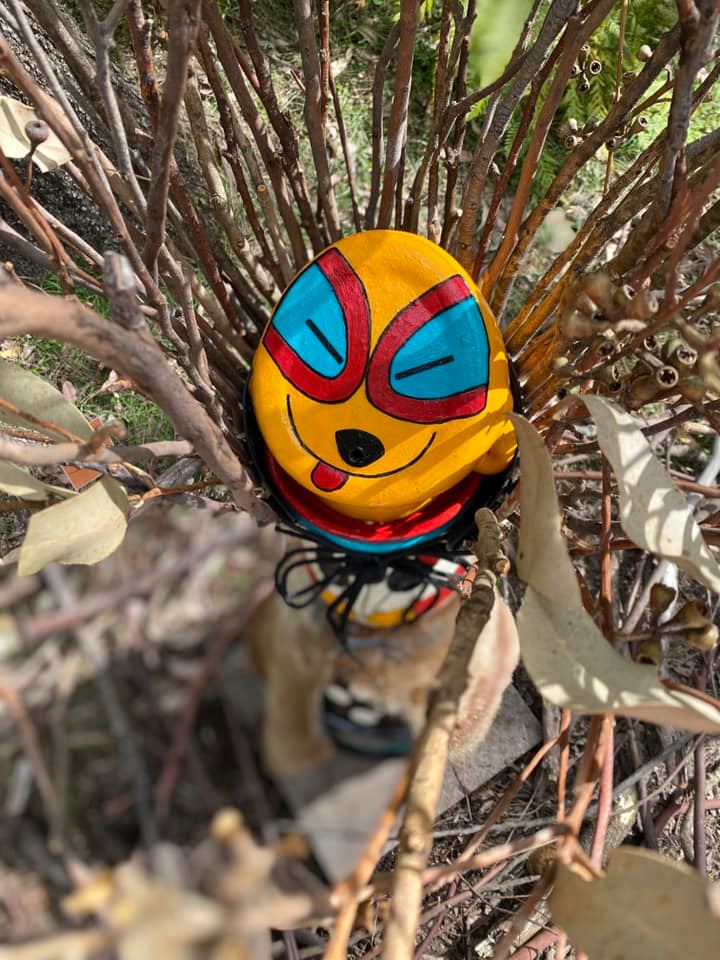
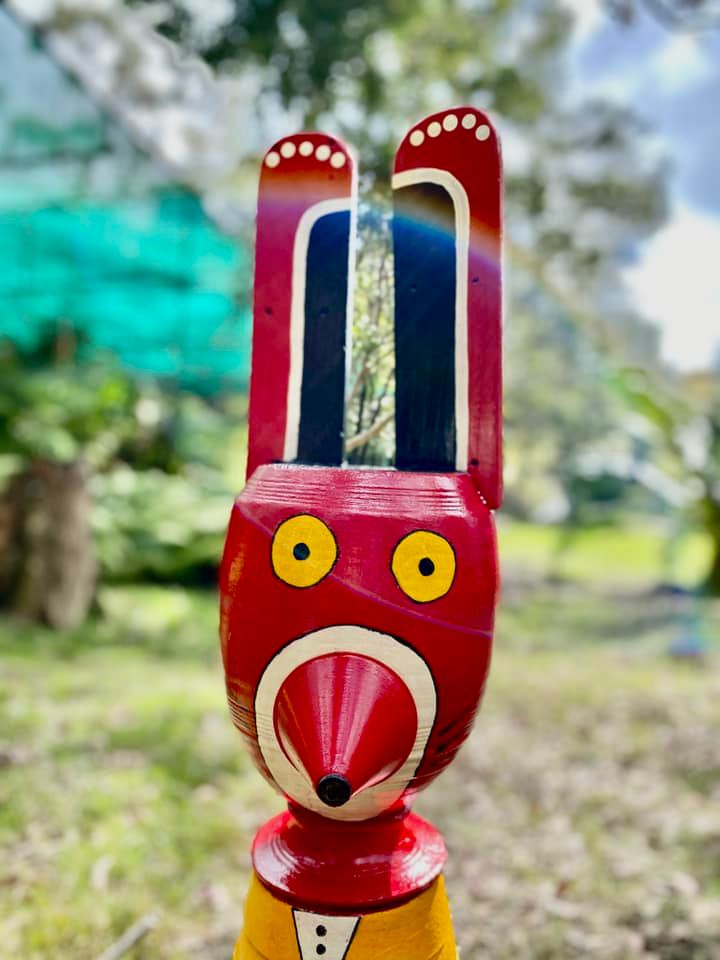
Dust Off Your Picnic Blankets For The First Ever Statewide Picnic For Nature
EPA Releases Climate Change Policy And Action Plan
The NSW Environment Protection Authority (EPA) is taking action to protect the environment and community from the impacts of climate change, today releasing its new draft Climate Change Policy and Action Plan which works with industry, experts and the community to reduce greenhouse gas emissions and support resilience.
NSW EPA Chief Executive Officer Tony Chappel said the EPA has proposed a set of robust actions to achieve a 50 per cent reduction in carbon emissions by 2030 (from 2005 levels), ensure net zero emissions by 2050, and improve resilience to climate change impacts.
“NSW has ambitious targets that align with the world’s best scientific advice and the Paris commitments, to limit global warming to an average of 1.5 degrees in order to avoid severe impacts on ecosystems,” Mr Chappel said.
“Over the past few years we have seen first-hand just how destructive the impacts of climate change are becoming, not only for our environment, but for NSW communities too.
“We know the EPA has a critical role to play in achieving the NSW Government’s net-zero targets and responding to the increasing threat of climate change induced weather events.
“Equally, acting on climate presents major economic opportunities for NSW in new industries such as clean energy, hydrogen, green metals, circular manufacturing, natural capital and regenerative agriculture.
“This draft Policy sends a clear signal to regulated industries that we will be working with them to support and drive cost-effective decarbonisation while implementing adaptation initiatives that build resilience to climate change risks.
“Our draft plan proposes a staged approach that ensures the actions the EPA takes are deliberate, well informed and complement government and industry actions on climate change. These actions will support industry and allow reasonable time for businesses to plan for and meet any new targets or requirements.
“Climate change is an issue that we all face so it’s important that we take this journey together and all play our part in protecting our environment and communities for generations to come.”
Actions include:
- working with industry, government and experts to improve the evidence base on climate change
- supporting licensees prepare, implement and report on climate change mitigation and adaptation plans
- partnering with NSW Government agencies to address climate change during the planning and assessment process for activities the EPA regulates
- establishing cost-effective emission reduction targets for key industry sectors
- providing industry best-practice guidelines to support them to reduce their greenhouse gas emissions
- phasing in the introduction of greenhouse gas emission limits on environment protection licences for key industry sectors
- developing and implementing resilience programs, best-practice adaptation guidance and harnessing citizen science and education programs
- working with EPA Aboriginal and Youth Advisory Committees to improve the EPA’s evolving climate change response
EPA Acting Chair Carolyn Walsh said the EPA is a partner in supporting and building on the NSW Government’s work to address climate change for the people of NSW.
“The draft Policy and Action Plan adopts, supports and builds on the strong foundations that have been set by the NSW Government through the NSW Climate Change Policy Framework, Net Zero Plan and Climate Change Adaptation Strategy,” Ms Walsh said.
The EPA will work with stakeholders, including licensees, councils, other government agencies, and the community to help implement the actions.
The draft EPA Climate Change Policy and Action Plan is available at https://yoursay.epa.nsw.gov.au/ and comments are open until 3 November 2022.
Wanted: Photos Of Flies Feeding On Frogs (For Frog Conservation)
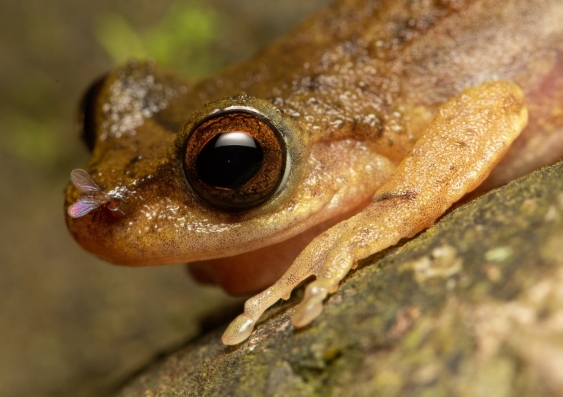
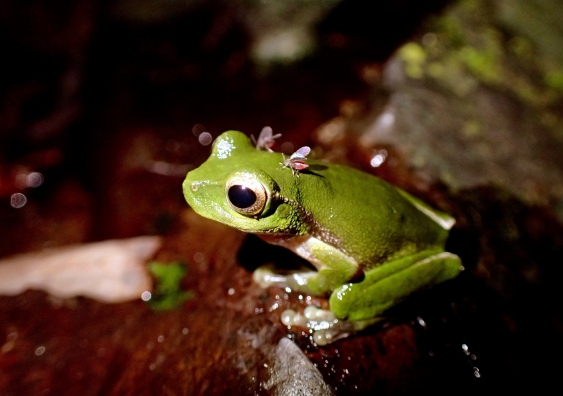
Possums In Your Roof?: Do The Right Thing

Local Wildlife Rescuers And Carers State That Ongoing Heavy Rains Are Tough For Us But Can Be Tougher For Our Wildlife:
- Birds and possums can be washed out of trees, or the tree comes down, nests can disintegrate or hollows fill with water
- Ground dwelling animals can be flooded out of their burrows or hiding places and they need to seek higher ground
- They are at risk crossing roads as people can't see them and sudden braking causes accidents
- The food may disappear - insects, seeds and pollens are washed away, nectar is diluted and animals can be starving
- They are vulnerable in open areas to predators, including our pets
- They can't dry out and may get hypothermia or pneumonia
- Animals may seek shelter in your home or garage.
You can help by:
- Keeping your pets indoors
- Assessing for wounds or parasites
- Putting out towels or shelters like boxes to provide a place to hide
- Drive to conditions and call a rescue group if you see an animal hit (or do a pouch check or get to a vet if you can stop)
- If you are concerned take a photo and talk to a rescue group or wildlife carer
There are 2 rescue groups in the Northern Beaches:
Sydney Wildlife: 9413 4300
WIRES: 1300 094 737
Please be patient as there could be a few enquiries regarding the wildlife.
Generally Sydney Wildlife do not recommend offering food but it may help in some cases. Please ensure you know what they generally eat and any offerings will not make them sick. You can read more on feeding wildlife here
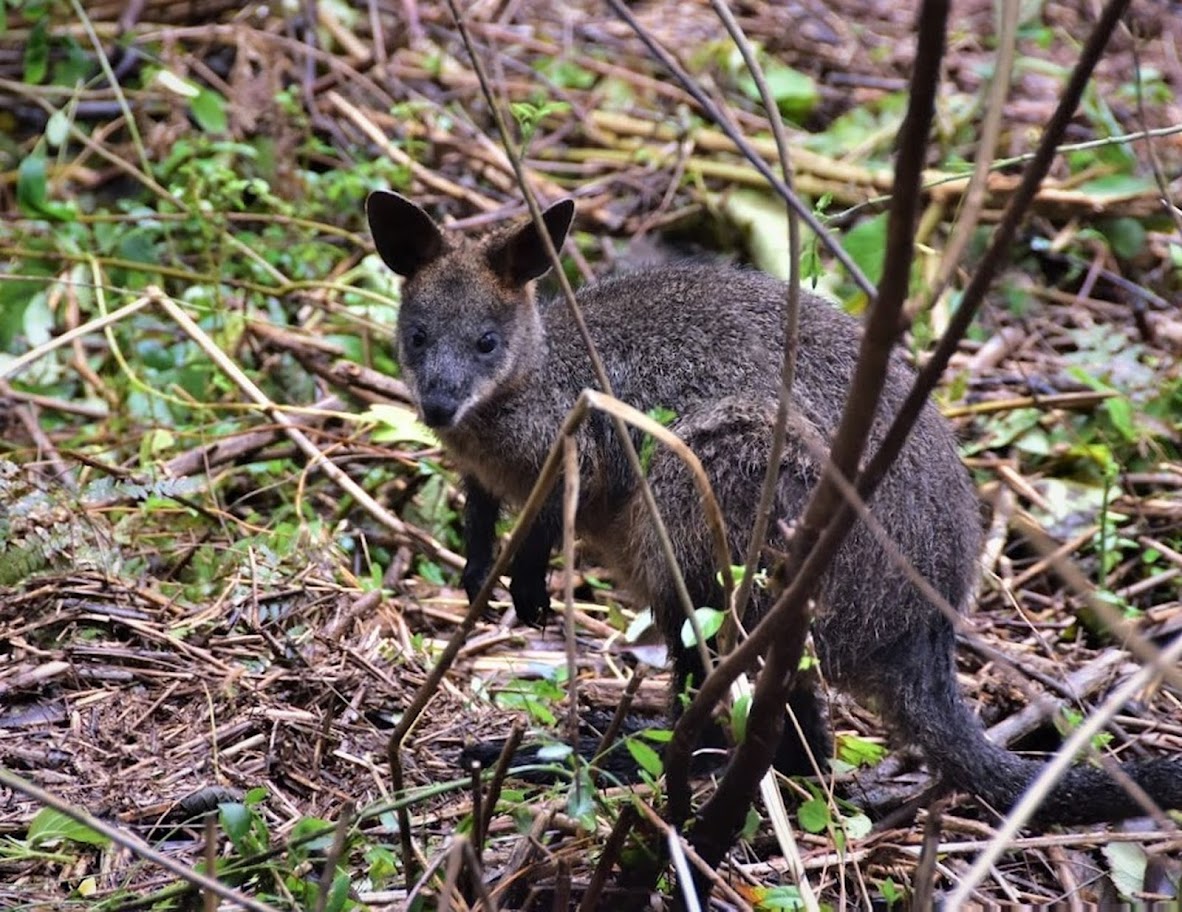
Information courtesy Ed Laginestra, Sydney Wildlife volunteer. Photo: Warriewood Wetlands Wallaby by Kevin Murray, March 2022.
Aviaries + Possum Release Sites Needed

Sydney Wildlife Rescue: Helpers Needed
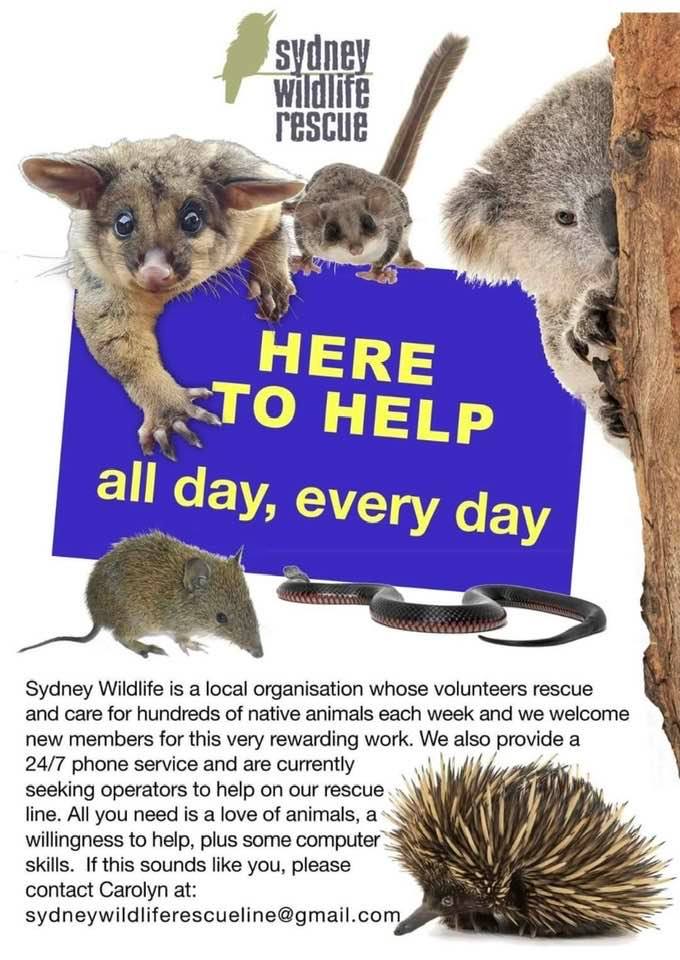
Bushcare In Pittwater
Where we work Which day What time
Avalon
Angophora Reserve 3rd Sunday 8:30 - 11:30am
Avalon Dunes 1st Sunday 8:30 - 11:30am
Avalon Golf Course 2nd Wednesday 3 - 5:30pm
Careel Creek 4th Saturday 8:30 - 11:30am
Toongari Reserve 3rd Saturday 9 - 12noon (8 - 11am in summer)
Bangalley Headland 2nd Sunday 9 to 12noon
Bayview
Winnererremy Bay 4th Sunday 9 to 12noon
Bilgola
North Bilgola Beach 3rd Monday 9 - 12noon
Algona Reserve 1st Saturday 9 - 12noon
Plateau Park 1st Friday 8:30 - 11:30am
Church Point
Browns Bay Reserve 1st Tuesday 9 - 12noon
McCarrs Creek Reserve Contact Bushcare Officer To be confirmed
Clareville
Old Wharf Reserve 3rd Saturday 8 - 11am
Elanora
Kundibah Reserve 4th Sunday 8:30 - 11:30am
 Mona Vale
Mona Vale Mona Vale Beach Basin 1st Saturday 8 - 11am
Mona Vale Dunes 2nd Saturday +3rd Thursday 8:30 - 11:30am
Newport
Bungan Beach 4th Sunday 9 - 12noon
Crescent Reserve 3rd Sunday 9 - 12noon
North Newport Beach 4th Saturday 8:30 - 11:30am
Porter Reserve 2nd Saturday 8 - 11am
North Narrabeen
Irrawong Reserve 2nd Saturday 2 - 5pm
Palm Beach
North Palm Beach Dunes 3rd Saturday 9 - 12noon
Scotland Island
Catherine Park 2nd Sunday 10 - 12:30pm
Elizabeth Park 1st Saturday 9 - 12noon
Pathilda Reserve 3rd Saturday 9 - 12noon
Warriewood
Warriewood Wetlands 1st Sunday 8:30 - 11:30am
Whale Beach
Norma Park 1st Friday 9 - 12noon
Western Foreshores
Coopers Point, Elvina Bay 2nd Sunday 10 - 1pm
Rocky Point, Elvina Bay 1st Monday 9 - 12noon
Gardens And Environment Groups And Organisations In Pittwater
‘Sad and distressing’: massive numbers of bird deaths in Australian heatwaves reveal a profound loss is looming
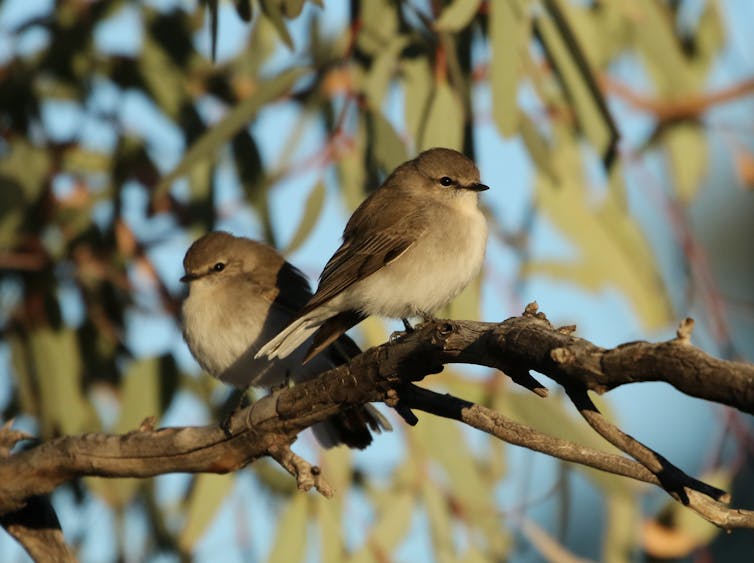
This article contains images that some readers may find upsetting.
Heatwaves linked to climate change have already led to mass deaths of birds and other wildlife around the world. To stem the loss of biodiversity as the climate warms, we need to better understand how birds respond.
Our new study set out to fill this knowledge gap by examining Australian birds. Alarmingly, we found birds at our study sites died at a rate three times greater during a very hot summer compared to a mild summer.
And the news gets worse. Under a pessimistic emissions scenario, just 11% of birds at the sites would survive.
The findings have profound implications for our bird life in a warming world – and underscore the urgent need to both reduce greenhouse gas emissions, and help animals find cool places to shelter.
Feeling The Heat
The study examined native birds in two parts of semi-arid New South Wales: Weddin Mountains National Park near Grenfell and Charcoal Tank Nature Reserve near West Wyalong. At both locations, citizen scientists have been catching, marking and releasing birds regularly since 1986.
This has produced data for 22,000 individual birds spanning 37 species. They include honeyeaters, thornbills, fairy-wrens, whistlers, treecreepers, finches and doves.
Data from the past 30-odd years showed cold winters led only to a relatively small drop in survival rates. But it was a far starker picture in summer.
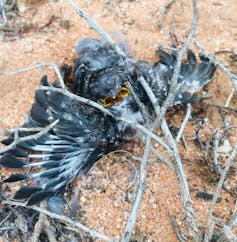
During a mild summer with no days above 38℃, 86% of the birds survived. But in a hot summer with 30 days above 38℃, just 59% survived.
We then used these real-life findings to model future survival, to the end of the century, for birds at our study sites.
Worryingly, climate projections for the sites we studied show the number of days above 38℃ will at least double by the end of the century (or the year 2104). Meanwhile, days below 0℃ will disappear during this time.
These projections are broadly similar for all arid and semi-arid regions across Australia.
As winters warm, we predict bird survival in winter would increase slightly by the end of this century. But this would not offset the many more birds killed by extreme heat as summers warm.
But to what extent will populations decline? To answer this question, we considered an optimistic scenario of rapid emissions reduction – resulting in about 1℃ warming compared to pre-industrial levels. Under this scenario, we predict annual survival will fall by one-third, from 63% to 43%.
Under a pessimistic scenario, involving very little emissions reduction and 3.7℃ warming this century, the survival rate falls to a shocking 11%.
Other lab-based studies around the world have made similar projections for bird populations. But our projections are unusual because they’re based on actual survival rates in wild populations measured over decades.
What Happens To Birds In Heatwaves?
Some birds do manage to survive extreme heat. We then wondered: how does a bird protect itself from soaring temperatures? And can its habitat offer life-saving shelter?
We addressed these questions in a complementary study led by zoologist Lynda Sharpe. It involved comparing the behaviour of individual birds on mild and hot days.
We chose as our subject the Jacky Winter, a small robin common across Australia. Between 2018 and 2021 we followed the fates of 40 breeding pairs living in semi-arid mallee woodland in South Australia. There, the annual number of days above 42℃ has more than doubled over the past 25 years.
As heat escalated, Jacky Winters showed a broad range of behavioural responses. This included adjusting their posture, activity levels and habitat use to avoid gaining heat and to increase heat dissipation.
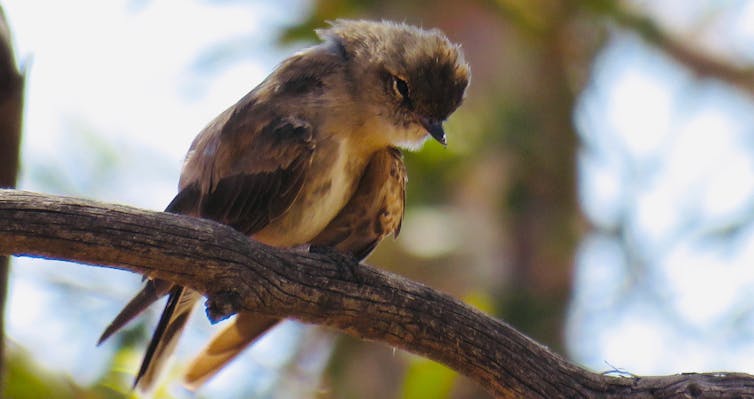
As air temperatures approached 35℃, birds moved to the top of the highest trees where greater wind speeds cooled their bodies. The birds also began to pant, which can lead to fatal dehydration.
Once air temperatures climbed above 40℃, exceeding the birds’ body temperature, they moved to the ground to shelter in tree-base hollows and crevices. They remained in these “thermal refuges” for as long as it took for air temperatures to drop to about 38℃ – sometimes for up to eight hours. But this made foraging impossible and the birds lost body mass.
We then examined what parts of the birds’ habitat offered the coolest place to shelter on extremely hot days. Hollows in tree bases were significantly cooler than all other locations we measured. The best of these cool hollows were rare and found only in the largest eucalypt mallees.
Even with their flexible behaviour, the ability of Jacky Winters to survive heatwaves was finite – and apparently dependent on whether large trees were available. Some 29% percent of adults we studied disappeared (and were presumed dead) within 24 hours of air temperatures reaching a record-breaking 49℃ in 2019.
Similarly, during two months of heatwaves in 2018, 20% of adults studied were lost, compared with only 6% in the two months prior.
Eggs and nestlings were even more susceptible to heat. All 41 egg clutches and 21 broods exposed to air temperatures above 42℃ died.
We found it distressing to witness such losses among birds we had followed for months and years. And it was deeply sad to see the breeding failures after the parent birds had invested so much effort in caring for eggs and tending to young.
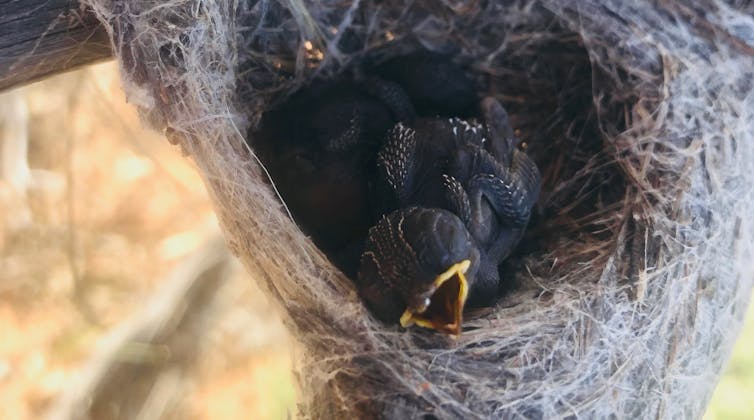
We Need To Act
Our studies show extremely high temperatures are already killing troubling numbers of birds in Australia’s arid and semi-arid regions. These regions comprise 70% of the Australian continent and 40% of the global landmass.
Such losses will only worsen as climate change escalates. This has profound implications for biodiversity in Australia and more broadly.
Obviously, humanity must urgently reduce greenhouse gas emissions to limit global warming. But we must also better manage our biodiversity as the climate changes.
Key to this is identifying and protecting thermal refuges such as tree hollows by, for example, managing fire to reduce the loss of large trees.
The authors wish to acknowledge our colleagues, especially Lynda Sharpe and Tim Bonnet, for their important contributions to the research upon which this article is based.![]()
Janet Gardner, Adjunct Research Scientist, CSIRO and Suzanne Prober, Senior Principal Research Scientist, CSIRO
This article is republished from The Conversation under a Creative Commons license. Read the original article.
Cars have taken over our neighbourhoods. Kid-friendly superblocks are a way for residents to reclaim their streets

You might remember your time as a child playing outdoors with friends and walking to school. These activities had tremendous benefits for our health and development.
Today, parents report barriers to letting their kids play, walk and ride in their neighbourhood. The safety of local streets is a major concern.
One way to boost communities is to create “superblocks for kids”. Pioneered in cities like Barcelona, a superblock covers several neighbourhood blocks reserved for shared use by cyclists, walkers and residents who simply want to use the street space. Superblocks allow low-speed access for residents’ cars, but exclude through-traffic.
Superblocks have evolved from concepts dating back to the 1970s. Retrofitted and planned examples of more liveable and safer streets can be found from Melbourne to Perth, where there are interesting alternative designs in Willetton and Crestwood.
Transforming neighbourhoods in this way enables us to once again enjoy the public space right on our doorsteps – the street.
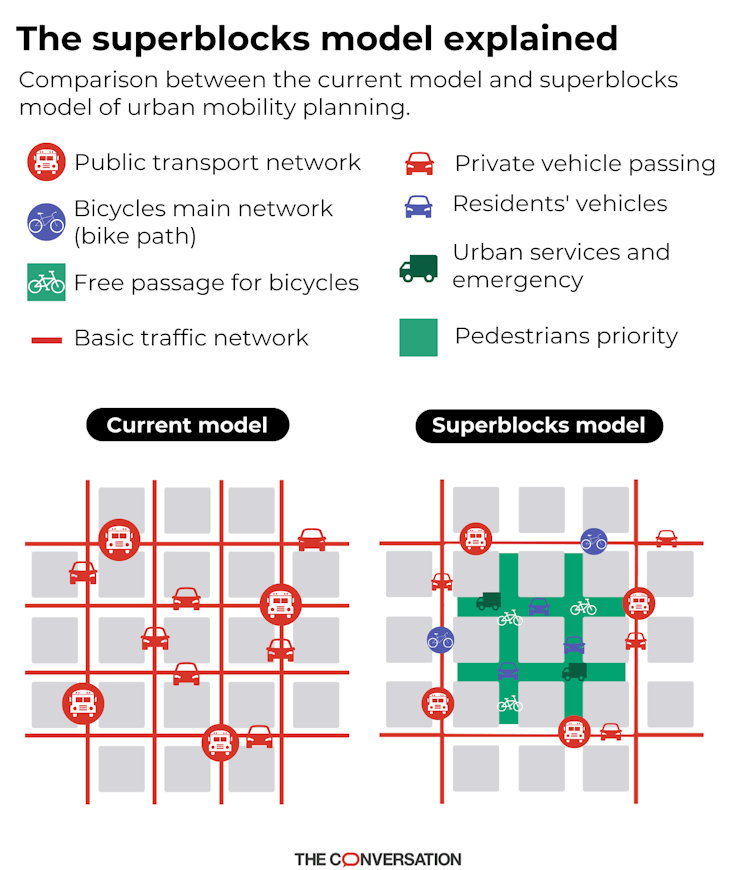
Superblocks For Kids Are A Low-Cost Fix
Superblocks are a low-cost solution to the problem of the residential “stroad” – a street-road hybrid that drivers use to avoid congested main roads, many at unsafe speeds.
These stroads are a troubled mix of two different functions: roads are through routes, and streets connect neighbourhoods socially and physically. Streets connect houses to local parks, shops and through routes, but are also public places themselves. The dual role of stroads comes at the expense of residents and their children.
Superblocks for kids can be retrofitted to existing suburbs to create safer, quieter and more play-friendly streets. They are typically about a square kilometre in area, bounded by main roads and features such as rivers. Ideally, superblocks are clustered together to provide safe access to local amenities and public transport hubs.
Everyone can still drive to their home in a superblock, but they might have to take a slightly longer, more circular route. This can reduce traffic by nudging residents to walk and cycle short journeys within their superblock.
Various low-cost “filters” exclude through traffic. These filters include:
pocket parks – small areas of community green space
modal filters – bollards, gates or planters exclude cars but allow access for walkers and cyclists
diagonal filters – used at four-way intersections
end-of-street filters – open cul-de-sacs to walkers and cyclists
bus gates – automatic numberplate recognition or rising bollards allow bus access
The resulting superblocks are places where kids play on the streets, which are quiet and easy to cross. There’s shade and shelter, places to stop and rest, things to see and do, and the air is clean. People feel safe and relaxed. Neighbourhoods like this promote public health and community camaraderie.
Four examples of streets that could be transformed in this way are shown below:
Lyall Street, Redcliffe, Perth
A pocket park breaks up a rat run to the airport.
The Avenue, Mount St Thomas, Wollongong
Plantings and bollards eliminate a known rat run.
Lithgow Street, Abbotsford, Melbourne
Wider kerbs make school drop-offs and pick-ups safer.
Meymot Street, Banyo, Brisbane
A pocket park and residents-only car access create a safer and quieter street.
Rat-Running Is A Big Problem
Almost twice as many cars are on Australian roads today as 20 years ago. Coupled with the rise of satellite navigation technology, this has led to more drivers using residential streets as rat runs to avoid congested main roads.
Decades of prioritising cars in Australian communities have created a serious safety issue. Overall, serious road injuries are on the rise. Despite small declines in road deaths, deaths on local streets haven’t fallen.
People feel less safe on their local streets, but we know what we can do to improve safety. Preventing rat-running leads to cleaner air, less noise, safer streets and more walking, riding, wheelchairs and mobility scooters. These results all promote stronger communities.
Everyone Benefits From Kid-Friendly Neighbourhoods
A remarkable feature of building neighbourhoods for kids is how quickly residents reoccupy their streets. People emerge from their houses to talk, their voices no longer drowned by vehicle noise. Thoroughfares become communities. Children come out to play.
As physical activity researchers, we know that getting children to move more is an urgent issue. Australian kids score a D- for overall physical activity levels on international ratings. Australian adults also have low levels of physical activity.
Neighbourhoods for kids help everyone enjoy the benefits of becoming more active. For kids, the street can connect them to nature and help them develop movement and independent travel skills for life.
Increasing neighbourhood liveability also boosts house prices and reduces noise pollution.
Leaving The Car At Home For Short Local Trips
Superblocks make it easier for families to choose the “right tool for the job” for small local trips — a bicycle over a car. This saves money and improves health.
All these small trips add up. For example, two-thirds (2.8 million) of daily car trips in Perth are under 5km — a 20-minute bike ride or less. In Melbourne, 41% of trips are under 3km, but 58% of these are by car. That’s 3.6 million car trips a day.
Where Should Australia Start?
Our research highlights the need to listen to communities, and kids in particular, when designing neighbourhoods.
In the vast majority of cases, any initial opposition to creating kid-friendly neighbourhoods soon dissipates. Residents see the benefits of safer and more pleasant streets for themselves and their families.
Two-thirds of Australians support improving their neighbourhood to help them be more active. We should start by creating neighbourhoods for the communities that need it most — those with the poorest access to green space and public transport, most through traffic and crashes, and highest levels of childhood obesity.
Get your community talking again! You can start by hosting a temporary play street! Demonstrating its success will help when asking your council for permanent changes.
The authors encourage the reuse of the re-imagined streets. They are freely available to download in multiple open-access formats.![]()
Matthew Mclaughlin, Research Fellow, Telethon Kids Institute, The University of Western Australia; Hayley Christian, Associate Professor, School of Population and Global Health, The University of Western Australia; Jasper Schipperijn, Professor of Active Living Environment, University of Southern Denmark, and Trevor Shilton, Adjunct Professor, School of Public Health, Curtin University
This article is republished from The Conversation under a Creative Commons license. Read the original article.
NSW Government Offers Multi-Million Dollar Support For Critical Minerals Projects
Impact Of New Energy Efficient Streetlights On Insects Revealed
Songbirds with unique colours are more likely to be traded as pets – new research
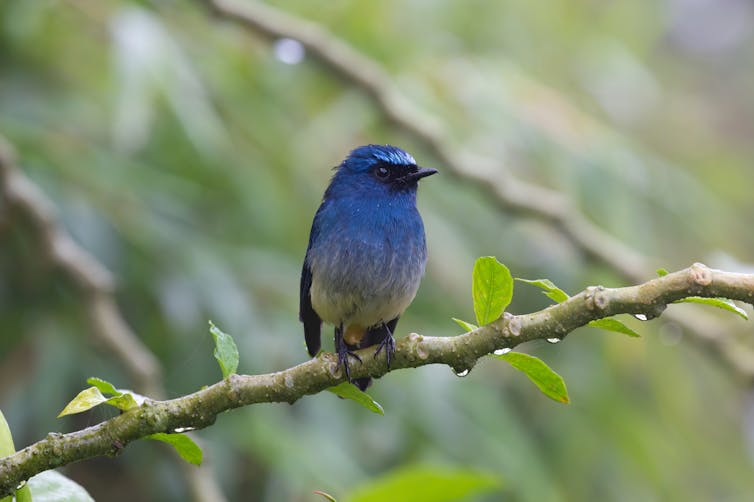
People like beautiful things. This comes as no surprise: beauty underpins highly profitable businesses, from cosmetics and art to the illegal wildlife trade, which reaps up to US$23 billion (£20 billion) annually according to some estimates.
Tigers and pandas show that aesthetic value can be an asset to wildlife conservation, attracting public support and funding. On the flip side, anything that you might want to preserve in the wild so you can look at it, somebody else will probably want to own for the same reason.
The unsustainable trade in plants and animals can rapidly deplete wild populations and put species at risk of going extinct in certain areas, or even globally.
Songbirds (birds in the order Passeriformes) are an interesting case study. This group contains the greatest number of bird species, many of which are traded and many of which are threatened with extinction.
Canaries, for example, were originally sought as pets for the beautiful music they sing. But we need only look at their striking yellow feathers to see that colour – and beauty – also play a role in the popularity of songbirds.
Recent research I conducted with colleagues at the University of Florida in the US, the Centre for the Synthesis and Analysis of Biodiversity in France and Massey University in New Zealand, showed the colour of a songbird’s plumage predicts the likelihood of it being traded as a pet and its risk of extinction.
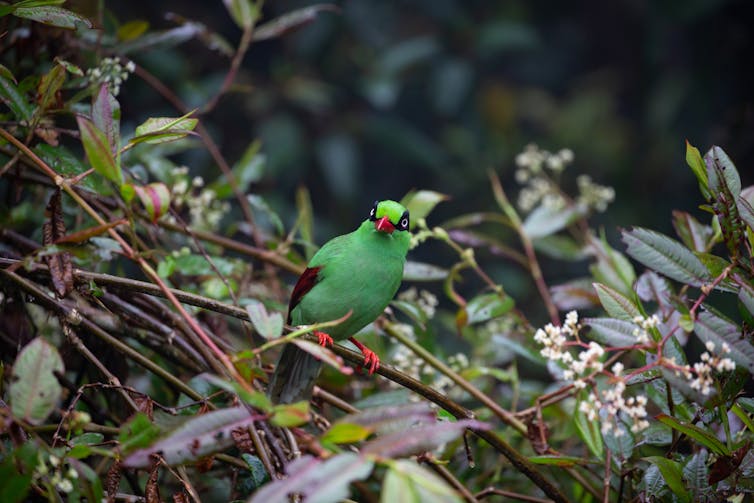
Colour By Numbers
How do you quantify colour? We started off using data on the red, green and blue values of the colours that make up each species’ plumage. This is a standard way to quantify colour, which readers might be familiar with from television screens, for example.
Each primary colour of red, green and blue takes a value ranging from the minimum of zero to the maximum of 255. And these so-called RGB values together denote a specific colour. For example, a bird with 255 red, 204 green, and 255 blue would appear pale pink.
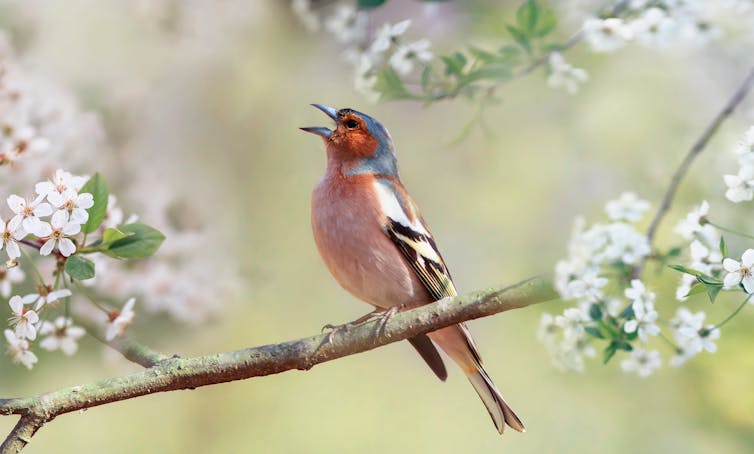
Unfortunately, you cannot easily identify and classify colours using these RGB values, so we converted them into colour categories using some simple maths. We used 15 categories, including the primary colours (red, green, blue), secondary colours (yellow, cyan, magenta), tertiary colours (orange, chartreuse green, spring green, azure, violet, rose), and the additional categories of brown, light (including white) and dark (including black).
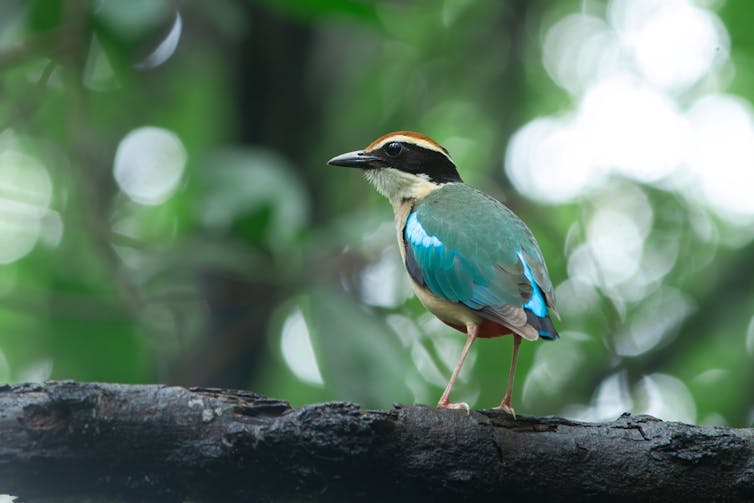
Using a 3D graph with one axis for red, one for green and one for blue, we plotted every species according to the colour of its plumage. This allows you to see how rare the colours of different species are, based on how far away their colour is from others in the 3D space.
For the entire community of birds occurring in a given location, you can also look at how many colours are represented by those species based on how much of the 3D space they occupy. This we refer to as colour diversity.
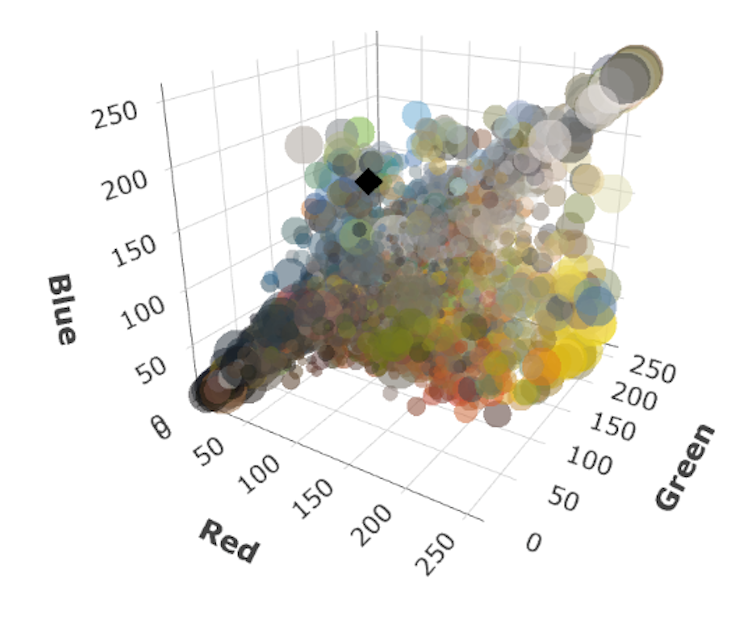
Species At Risk
Our results showed certain colour categories, such as azure and yellow, are more likely to be found on species that are traded than those that are not.
We believe that yellow is a common colour in the illegal wildlife trade partly because there are simply lots of species that are yellow. Azure, in contrast, is a colour found on far fewer species, but when it does occur it seems that it is highly likely to be on species that are heavily traded.
Other colours, such as brown, are less likely to be found on traded species compared with those that aren’t traded. Species with more unique colouration, such as pure white, have a generally higher probability of being traded.
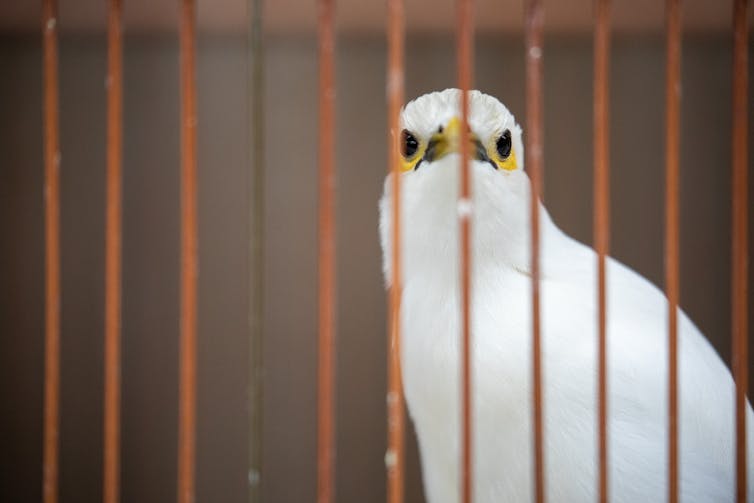
What does this all mean for biodiversity? We identified nearly 500 additional species that are not currently traded but are at risk of being traded in future based on their colour and how closely related they are to currently traded species.
Since the tropics contain the greatest diversity of colours, in terms of both the range of colours exhibited by songbirds and the number of colourful species, this is where most colours would be lost if all currently traded species went extinct. The loss of these species would mute nature’s colour palette, leading to generally drabber bird communities with less colour variety globally.
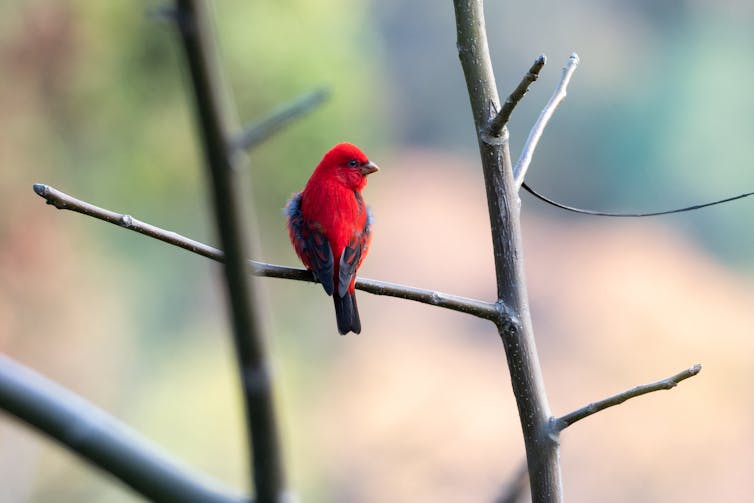
This is just the first step in understanding the aesthetic value that underlies the trade in songbirds. A better understanding of what motivates this trade can help identify species that could benefit from monitoring and trade regulation.
Equally, identifying, celebrating and conserving hotspots of colour diversity has the best chance of conserving the aesthetic value of colour, as well as the overall biodiversity boasted by the tropics.

Don’t have time to read about climate change as much as you’d like?
Get a weekly roundup in your inbox instead. Every Wednesday, The Conversation’s environment editor writes Imagine, a short email that goes a little deeper into just one climate issue. Join the 10,000+ readers who’ve subscribed so far.![]()
Rebecca Senior, Assistant Professor of Conservation Science, Durham University
This article is republished from The Conversation under a Creative Commons license. Read the original article.
Backcountry visitors are leaving poo piles in the Australian Alps – and it’s a problem
Pascal Scherrer, Southern Cross University; Isabelle Wolf, University of Wollongong, and Jen Smart, University of WollongongSpring has arrived in Australia’s Snowy Mountains. The snow is starting to melt. Wildflowers are emerging in a variety of colours: blues, yellows, whites … hang on. Those aren’t white flowers. They’re scrunched up bits of toilet paper left behind by skiers, boarders and snow-shoers.
When you think of backcountry snow adventures, you think of pristine wilderness. But unfortunately, there’s a problem: what to do with your poo. Many backcountry adventurers just squat, drop and don’t stop. The result, as we saw ourselves on an overnight ski trip, is a surprisingly large amount of poo and toilet paper. It’s become a bigger problem in recent years, as backcountry trips have boomed in places like the Main Range section of the Snowy Mountains.
Our new research explores this issue to find out how to better protect these wild areas. We surveyed backcountry visitors to Kosciuszko National Park in New South Wales and found a minority of visitors were carrying out their waste from overnight trips, as recommended. To combat the alpine poo scourge, we recommend building more toilets in strategic locations, making their location readily known, and giving out poo transport bags at entry points and gear shops.
If you’re sceptical, take heart – it wasn’t so long ago many people believed dog owners would never agree to scoop up their pet’s poo and bin it. But for the most part, they did.
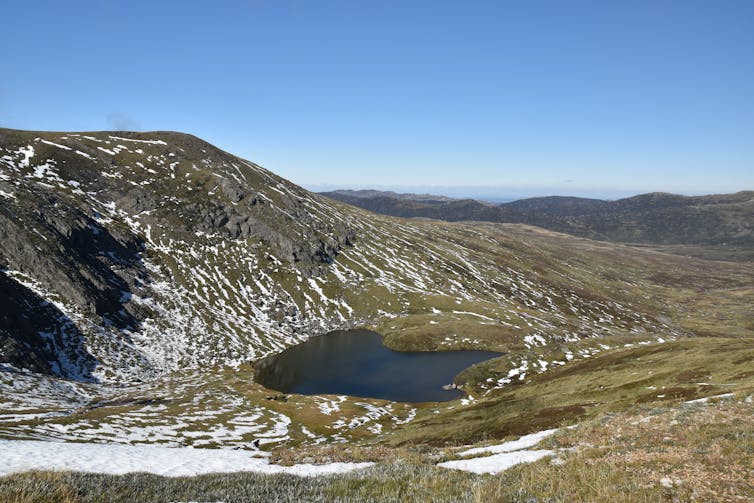
So What Are You Meant To Do With Snow Poo?
You might wonder why this matters. After all, aren’t our snow-covered mountains full of possums, wombats and wallabies, all of which poo? And can’t you bury your poo, like you can in other parts of Australia? The problem here is the snow. Human poo deposited in winter won’t decompose until spring. In popular areas, poo and toilet paper can pile up, which is an unpleasant visual for other visitors. And as the snow melts, it can carry poo into creeks, depositing cold-resistant viruses, bacteria like E. coli, and parasites such as giardia. If another skier eats contaminated snow or drinks the stream water, they can be infected.
That’s why backcountry visitors to Kosciuszko National Park are urged to carry out their poo in biodegradable bags or a home made poo tube (basically a sealable plastic pipe).
This, our survey of 258 visitors found, is not hugely popular. Only a third of highly experienced skiers on multi-day trips carry their poo out, while only a fifth of less experienced visitors did the same.
The options our multi-day skiers preferred were using a toilet at a hut, if available, or burying poo in the snow. This is not ideal – if you can’t carry it out, it’s preferable to bury it in exposed soil (ideally, at least 50 metres away from any water courses). Some visitors reported covering their waste with rocks.
Day visitors largely used toilets at the entry and exit points or at a resort, though around 10% reported burying their poo in the snow or using toilets at huts.
This means overall compliance with the carry-it-out policy is low.
But as one longtime backcountry visitor points out, it’s not actually hard – or disgusting – to carry it out:
It was easy. It was the most satisfying experience I have had, knowing that I had left no trace for the entire journey; the view, the ground, the creeks, the plants had been left unspoilt. No-one would have ever known I had been there. Carrying and taking it out went without mishap and finally disposing of my waste was not a problem.
What Can Be Done?
People prefer toilets as a tried and true method of removing poo. Installing new toilets is the most effective way to prevent open defecation. The problem is where to put them. Installing toilets in remote areas is a delicate matter, as many visitors may see them as taking away from the natural experience which is the major drawcard for backcountry visitors. It’s also expensive to maintain toilets in the snow, as they require helicopters or trucks to pump out the waste.
Other options include digging pit latrines, disposing of it into crevasses, burying in soil, snow or rocks, leaving it on the ground, burning it, or carrying it out in poo tubes or biodegradable bags. You can see why park authorities prefer carrying it out.
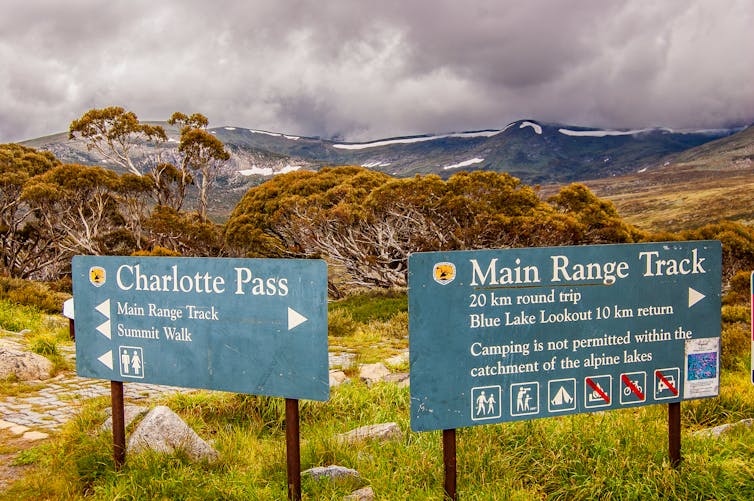
So how can we make it more inviting for visitors to pack their poo? Clearly, the present messaging isn’t fully effective. It’s time for a new approach, especially given the numbers of people heading to the backcountry is growing.
We recommend a two-pronged approach: better communication and targeted infrastructure at entry points.
Friends, websites and outdoor recreation clubs are important sources of information about how to undertake a backcountry trip. To harness these sources, parks authorities could work with the wider backcountry community on the issue, with simple, targeted messages.
By itself, messaging won’t be enough. That’s why we need more and improved toilets – and bins – at key locations, to make it as easy as possible for visitors to do the right thing with their poo.
Authorities should also make these locations clearly known on visitor maps and online, as well as making biodegradable bags or poo tubes available at entry points, information centres and gear shops.
If we get this right, backcountry skiers will once again be able to enjoy the wildflowers. Let’s aim for spring has sprung – not spring has dung. ![]()
Pascal Scherrer, Senior Lecturer, School of Business and Tourism, Southern Cross University; Isabelle Wolf, Vice Chancellor Senior Research Fellow, University of Wollongong, and Jen Smart, PhD student, University of Wollongong
This article is republished from The Conversation under a Creative Commons license. Read the original article.
There’s a huge surge in solar production under way – and Australia could show the world how to use it

You might feel despondent after reading news reports about countries doubling down on fossil fuels to cope with energy price spikes.
Don’t. It’s a blip. While the Russian invasion of Ukraine has led to a temporary fossil fuel resurgence, it also accelerated Europe’s renewable ambitions. And the United States and Australia have finally passed climate bills. This week, federal energy minister Chris Bowen announced “Australia is back” on climate action.
There’s better news too. In March this year, the world hit one terawatt of installed solar. By 2025, the world’s polysilicon factories are predicted to bounce back from supply shortages and churn out enough high-purity silicon for almost one terawatt of solar panels every year.
Coupled with major growth in wind, pumped hydro, energy storage, grid batteries and electric vehicles, the solar boom puts zero global emissions within reach before 2050.
Best of all – Australia could show the world how to add solar to their grid. You might not suspect it, but we’re the global leaders in finding straightforward solutions to the variability of solar power and wind. We’re showing that it’s easier to get carbon emissions out of electricity generation than many predicted.

Rapid, Deep And Cheap Emissions Reductions
This surge in the renewable supply chain allows sustained exponential growth that is already disrupting fossil fuel markets in some countries, notably Australia.
This year, global fossil fuel prices have skyrocketed in the wake of the Russian invasion of Ukraine. In turn, that’s generated intense interest in solar and wind energy to boost domestic energy security, particularly in Europe, which needs to wean itself off Russian gas.
While fossil fuels are concentrated in countries such as Russia, Saudi Arabia and Australia, solar and wind resources are widely distributed. Most countries can generate all their own energy from the sun and wind.
Europe could readily become energy independent, harnessing its enormous North Sea offshore wind resources and solar in the south. Even densely populated countries such as Japan and Indonesia have far more solar and wind resources than they need.
Solar and wind now provide the cheapest new electricity generation in most markets. As a bonus, the widespread uptake of solar and wind will eliminate many of our worst air pollutants and improve our health.
Why Are Solar And Wind Winning?
In a word, cost. Solar and wind have won the race for the energy of the future because they are cheap. Once built, the fuel is free, and does not need to be imported or dug up.
Wind and solar are being built three times faster than everything else combined. It follows they will dominate future energy markets as existing fossil fuel generators retire and electricity use grows rapidly.
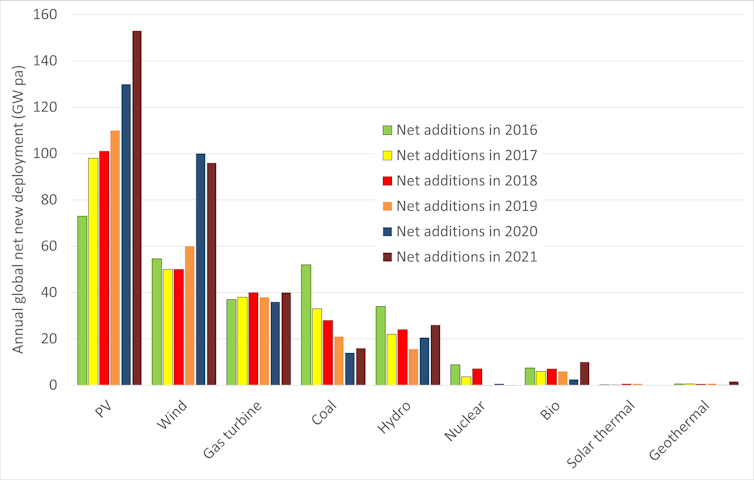
Nuclear generation hasn’t grown in the past decade. Coal and gas plants able to capture and store carbon have not got traction in the energy market. Hydroelectricity can’t expand much further. There will, however, be a huge market for off-river pumped hydro energy storage.
There are no serious technical, environmental or material constraints to solar power on any scale. However, solar has been hit by supply chain issues in recent months, with major price spikes in polysilicon. These are common to any rapidly growing industry, and should resolve as more suppliers see the opportunity and enter the market.
There Is Enough Land
Most of the world’s population live at moderate latitudes with good sunshine on most days. Here, solar is effectively unlimited. Those further north have abundant wind energy (particularly offshore wind) to offset weaker solar in winter.
Sceptics point out you need more land or sea to produce the same amount of electricity as fossil fuel plants. While true, solar farms can happily coexist with livestock and cropping to create a double income for farmers. The solar electricity needed to power the world and eliminate all fossil fuels can be generated from about 1% of the land area devoted to agriculture.
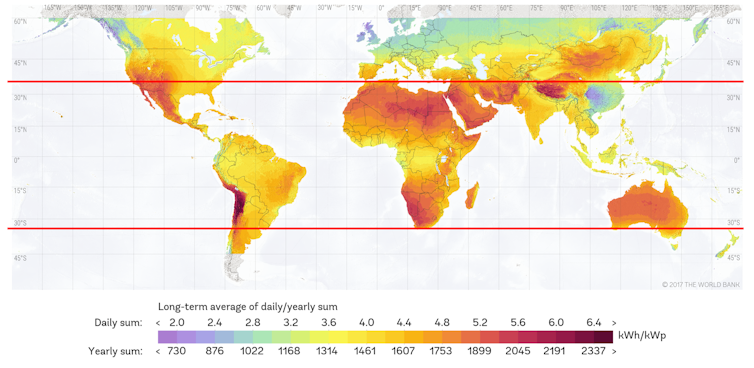
Once we have cheap clean electricity, we can use it to eliminate the use of fossil fuels altogether by electrifying nearly everything: transport, heating, industry and chemical production. This could reduce emissions by three quarters.
Global electricity production will need to rise sevenfold to about 200,000 terawatt-hours a year to give everyone the energy needed to reach developed nation living standards. But this is not all that hard over the next 30 years. And the alternative – keep pumping warming pollutants into the atmosphere – will make the lives of our children harder and harder.
Together, solar and wind have passed two terawatts of installed capacity. That means we’re about 2% of the way to reaching the almost 100 terawatts of solar and wind required to decarbonise the world, while raising living standards.
Annual solar deployment needs to double every four years to get the job done by 2050–60 – similar to the global growth rate achieved over the past decade.
Australia Can Show The Way
You might not think it, given the decade of political climate wars, but Australia is the world leader in terms of solar electricity produced per person.
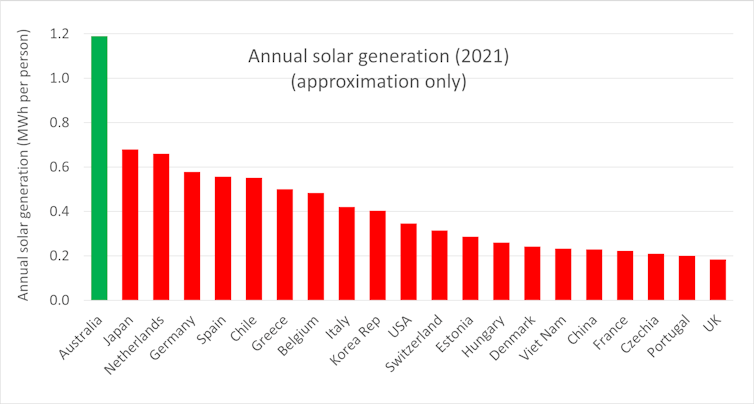
In Australia, solar and wind are booming while coal is rapidly falling. We’re already on track to reach 80-90% renewables by 2030. Remarkably, our per capita solar generation is twice as large as the second placed countries (Germany, Japan and the Netherlands) and far ahead of China and the USA.
Australia is quietly demonstrating how to accommodate huge new flows of cheap, clean electricity. The world will soon follow suit. ![]()
Andrew Blakers, Professor of Engineering, Australian National University
This article is republished from The Conversation under a Creative Commons license. Read the original article.
After the Voice, climate change commitments should be the next urgent constitutional reforms
Ron Levy, Australian National UniversityAfter decades of foot-dragging on climate change, Australia has finally put significant commitments in national legislation. It joins other countries such as Canada and the United States that also recently took big new legal steps.
The new laws may still not be enough, but they mark real progress. Yet, will such progress last or be short-lived?
As we saw with Australia’s carbon price law, which passed in 2011, a change of government can lead to a change in direction. And that direction may be broadly backwards.
For this reason I have, in recent research, called for a new kind of commitment to climate change mitigation: a set of clear numeric targets entrenched in our highest laws, namely our constitutions. Constitutions spell out our most sacrosanct commitments. They are hard to budge once enacted.
At the moment, the focus of constitutional change in Australia is on the recognition of Indigenous people in the First Nations Voice to Parliament – as it should be.
But we must also look over the horizon to the next challenges. After the Voice, climate change commitments should be the next urgent constitutional reform. The republic can wait; climate change cannot.
What Would It Look Like?
An ongoing emergency like climate change calls for an unwavering set of policy solutions well into the future. But a long-term policy – such as a target year for net-zero emissions – may struggle in a democratic system that can promise only occasional and precarious environmental protection.
Entrenching such policies in our national, state or territorial constitutions may help firm up our commitments to resolute action. But that depends on what constitutional climate action looks like.
Ideally it should specify a carbon emissions reduction target – as a minimum or “floor” – and a process for ratcheting up the target over time (similar to the international Paris Agreement). There should also be new enforcement bodies to review the carbon budgets of Australian governments.
On the one hand, if we took these constitutional steps we would be in good company. A majority of national constitutions already protect the environment. On the other, what I suggest here goes beyond most past examples. Most have been decidedly vague.
South Africa’s Bill of Rights, for instance, guarantees everyone the “right (a) to an environment that is not harmful to their health or well-being; and (b) to have the environment protected”.
Elsewhere, we see rights to a “healthy” environment, or obligations to “protect and improve” the environment.
Unfortunately, these constitutional laws reflect only broad aspirations. They don’t always lead to meaningful environmental protection. This is largely because short-term, myopic economic concerns often act as counterweights blocking effective environmental action. South Africa itself provides one example where courts balance environmental ideals in the constitution against economic factors.
What I call “fixed constitutional commitments” are precise constitutional guarantees, like carbon reduction targets. Since they fix a specific quantity of commitment, they can be resistant to the judicial balancing that usually neuters environmental constitutional clauses.
Precedents Abroad, And Even In Australia
While this idea is largely novel, it has some precedents. Bhutan, Kenya and New York State each specify a minimum amount of forest coverage. On this, New York was the trailblazer: the state’s constitutional protections for forests date back to 1894.
Just last year in Australia, Victoria constitutionally entrenched a ban on fracking. To do this Victoria used a simple legislative process for constitutional entrenchment available to each state under the Australia Act 1986.
This makes Victoria one of a handful of jurisdictions that have also set precise environmental targets in constitutional law. In this case, a commitment to zero fracking.
After the Victorian constitutional reform, one opposition member raised an important objection: that putting environmental policy in the constitution takes it out of the democratic sphere.
This is true to an extent. But there are important responses.
First, fixed constitutional commitments may correct failures of democracy. Elected representatives often represent the preferences of citizens on the environment weakly, at best.
And despite overwhelming popular support for a strong response to the climate emergency, many politicians worldwide oppose such responses – and not because they know better. Many believe their real constituents to be the businesses and other interests that underwrite electoral campaigns.
Moreover, the “climate wars” have long held Australia in legal limbo. We can’t take significant action on the climate as long as politicians can’t agree for long about what actions to take.
Before a community can begin to hash out new policy, it has to settle its basic policy priorities – such as net-zero carbon emissions by a given year. A democracy that’s stuck at the priority-setting stage can’t go on to work out the details of policy. And deliberation about policy details is where most of our democratic activity generally lies.
Fixing Democratic Failures On The Environment
There has been much talk in recent years about whether the world’s remaining democracies are too prone to division, and too weak to take action against long-term problems.
Can democratic systems still adequately address challenges – such as climate change – almost tailor-made for disinformation, political polarisation and gridlock? Or do we need new tools to avoid the policymaking quagmires that have so often kept democracies from tackling complex problems?
The best solutions will invent new ways of getting things done while preserving, and even improving, democracy. Fixed constitutional commitments on climate change may demonstrate a democratic society can indeed remain responsive to our most complex and urgent problems. ![]()
Ron Levy, Associate professor, Australian National University
This article is republished from The Conversation under a Creative Commons license. Read the original article.
Pittwater Reserves: Histories + Notes + Pictorial Walks
A History Of The Campaign For Preservation Of The Warriewood Escarpment by David Palmer OAM and Angus Gordon OAM
America Bay Track Walk - photos by Joe Mills
An Aquatic June: North Narrabeen - Turimetta - Collaroy photos by Joe Mills
Angophora Reserve Angophora Reserve Flowers Grand Old Tree Of Angophora Reserve Falls Back To The Earth - History page
Annie Wyatt Reserve - A Pictorial
Avalon's Village Green: Avalon Park Becomes Dunbar Park - Some History + Toongari Reserve and Catalpa Reserve
Bairne Walking Track Ku-Ring-Gai Chase NP by Kevin Murray
Bangalley Headland Bangalley Mid Winter
Banksias of Pittwater
Barrenjoey Boathouse In Governor Phillip Park Part Of Our Community For 75 Years: Photos From The Collection Of Russell Walton, Son Of Victor Walton
Barrenjoey Headland: Spring flowers
Barrenjoey Headland after fire
Bayview Baths
Bayview Wetlands
Beeby Park
Bilgola Beach
Botham Beach by Barbara Davies
Bungan Beach Bush Care
Careel Bay Saltmarsh plants
Careel Bay Birds
Careel Bay Clean Up day
Careel Bay Playing Fields History and Current
Careel Creek
Careel Creek - If you rebuild it they will come
Centre trail in Ku-ring-gai Chase National Park
Chiltern Track- Ingleside by Marita Macrae
Clareville Beach
Clareville/Long Beach Reserve + some History
Coastal Stability Series: Cabbage Tree Bay To Barrenjoey To Observation Point by John Illingsworth, Pittwater Pathways, and Dr. Peter Mitchell OAM
Cowan Track by Kevin Murray
Curl Curl To Freshwater Walk: October 2021 by Kevin Murray and Joe Mills
Currawong and Palm Beach Views - Winter 2018
Currawong-Mackerel-The Basin A Stroll In Early November 2021 - photos by Selena Griffith
Currawong State Park Currawong Beach + Currawong Creek
Deep Creek To Warriewood Walk photos by Joe Mills
Drone Gives A New View On Coastal Stability; Bungan: Bungan Headland To Newport Beach + Bilgola: North Newport Beach To Avalon + Bangalley: Avalon Headland To Palm Beach
Duck Holes: McCarrs Creek by Joe Mills
Dunbar Park - Some History + Toongari Reserve and Catalpa Reserve
Dundundra Falls Reserve: August 2020 photos by Selena Griffith - Listed in 1935
Elsie Track, Scotland Island
Elvina Track in Late Winter 2019 by Penny Gleen
Elvina Bay Walking Track: Spring 2020 photos by Joe Mills
Elvina Bay-Lovett Bay Loop Spring 2020 by Kevin Murray and Joe Mills
Fern Creek - Ingleside Escarpment To Warriewood Walk + Some History photos by Joe Mills
Iluka Park, Woorak Park, Pittwater Park, Sand Point Reserve, Snapperman Beach Reserve - Palm Beach: Some History
Ingleside
Ingleside Wildflowers August 2013
Irrawong - Ingleside Escarpment Trail Walk Spring 2020 photos by Joe Mills
Irrawong - Mullet Creek Restoration
Katandra Bushland Sanctuary - Ingleside
Lucinda Park, Palm Beach: Some History + 2022 Pictures
McCarrs Creek
McCarr's Creek to Church Point to Bayview Waterfront Path
McKay Reserve
Mona Vale Beach - A Stroll Along, Spring 2021 by Kevin Murray
Mona Vale Headland, Basin and Beach Restoration
Mount Murray Anderson Walking Track by Kevin Murray and Joe Mills
Mullet Creek
Narrabeen Creek
Narrabeen Lagoon Catchment: Past Notes Present Photos by Margaret Woods
Narrabeen Lagoon State Park
Narrabeen Lagoon State Park Expansion
Narrabeen Rockshelf Aquatic Reserve
Nerang Track, Terrey Hills by Bea Pierce
Newport Bushlink - the Crown of the Hill Linked Reserves
Newport Community Garden - Woolcott Reserve
Newport to Bilgola Bushlink 'From The Crown To The Sea' Paths: Founded In 1956 - A Tip and Quarry Becomes Green Space For People and Wildlife
Pittwater spring: waterbirds return to Wetlands
Pittwater's Lone Rangers - 120 Years of Ku-Ring-Gai Chase and the Men of Flowers Inspired by Eccleston Du Faur
Pittwater's Parallel Estuary - The Cowan 'Creek
Resolute Track at West Head by Kevin Murray
Resolute Track Stroll by Joe Mills
Riddle Reserve, Bayview
Salvation Loop Trail, Ku-Ring-Gai Chase National Park- Spring 2020 - by Selena Griffith
Seagull Pair At Turimetta Beach: Spring Is In The Air!
Stapleton Reserve
Stapleton Park Reserve In Spring 2020: An Urban Ark Of Plants Found Nowhere Else
Stony Range Regional Botanical Garden: Some History On How A Reserve Became An Australian Plant Park
The Chiltern Track
The Resolute Beach Loop Track At West Head In Ku-Ring-Gai Chase National Park by Kevin Murray
Topham Track Ku-Ring-Gai Chase NP, August 2022 by Joe Mills and Kevin Murray
Towlers Bay Walking Track by Joe Mills
Trafalgar Square, Newport: A 'Commons' Park Dedicated By Private Landholders - The Green Heart Of This Community
Tranquil Turimetta Beach, April 2022 by Joe Mills
Turimetta Beach Reserve by Joe Mills, Bea Pierce and Lesley
Turimetta Beach Reserve: Old & New Images (by Kevin Murray) + Some History
Turimetta Headland
Warriewood Wetlands and Irrawong Reserve
Whale Beach Ocean Reserve: 'The Strand' - Some History On Another Great Protected Pittwater Reserve
Wilshire Park Palm Beach: Some History + Photos From May 2022
Winji Jimmi - Water Maze

New Shorebirds WingThing For Youngsters Available To Download
A Shorebirds WingThing educational brochure for kids (A5) helps children learn about shorebirds, their life and journey. The 2021 revised brochure version was published in February 2021 and is available now. You can download a file copy here.
If you would like a free print copy of this brochure, please send a self-addressed envelope with A$1.10 postage (or larger if you would like it unfolded) affixed to: BirdLife Australia, Shorebird WingThing Request, 2-05Shorebird WingThing/60 Leicester St, Carlton VIC 3053.

 Shorebird Identification Booklet
Shorebird Identification Booklet
The Migratory Shorebird Program has just released the third edition of its hugely popular Shorebird Identification Booklet. The team has thoroughly revised and updated this pocket-sized companion for all shorebird counters and interested birders, with lots of useful information on our most common shorebirds, key identification features, sighting distribution maps and short articles on some of BirdLife’s shorebird activities.
The booklet can be downloaded here in PDF file format: http://www.birdlife.org.au/documents/Shorebird_ID_Booklet_V3.pdf
Paper copies can be ordered as well, see http://www.birdlife.org.au/projects/shorebirds-2020/counter-resources for details.
Download BirdLife Australia's children’s education kit to help them learn more about our wading birdlife
Shorebirds are a group of wading birds that can be found feeding on swamps, tidal mudflats, estuaries, beaches and open country. For many people, shorebirds are just those brown birds feeding a long way out on the mud but they are actually a remarkably diverse collection of birds including stilts, sandpipers, snipe, curlews, godwits, plovers and oystercatchers. Each species is superbly adapted to suit its preferred habitat. The Red-necked Stint is as small as a sparrow, with relatively short legs and bill that it pecks food from the surface of the mud with, whereas the Eastern Curlew is over two feet long with a exceptionally long legs and a massively curved beak that it thrusts deep down into the mud to pull out crabs, worms and other creatures hidden below the surface.
Some shorebirds are fairly drab in plumage, especially when they are visiting Australia in their non-breeding season, but when they migrate to their Arctic nesting grounds, they develop a vibrant flush of bright colours to attract a mate. We have 37 types of shorebirds that annually migrate to Australia on some of the most lengthy and arduous journeys in the animal kingdom, but there are also 18 shorebirds that call Australia home all year round.
What all our shorebirds have in common—be they large or small, seasoned traveller or homebody, brightly coloured or in muted tones—is that each species needs adequate safe areas where they can successfully feed and breed.
The National Shorebird Monitoring Program is managed and supported by BirdLife Australia.
This project is supported by Glenelg Hopkins Catchment Management Authority and Hunter Local Land Services through funding from the Australian Government’s National Landcare Program. Funding from Helen Macpherson Smith Trust and Port Phillip Bay Fund is acknowledged.
The National Shorebird Monitoring Program is made possible with the help of over 1,600 volunteers working in coastal and inland habitats all over Australia.
The National Shorebird Monitoring program (started as the Shorebirds 2020 project initiated to re-invigorate monitoring around Australia) is raising awareness of how incredible shorebirds are, and actively engaging the community to participate in gathering information needed to conserve shorebirds.
In the short term, the destruction of tidal ecosystems will need to be stopped, and our program is designed to strengthen the case for protecting these important habitats.
In the long term, there will be a need to mitigate against the likely effects of climate change on a species that travels across the entire range of latitudes where impacts are likely.
The identification and protection of critical areas for shorebirds will need to continue in order to guard against the potential threats associated with habitats in close proximity to nearly half the human population.
Here in Australia, the place where these birds grow up and spend most of their lives, continued monitoring is necessary to inform the best management practice to maintain shorebird populations.
BirdLife Australia believe that we can help secure a brighter future for these remarkable birds by educating stakeholders, gathering information on how and why shorebird populations are changing, and working to grow the community of people who care about shorebirds.
To find out more visit: http://www.birdlife.org.au/projects/shorebirds-2020/shorebirds-2020-program
Aussie Bread Tags Collection Points

Spring School Holidays 2022
We hope all of you who have been part of Year 12 Graduation ceremonies and Formals this week have had a great time
We also hop you all have a wonderful school holidays break. We will run another Issue next Sunday, October 2nd, and then have No Issue on Sunday October 9th so we can spend some time with our own youngsters in the week leading up to that Sunday. We've loaded up your page with some fun stuff this week and will do so again next week; some of your regular sections will stay as is until the break. We will get back to more serious subjects after the Spring School Holidays. Have a great break!
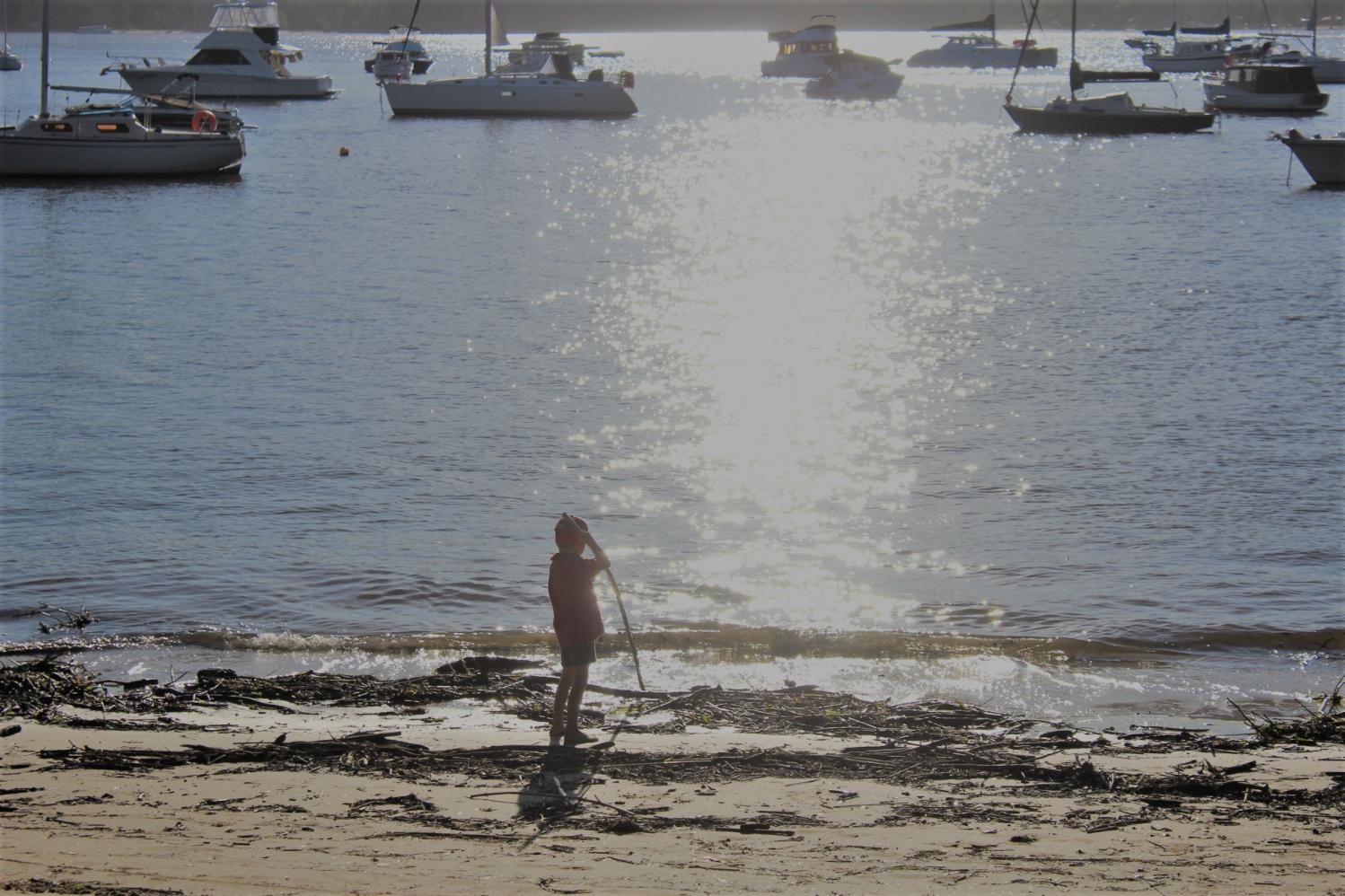
Year 12 Performance Showcase 2022
School Leavers Support
- Download or explore the SLIK here to help guide Your Career.
- School Leavers Information Kit (PDF 5.2MB).
- School Leavers Information Kit (DOCX 0.9MB).
- The SLIK has also been translated into additional languages.
- Download our information booklets if you are rural, regional and remote, Aboriginal or Torres Strait Islander, or living with disability.
- Support for Regional, Rural and Remote School Leavers (PDF 2MB).
- Support for Regional, Rural and Remote School Leavers (DOCX 0.9MB).
- Support for Aboriginal and/or Torres Strait Islander School Leavers (PDF 2MB).
- Support for Aboriginal and/or Torres Strait Islander School Leavers (DOCX 1.1MB).
- Support for School Leavers with Disability (PDF 2MB).
- Support for School Leavers with Disability (DOCX 0.9MB).
- Download the Parents and Guardian’s Guide for School Leavers, which summarises the resources and information available to help you explore all the education, training, and work options available to your young person.
School Leavers Information Service
- navigate the School Leavers Information Kit (SLIK),
- access and use the Your Career website and tools; and
- find relevant support services if needed.
National Bird Week + Aussie Bird Count 2022
HSC Online Help Guides
Stay Healthy - Stay Active: HSC 2022
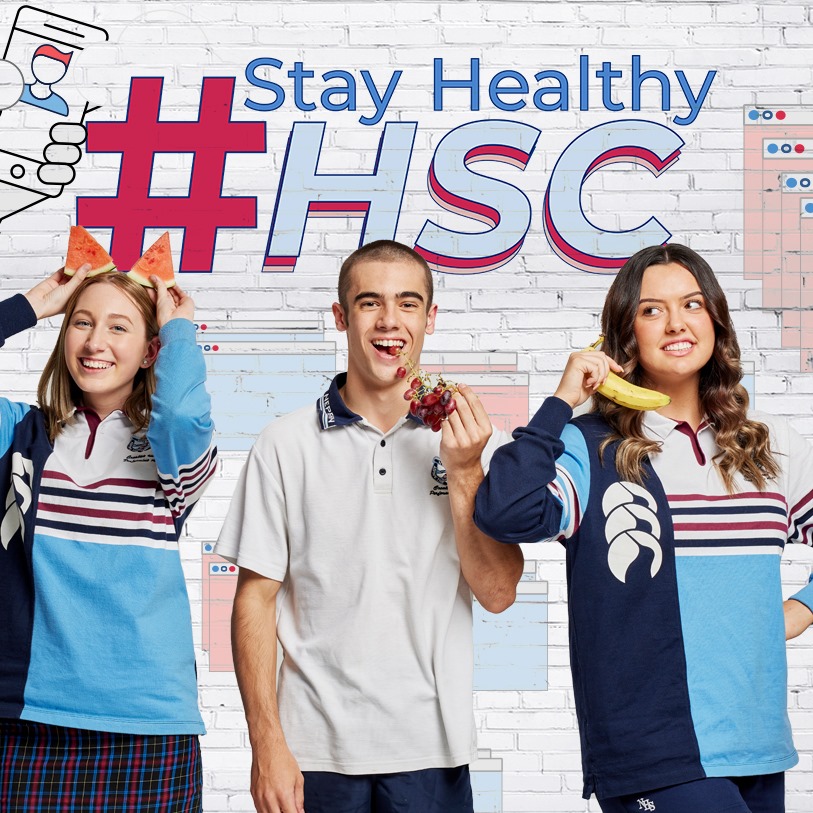
Preparing for exam season: 10 practical insights from psychology to help teens get through

Exam season is fast approaching for many senior students in New Zealand and Australia. At the best of times, adolescents may struggle with ambition and drive, let alone after two-and-a-half years of COVID-induced disruption and uncertainty.
But parents can still nurture their teens’ motivation to do what they need to do.
Behind the scenes, the adolescent period is one of huge developmental change, and not only physically. Teens are developing their sense of identity and refining their own values. Their autonomy and individuation is emerging while they still remain somewhat dependent on the family system.
Parents may expect their young people to be intrinsically motivated when it comes to exams. The importance of studying is obvious to many adults. But even the most diligent among us can easily identify behaviours we know we should be doing, but aren’t.
Clearly, knowing that something is important may not be enough to generate the desired behaviour.
Understanding Human Behaviour
According to clinical psychologist Susan Michie and her colleagues at University College London, three factors interact to produce any human behaviour, whether it’s studying or surfing: capability, opportunity and motivation.
Michie’s team developed the “COM-B” model, which forms the basis for behavioural interventions relating to everything from hand washing to our own efforts to support clinicians to use evidence-based treatments.
Capability (both physical and psychological), opportunity (physical and social) and motivation come together to influence behaviour in an interactive way.
For example, if a young person is very capable (or believes themselves to be very capable) at solving maths equations, those around them are supportive or encouraging (social opportunity), and they have the practical resources they need (physical opportunity), they’re likely to want to do maths homework (be motivated).
Conversely, imagine a young person who starts the school term really motivated to study for two hours online every night, but only has access to the laptop at school (limited physical opportunity), still has fatigue after an illness (limited physical capability), and is surrounded by friends who have other priorities (low social opportunity). Herculean motivation may be required in this situation.
How Parents Can Support Their Teen To Study
Put simply, parents should “zoom out”. Motivation can’t be produced magically out of thin air, and attempts to force it can have the opposite effect. But parents can support and encourage their young person’s capability and opportunity to study.
1. Motivation fluctuates
Motivation is not something that is simply present or absent. It fluctuates from hour to hour, day to day. So rather than “how can I make him be motivated today?”, a more useful question is “how can I create an environment where he’ll be a bit more motivated than he was last night?”
2. Good foundations
Remember the basics, for teens and parents alike – sleep, exercise and balanced nutrition. If these are in place, it’ll help both physical and psychological capability.
3. Balanced thinking promotes capability
A sense of mastery or capability is important. Stressed teens can fall into black and white thinking traps. “I’m useless at maths” fuels feeling overwhelmed and a sense of futility.
Instinctively, it’s tempting to reply with “no you’re not, you’re amazing!” But that’ll likely bounce right off. Instead, try to encourage your teen’s balanced thinking. “Stats is hard, but I’m okay at algebra and geometry”.
4. Focusing on what teens can control
Praise effort over achievement. Persisting with an hour a day of English revision for six weeks deserves as much acknowledgement as winning the English prize (and unlike the prize, it is within your teen’s control).

5. Reinforcing their worth, no matter what
Likewise, be sure to separate your teen’s attributes (who they are) from their behaviour (what they do). They’re not a “lazy” person, but there are particular behaviours they may need to do more (or do less).
6. Behaviour as communication
If young people are irritable or snappy, try to hold in mind that this anger or irritation is likely to be secondary to other emotions, like anxiety, hopelessness or overwhelm. It’s probably not about you.
7. Worry might have a purpose
Lots of anxiety may be incapacitating, but some anxiety in this season makes sense, and a little bit can actually enhance preparation and performance. Paradoxically, perfectionism isn’t always useful.

8. Validate what you can
Try to validate the emotion, even if the behaviour can’t be justified. Perhaps reflect that it makes perfect sense that things feel overwhelming, many people would feel that way in that situation, and then pause.
It’s tempting to rush to solve the problem, or rapidly fire questions. But often young people just need to be given permission to feel the feeling, and they can sometimes figure out the solution themselves.
9. Collaborating to solve problems
Similarly, try to avoid doing “to” (or “for”), instead aiming to do “with”. Collaborating to solve problems (if they want input) may develop or enhance future independent problem-solving abilities. It also communicates your belief in their capability to do so.
10. Acknowledge to create habits
Parents might consider using targeted, short-term incentives (we don’t see these as bribes, but recognition of hard work or effort) to create new habits or reinforce emerging behaviours.
Finally, try to hold a longer-term view. One exam, one assessment, won’t make or break things. Families and cultures may hold a range of values around what a successful life looks like, but it usually involves more than just exam success.
Good health, connection with others, and meaning or purpose are fundamental to success in life. Try to keep this in mind over the next few months, even if the going gets tough.![]()
Melanie Woodfield, Clinical Psychologist, Te Whatu Ora | HRC Clinical Research Training Fellow, University of Auckland, University of Auckland and Jin Russell, Community and Developmental Paediatrician, University of Auckland
This article is republished from The Conversation under a Creative Commons license. Read the original article.
2023 Year 12 School Scholarship Program Now Open: DYRSL

Securing A Brighter Future For Disadvantaged Youth
The Unique Power Of Australian Seaweed
By BBC newsreel
Be The Boss: I Want To Be A Marine Electrician - New Subject After School Holidays
- Troubleshoot wiring and other electrical systems on marine equipment and make repairs
- Test low and high-voltage circuit systems for safety
- Work on power generators or other alternative sources of energy, like solar or wind power
- Wire and test the alarm and communication systems
- Monitor for potential electrical voltage threats
- Design and update bonding systems to protect the ship against weather elements
- Protect the boat's equipment using drip loops and heat shrinks
- Interpret and write technical reports and estimate repair costs
- Install wiring and electrical equipment when building new ships
- Install and configure generators
- Test marine electrical equipment like voltmeters and oscilloscopes for efficiency
- Electrical power generation and distribution
- The ship's boats engine and steering systems
- Propulsion systems (gas turbines, diesel and electrical engines, gear boxes, propellers, thrusters, and positioning systems)
- Electrical systems (alternators, batteries, charging systems, electrical switchboards, and corrosion protection systems)
- Auxiliary engineering systems (air-conditioning, refrigeration, generators, air compressor systems, stabilisers, winches, and cranes)
- Hull structures and fittings
- Free medical and dental
- Competitive salary package
- Incremental salary increases as you progress through training and ranks
- 16.4% superannuation
- Job security
- Career progression and development
- Good work/life balance
- Travel opportunities
- Excellent social and fitness facilities
- Subsidised housing
- Balance of shore and sea postings
- Great chef made meals at sea
- Variety of allowances
- Technical: Working as a marine electrician involves a lot of technical work. You will need to troubleshoot the electrical system, rewire systems and install equipment in the ship.
- Mechanical: Good mechanical skills are also useful as you will use certain tools and machinery to install and repair systems. A basic understanding of mechanics can be helpful.
- Problem-solving: A big part of the job of a marine electrician is identifying electrical problems and repairing them. This involves good troubleshooting skills and the ability to quickly come up with a solution.
- Project management: Marine electricians will often manage multiple projects at one time. They may complete projects for different ships and will need to manage time and delegate tasks.
- Knowledge of electrical systems: A good working knowledge of electrical systems in ships is important. In addition to reading and navigating electrical blueprints, marine electricians will need to know where to find certain access points and wires.
- Coast guard: Some marine electricians may choose to work with the U.S. government on military ships. If this is your preferred route, you may need special coast guard training.
- Knowledge of circuit breakers, transformers and high-voltage control panels: Working as a marine electrician, you are likely to work with each of these things. An apprenticeship can be a good way to learn these areas in-depth.
- Knowledge of certain safety protocols: Up-to-date safety protocols are needed as marine electricians often work on electrical systems near water. Knowledge of emergency protocols is needed.
Also Available:
- Be The Boss: I want To Be A Cabinet Maker
- Be The Boss: I Want To Be An Automotive Mechanic
- Be The Boss: I Want To Be A Biotechnologist
- Be The Boss: I Want To Be A Pilot
- Be The Boss: I Want To Be A Music Producer
- Be The Boss: I Want To Be A Gardener
- Be The Boss: I Want To Be A Builder
- Be The Boss: I Want To Be A Confectioner
- Be The Boss: I Want To Be A Ship's Captain
Word Of The Week: Toll - New Word After School Holidays
noun
1. a charge payable to use a bridge or road. 2.the number of deaths or casualties arising from a natural disaster, conflict, accident, etc.
verb
1. (of a large bell) to ring slowly and repeatedly, or to cause a large bell to ring in this way.
A death knell is the ringing of a church bell immediately after a death to announce it. Historically it was the second of three bells rung around death, the first being the passing bell to warn of impending death, and the last was the lych bell or corpse bell, which survives today as the funeral toll.In England, an ancient custom was the ringing of bells at three specific times before and after death. Sometimes a passing bell was first rung when the person was still dying, then the death knell upon the death,and finally the lych bell, which was rung at the funeral as the procession approached the church. The ringing of the lych bell is now called the funeral toll. The canon law of the Church of England also permitted tolling after the funeral.
During the reign of Henry VIII and Elizabeth I, statutes regulated death knell, but the immediate ringing after death fell into disuse. It was customary in some places by the end of the 19th century to ring the death knell as soon as notice reached the clerk of the church (parish clerk) or sexton, unless the sun had set, in which case it was rung at an early hour the following morning. Elsewhere, it was customary to postpone the death knell and tellers to the evening preceding the funeral, or early in the morning on the day of the funeral to give warning of the ceremony.
The use of the passing bell for sick persons is indicated in the advertisements of Queen Elizabeth in 1564: "[W]here any Christian bodie is in passing, that the bell be tolled, and that the curate be specially called for to comfort the sick person".
Sometimes the age of the departed was signified by the number of chimes (or strokes) of the bell. This practice still persists in many places - the recent funeral of Her Majesty Queen Elizabeth II saw 96 tolls or peals of Big Ben to signify her 96 years of life.
This is shown again in the 1940 published novel For Whom the Bell Tolls by Ernest Hemingway. It tells the story of Robert Jordan, a young American volunteer attached to a Republican guerrilla unit during the Spanish Civil War. As a dynamiter, he is assigned to blow up a bridge during an attack on the city of Segovia.
The book's title is taken from the metaphysical poet John Donne's series of meditations and prayers on health, pain, and sickness (written while Donne was convalescing from a nearly fatal illness) published in 1624 as Devotions upon Emergent Occasions, specifically Meditation XVII. Hemingway quotes part of the meditation (using Donne's original spelling) in the book's epigraph. Donne refers to the practice of funeral tolling, universal in his time:
No man is an Island, intire of it selfe; every man is a piece of the Continent, a part of the maine; if a Clod bee washed away by the Sea, Europe is the lesse, as well as if a Promontorie were, as well as if a Mannor of thy friends or of thine owne were; any mans death diminishes me, because I am involved in Mankinde; And therefore never send to know for whom the bell tolls; It tolls for thee.
The use of "tellers" to denote the sex was almost universal. For instance in the greater number of churches in the counties of Kent and Surrey they used the customary number of tellers, viz., three times three strokes for a man, and three times two for a woman; with a varying usage for children. The word "tellers" became changed into "Tailors".
The funeral tolling of a bell is the technique of sounding a single bell very slowly, with a significant gap between strikes. It is used to mark the death of a person at a funeral or burial service. The expression "tolling" is derived from the English tradition of "telling" of the death by signalling with a bell. The term tolling may also be used to signify a single bell being rung slowly, and possibly half-muffled at a commemoration event many years later. Tolling is typically used for tenor bells in change ringing, it also applies to bourdon bells as well in a bell tower or cathedral.
Compare the invoking of silence instead of tolls denoting years:
Stop all the clocks
'Stop all the clocks, cut off the telephone'
Stop all the clocks, cut off the telephone,
Prevent the dog from barking with a juicy bone,
Silence the pianos and with muffled drum
Bring out the coffin, let the mourners come.
Let aeroplanes circle moaning overhead
Scribbling on the sky the message He Is Dead,
Put crepe bows round the white necks of the public doves,
Let the traffic policemen wear black cotton gloves.
He was my North, my South, my East and West,
My working week and my Sunday rest,
My noon, my midnight, my talk, my song;
I thought that love would last for ever: I was wrong.
The stars are not wanted now: put out every one;
Pack up the moon and dismantle the sun;
Pour away the ocean and sweep up the wood;
For nothing now can ever come to any good.
W H Auden
"Funeral Blues", or "Stop all the clocks", is a poem by W. H. Auden which first appeared in the 1936 play The Ascent of F6. Auden substantially rewrote the poem several years later as a cabaret song for the singer Hedli Anderson. Both versions were set to music by the composer Benjamin Britten. The second version was first published in 1938 and was titled "Funeral Blues" in Auden's 1940 Another Time. The poem experienced renewed popularity after being read in the film Four Weddings and a Funeral (1994), which also led to increased attention on Auden's other work. It has since been cited as one of the most popular modern poems in the United Kingdom.
Toll - From Middle English toll, tol, tolle, from Old English toll (“toll, duty, custom”), from Proto-Germanic *tullō (“what is counted or told”), from Proto-Indo-European *dol- (“calculation, fraud”). Cognate with Saterland Frisian Tol (“toll”), Dutch tol (“toll”), German Zoll (“toll, duty, customs”), Danish told (“toll, duty, tariff”), Swedish tull (“toll, customs”), Icelandic tollur (“toll, customs”). More at tell, tale.
Alternate etymology derives Old English toll, from Medieval Latin tolōneum, tolōnium, alteration (due to the Germanic forms above) of Latin telōneum, from Ancient Greek (telṓnion, “toll-house”), from τέλος (télos, “tax”).
Toll (bell peal) ME tollen to entice, lure, pull, hence prob. to make (a bell) ring by pulling a rope; akin to OE -tyllan, in fortyllan to attract, allure
'Holiday' Tunes To Dance By
‘Like walking into a crystal’: our first preview of the Art Gallery of NSW’s new Sydney Modern
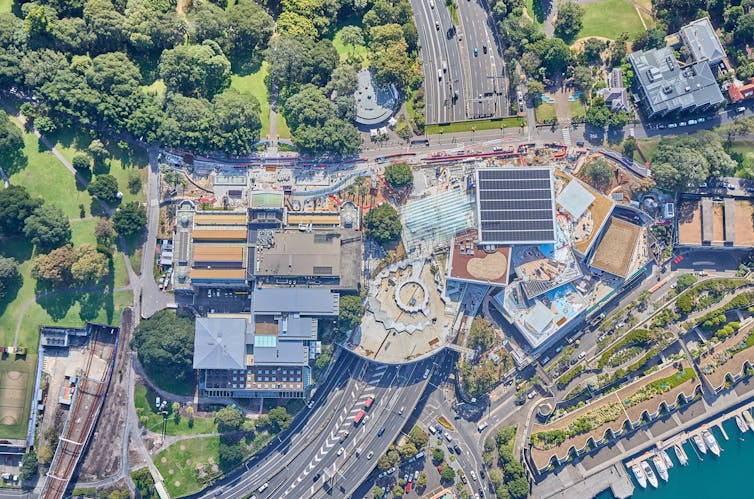
In 1972, when the Art Gallery of New South Wales opened its first modern building, it was rightly praised for its innovative design.
Architect Andrew Andersons incorporated the latest aspects of museum architecture. The egg crate ceilings were designed to reduce noise for people walking on its marble floors. There were moveable screens that looked like walls and adjustable light levels for fragile art.
But where the building faced Sydney Harbour, Andersons placed a giant window. The intrusion of reality into art connected visitors to the world outside.
It was revolutionary for the time, a marked contrast to the giant granite box of the National Gallery of Victoria, opening in 1968. The Melbourne building had followed the standard model of museum design of eliminating windows to maximise hanging space.
Just over 50 years later, the Sydney Modern expansion under architecture firm SANAA could be described as putting Andersons’ approach on steroids. It will open in December but in recent weeks small groups of visitors have been given preview tours, while installation crews make the finishing touches.
A Gallery For Indigenous Art
The relationship of Sydney Modern to the older building echoes Andersons’ uncompromising but sympathetic linking of his 1972 construction to the original Grand Courts designed by Walter Liberty Vernon.
The new link between the two buildings includes an installation honouring the history of Country by Wiradjuri and Kamilaroi artist Jonathan Jones.
This new building is very aware of its physical and spiritual location. It is dominated by the light from its soaring glass walls. The ground floor entrance feels like walking into a crystal.
In a nod to Andersons’ first glorious window, the Yiribana gallery of Indigenous art has a window facing the harbour so visitors can see where the Gadigal ancestors first witnessed the arrival of convicts in 1788.
The relocation of Yiribana from the basement of the older building is a physical manifestation of the significant shift in Australia’s understanding of its culture.
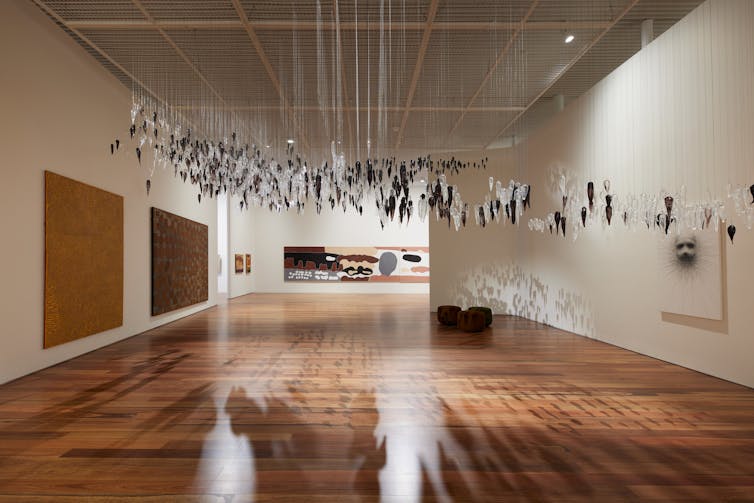
In 1958, the gallery’s deputy director Tony Tuckson facilitated collector and surgeon Stuart Scougall’s gift of Tiwi Pukumani grave posts. For the first time Indigenous work was shown as art and not anthropological artefact.
In 1972 there was a temporary exhibit of Yirrkala bark paintings and figures, but this was soon replaced with another temporary exhibition.
In late 1973, funding from the arts programs associated with the opening of the Sydney Opera House enabled a permanent installation of Melanesian art, another gift from Scougall. It was accompanied by what the trustees thought would be a temporary exhibition of Aboriginal art.
Tuckson died while the exhibition was being installed and it remained on view, in a dark little space at the bottom of the gallery’s marble stairs, until about 1980.
In 1983, Djon Mundine curated a temporary exhibition of bark paintings and the following year was appointed as part-time curator, but there was little official interest in Aboriginal art by the gallery.
The big shift came in 1991 when Hetti Perkins curated another temporary exhibition, this time of previously little-known Aboriginal women artists.
Perkins’ achievement was especially appreciated by Mollie Gowing, one of the volunteer guides.
Starting in 1992, Gowing collaborated with Perkins to privately fund the gallery’s major collection of contemporary Indigenous art.
In 1994, on the initiative of then NSW Minister for the Arts Peter Collins, the gallery opened Yiribana, its first permanent dedicated exhibition space for Aboriginal and Torres Strait Islander art.
This basement had previously been the offices and working area for the public programs department and was not an especially sympathetic space for art. It was well over a decade before Indigenous art began to be integrated into other exhibits of Australian art.

The relocation of Yiribana to Sydney Modern can be seen as the gallery’s affirmation of the importance of Indigenous cultures to any understanding of what Australia may be.
Cultural Exchange
In 1972 when the newly opened gallery wanted to show its best art to the world, the main gallery was dominated by art from the United States. All eyes were drawn to Morris Louis’ Ayin.
That same space now has work by Sol LeWitt in visual conversation with Emily Kame Kngwarreye and Gloria Tamerre Petyarre.

The integration of Australian art with art from the rest of the world is a reflection of historic reality. Last century was a time of mass travel and cultural exchange, when many national barriers were breached, especially in the arts.
Sydney Modern, combined with the reconfiguring of the 20th century exhibits in the older building, is a quiet repudiation of that cultural cringe which persists in seeing Australian culture as some kind of backwater.
Although most of Sydney Modern is filled with light, its most surprising space is buried in dark.
During the second world war, when the navy fleet needed to refuel at Garden Island, the Australian government secretly built a giant underground fuel storage tank, its true depth hidden below the water line.
Now a spiral staircase leads the visitor to the Tank, a magical space of oil-stained columns and echoing sounds. Right now it is empty, but within weeks the Argentine-Peruvian artist, Adrián Villar Rojas will begin to create a new work, The End of Imagination.

There are two meanings to the title. One suggests imagination is now dead. However, by being placed at the core of such an inspirational space it seems Rojas may be suggesting a culmination of imagination, a questioning of what imagination may be in these days of the Anthropocene.
The work is not yet made. As with the rest of the art that will fill this magical space, we will have to wait and see.![]()
Joanna Mendelssohn, Honorary (Senior Fellow) School of Culture and Communication University of Melbourne. Editor in Chief, Design and Art of Australia Online, The University of Melbourne
This article is republished from The Conversation under a Creative Commons license. Read the original article.
A kung-fu kick led researchers to the world’s oldest complete fish fossils – here’s what they found
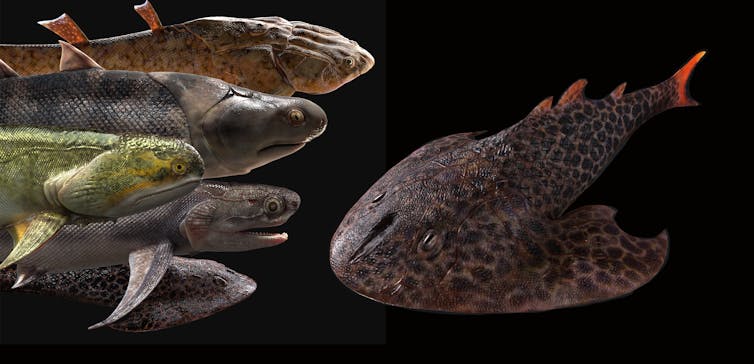
Some of the world’s most significant fossil discoveries have come from China. These include amazing feathered dinosaurs, the earliest modern mammals, and some of the oldest-known animals on Earth.
Today, four new papers published in Nature carry on this tradition by revealing the world’s oldest well-preserved jawed fishes, dating between 436 million and 439 million years ago to the start of the Silurian period.
The fossil discoveries all come from new fossil sites in the Guizhou and Chongqing Provinces in China. The Chongqing site was found in 2019, when three young Chinese palaeontologists were play fighting, and one was kung-fu kicked into the outcrop. Rocks tumbled down, revealing a spectacular fossil inside.
The research teams behind the papers are led by Zhu Min of the Institute of Vertebrate Palaeontology and Palaeoanthropology in Beijing. Min told me:
The discovery of the Chongqing lagerstatte (a “lagerstatte” is a fossil site of exceptional preservation) is indeed an unbelievable miracle of fossil hunting. Suddenly we realised we have found a jaw-dropping lagerstatte. We are now close to the core of untangling the fishy tree of early jawed vertebrates.
What Kinds Of Fishes Were They?
Most fishes today fall into two main groups:
- the chondrichthyans (which includes sharks, rays and chimaerids) have cartilaginous skeletons
- and the osteichthyans (bony fishes such as trout) have bone forming the skeleton.
The origins of these living fish groups are now much clearer due to the new findings of the oldest complete fishes from China.
These were shark-like fishes. Some were placoderms, an extinct class of armoured fish that had bony plates forming a solid shield around the head and trunk.
Others were ancestral kinds of sharks called acanthodians. These are extinct forms of “stem-sharks” that evolved as a separate branch – or stem – of the evolutionary line that led to modern sharks.
Placoderms are the earliest-known jawed vertebrates. Researching them is important as they help reveal the origins of many parts of the human body (including our hearts and faces).
A small flattened placoderm called Xiushanosteus, about three centimetres long, is the most common fish found at the new Chongqing site.
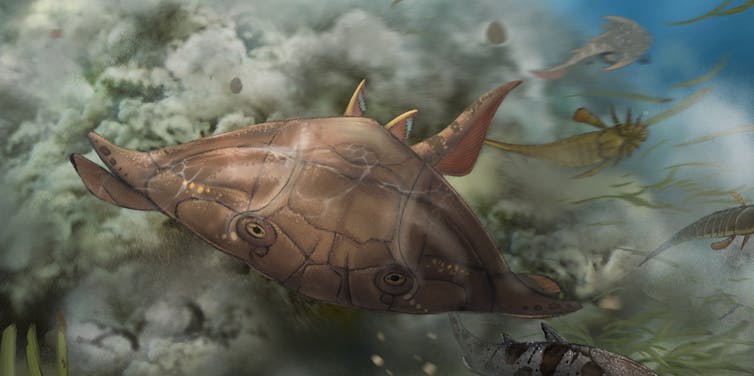
Its skull shows paired bones which reflect those on top of our own heads. Frontal and parietal bones have their origin in these fishes. Zhu You-an, who led the study on these fishes, told me:
All the things are still like dreams. Today we are staring at complete early Silurian fishes, 11 million years earlier than the previous oldest finds! These are both the most exciting, as well as the most challenging fossils I have had the privilege to work on!
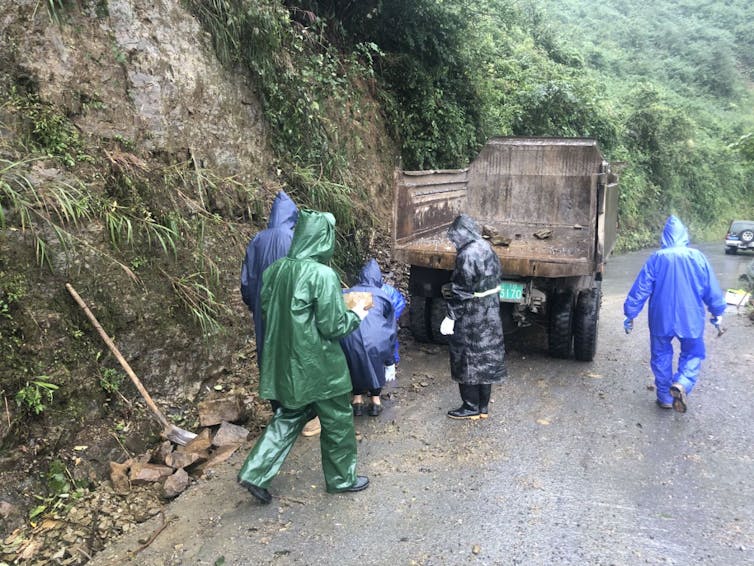
The World’s Oldest Sharks And Teeth
The new papers also describe the oldest complete shark-like fish, named Shenacanthus. It has a body shape similar to other prehistoric acanthodians (or stem-sharks) – but differs in having thick plates forming armour around it, as seen in placoderms.
The fact that Shenacanthus shares the features of both acanthodians and placoderms suggests these two groups evolved from similar ancestral stock. That said, Shenacanthus retains typical shark-like fin spines so it’s not regarded a placoderm, but a chondrichthyan (the group including today’s cartilaginous sharks).

The research also reveals the oldest-known teeth of any vertebrate – at least 14 million years older than any previous findings. Coming from a fossil chondrichthyan named Qianodus, the teeth are arranged as coiled rows called “whorls”. Such tooth whorls are common at the junction of the jaws in many ancient sharks and some early bony fishes such as Onychodus.

The researchers also found another early stem shark called Fangjinshania at the new site in Giuzhou. More than 300 kilograms of rock were collected and dissolved in weak acetic acid to free thousands of microscopic bits of bone and teeth.
Fangjinshania resembles a stem shark called Climatius known to have lived about 30 million years later in Europe and North America. Fangjinshania lived as far back as 436 million years ago, which tells us the fossil record of such sharks is much older than we previously thought.
Both Fangjinshania and Qianodus were about 10cm-15cm long, making them many times larger than the placoderms and the Shenacanthus. They would have been the top predators in their ancient ecosystem, and the world’s first predators armed with sharp teeth.
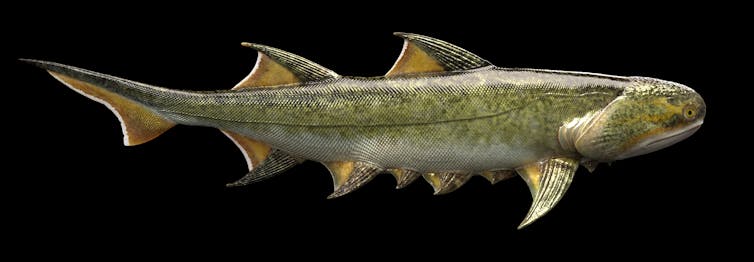
Plamen Andreev, the lead author on two of the new papers, told me:
These new finds give support to the idea that older fossil shark-like scales found in the Ordovician period could now really be called sharks.
From Fins To Limbs
Another interesting discovery from these fossils concerns how paired limbs in vertebrates first evolved. A new jaw-less fish called Tujiiaspis now shows the primitive condition of paired fins before they separated into pectoral and pelvic fins – the forerunner to arms and legs.
Pectoral fins were thought to have evolved in jawless fishes called osteostracans, then pelvic fins later in placoderms. But the new Tujiiaspis fossil suggests both sets of fins could have evolved at the same time from fin folds that run along the body and end at the tail fin.
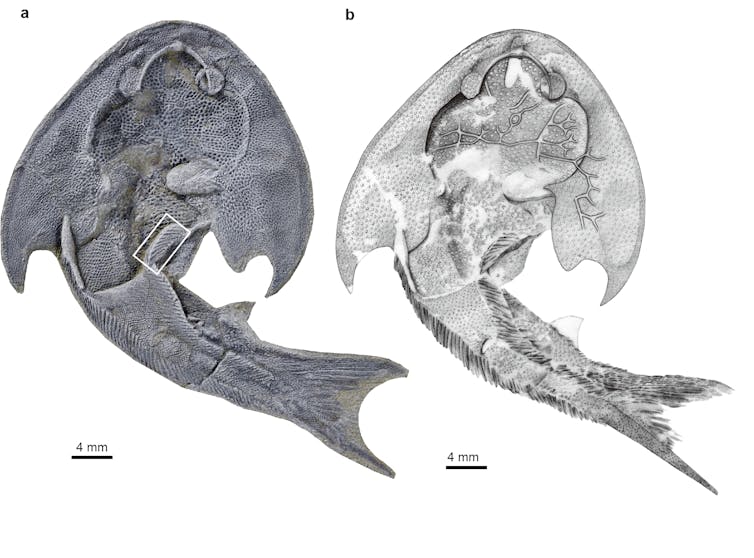
When Was The First Radiation Of The Jawed Fishes?
Finally, all these discoveries reveal that the first great major “radiation” of the jawed vertebrate (which refers to an explosion in diversity) took place much earlier than anyone imagined. Ivan Sansom from the University of Birmingham was a coauthor on one of the papers. As Sansom notes:
We’ve had hints of older material previously, but the appearance of clearly defined remains from jawed vertebrates so close to the base of the Silurian suggests jawed and jaw-less fish coexisted for longer than previously thought. There is now evidence for an earlier radiation of sharks and other jawed fish in the Ordovician period.
The four papers have shaken up the evolutionary tree, and new diagrams are showing revised hypotheses of the relationships between living fishes. Zhu Min informed me it will take many years to complete the studies on the new fossils, with several new species not yet having been described in the papers.
We’ll have to wait patiently for the next exciting discoveries to be announced from these extraordinary fossil sites.![]()
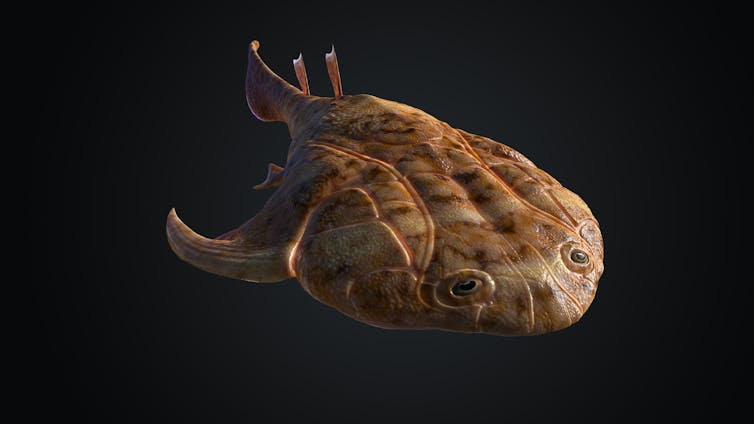
John Long, Strategic Professor in Palaeontology, Flinders University
This article is republished from The Conversation under a Creative Commons license. Read the original article.
Glass beads in lunar soil reveal ancient asteroid bombardments on the Moon and Earth
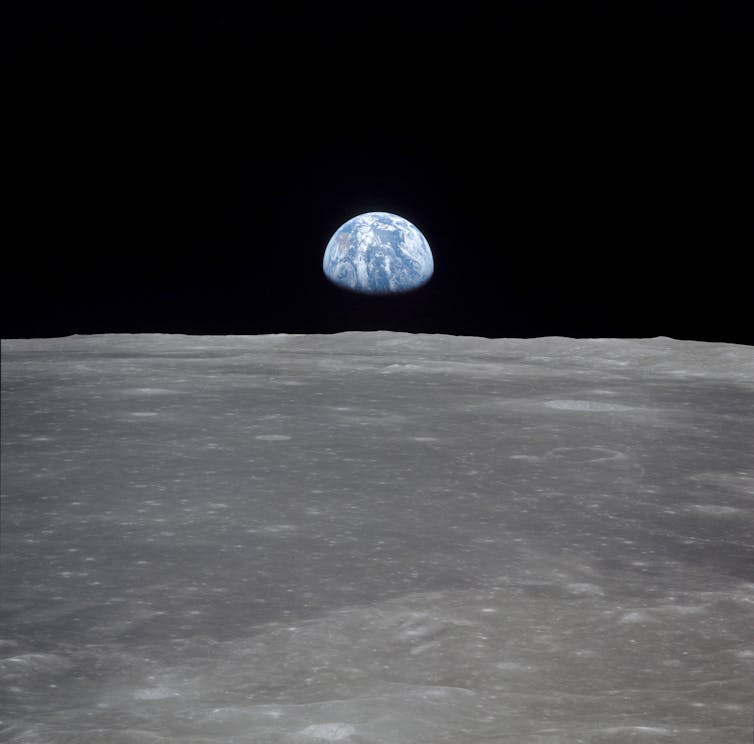
In 2020, China’s Chang'e 5 mission sampled more than a kilogram of Moon rock and soil and brought it back to Earth. The samples contain countless tiny beads of glass, created when asteroids hit the Moon and splashed out droplets of molten rock around the impact site.
We have analysed these glass beads and the impact craters near where they were found in great detail. Our results, published in Science Advances, reveal new details about the history of asteroids hitting the Moon over the past 2 billion years.
In particular, we found traces of several waves of impacts occurring at the same times as impacts on Earth – including the Chicxulub impact 66 million years ago that led to the extinction of the dinosaurs.
Billions Of Years Of Space Rocks
The destructive power of meteorite impacts has been seen throughout human history. Recently notable event from 2013, the spectacular Chelyabinsk meteor that injured hundreds of people, was a relatively minor occurrence compared to historical impacts.
Impacts of various scales have happened throughout Earth’s long geological history. Only about 200 impact craters have been found around the world, because erosion and geological activity are constantly modifying our planet’s surface and erasing evidence of past impacts.

On the Moon, where impact craters don’t go away, several hundred million are recognisable. It is not difficult to imagine Earth experienced a similar staggering barrage of projectiles early in its life.
As the Solar System evolved over the last 4.5 billions of years, the number of asteroids declined exponentially over time as space rocks were swept up by Earth and the other planets.
However, the details of this process remain murky. Was there a smooth decay over time in the number of impacts on Earth, Moon and other planets in the Solar System? Are there periods when collisions became more frequent, against this general background of decline? Is there a possibility that collisions may suddenly increase in the future?
Splattered Glass
The best available place to search for answers is the Moon, and the best available samples are lunar soils – like the ones Chang'e 5 brought home.
Lunar soil contains spherical droplets of solidified melt (glass) with sizes ranging from a few millimetres to less than a millimetre. These droplets are formed during high-speed impacts that melt the target rock.
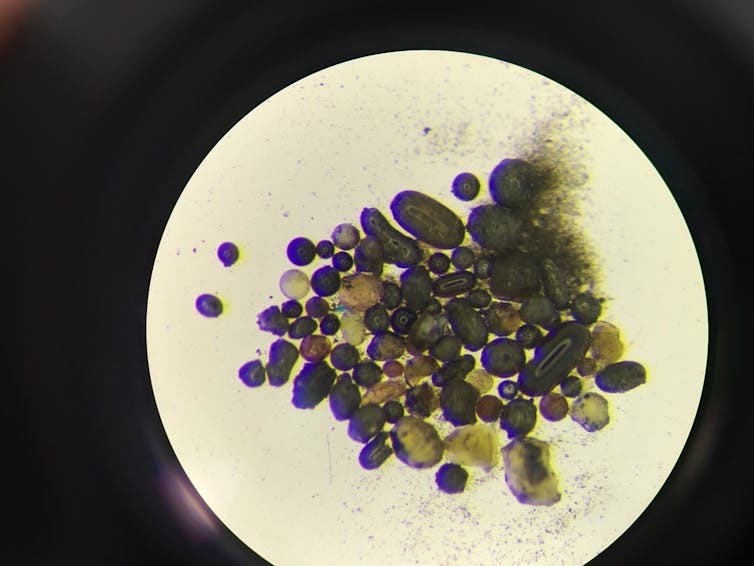
The melted droplets can splash out for tens or possibly hundreds of kilometres around the impact crater.
By analysing the chemical makeup and radioactivity of these droplets, we can determine how old they are. The ages of the droplets then gives us an indication of when these impacts happened on the Moon.
Each lunar soil sample appears to record multiple impacts. The ages of the impacts are spread over the past ~4 billion years, with the youngest being only a few million years old.
A Simple Landing Site
Chang’e 5 landed at a site with a relatively simple geological history, compared to other sites on the Moon where samples have been collected.
The landing site is in the middle of a vast basaltic plateau nearly 400 kilometres across. The plateau is “only” 2 billion years old, which is young relative to the age of the lunar crust overall.
This means the history of the site is shorter and simpler to unravel. This made it easier to identify droplets originating from nearby impacts, as well as interpreting chemical and chronological data via satellite images of the surrounding lunar surface.
We combined this interpretation with modelling of how the droplets would have formed and splashed out in impacts of different sizes.
It appears that glass droplets can be transported for 20 to 100 kilometres from the site of impacts, even when the impact leaves a crater only 100 metres across. Models also indicate that impacts forming craters more than 1 kilometre across are more efficient in producing the droplets.
All this information combined helped to initiate the search for specific impact craters responsible for the production of glasses extracted from the sample.
Crater Hunting
The basaltic plateau surrounding Chang'e 5’s landing site contains more than 100,000 craters over 100 metres in size. Matching glass droplets with their crater of origin is a probability game, though the odds are a little better than winning the lottery.
We can say some of the craters are likely to be the source of some of the glass droplets in the sample. Nevertheless, this matching led to another important outcome.
Previous studies had found the distribution of ages of glass droplets in the individual soil samples is uneven. There are periods in the timeline with large numbers of droplets and periods with few to none.
Our analysis of glass in the Chang’e 5 samples and our attempts to link them to specific craters confirms a variation in impact rate through time.
In addition, the ages of the periods identified from these droplets appear to be similar to those visible in a number of existing meteorite groups originating in the asteroid belt. These meteorite groups may be the results of ancient collisions within the asteroid belt.
One of these cluster ages also coincides with the dinosaur extinction. Our study did not examine this in detail, but this coincidence may indicate that, for reasons yet unknown, there are periods when regular orbits of small bodies in the solar system destabilise and head into orbits where they may hit the Earth or Moon.
Taken together, these ages suggest there may have been periods of time over Earth’s history when collisions increased throughout the inner Solar System. This means Earth could have also experienced periods when rate of impacts was higher than usual – and that similar increases are possible in the future.
How would such an increase affect the evolution of life on the planet? That remains a mystery.![]()
Alexander Nemchin, Professor, Applied Geology, Curtin University and Katarina Miljkovic, ARC Future Fellow, School of Earth and Planetary Sciences, Curtin University
This article is republished from The Conversation under a Creative Commons license. Read the original article.
Avoiding a surveillance society: how better rules can rein in facial recognition tech

The human face is special. It is simultaneously public and personal. Our faces reveal sensitive information about us: who we are, of course, but also our gender, emotions, health status and more.
Lawmakers in Australia, like those around the world, never anticipated our face data would be harvested on an industrial scale, then used in everything from our smartphones to police CCTV cameras. So we shouldn’t be surprised that our laws have not kept pace with the extraordinary rise of facial recognition technology.
But what kind of laws do we need? The technology can be used for both good and ill, so neither banning it nor the current free-for-all seem ideal.
However, regulatory failure has left our community vulnerable to harmful uses of facial recognition. To fill the legal gap, we propose a “model law”: an outline of legislation that governments around Australia could adopt or adapt to regulate risky uses of facial recognition while allowing safe ones.
The Challenge Of Facial Recognition Technologies
The use cases for facial recognition technologies seem limited only by our imagination. Many of us think nothing of using facial recognition to unlock our electronic devices. Yet the technology has also been trialled or implemented throughout Australia in a wide range of situations, including schools, airports, retail stores, clubs and gambling venues, and law enforcement.
As the use of facial recognition grows at an estimated 20% annually, so too does the risk to humans – especially in high-risk contexts like policing.
In the US, reliance on error-prone facial recognition tech has resulted in numerous instances of injustice, especially involving Black people. These include the wrongful arrest and detention of Robert Williams, and the wrongful exclusion of a young Black girl from a roller rink in Detroit.
Many of the world’s biggest tech companies – including Meta, Amazon and Microsoft – have reduced or discontinued their facial recognition-related services. They have cited concerns about consumer safety and a lack of effective regulation.
This is laudable, but it has also prompted a kind of “regulatory-market failure”. While those companies have pulled back, other companies with fewer scruples have taken a bigger share of the facial recognition market.
Take the American company Clearview AI. It scraped billions of face images from social media and other websites without the consent of the affected individuals, then created a face-matching service that it sold to the Australian Federal Police and other law enforcement bodies around the world.
In 2021, the Australian Information & Privacy Commissioner found that both Clearview AI and the AFP had breached Australia’s privacy law, but enforcement actions like this are rare.
However, Australians want better regulation of facial recognition. This has been shown in the Australian Human Rights Commission’s 2021 report, the 2022 CHOICE investigation into the use of facial recognition technology by major retailers, and in research we at the Human Technology Institute have commissioned as part of our model law.
Options For Facial Recognition Reform
What options does Australia have? The first is to do nothing. But this would mean accepting we will be unprotected from harmful use of facial recognition technologies, and keep us on our current trajectory towards mass surveillance.
Another option would be to ban facial recognition tech altogether. Some jurisdictions have indeed instituted moratoriums on the technology, but they contain many exceptions (for positive uses), and are at best a temporary solution.
In our view, the better reform option is a law to regulate facial recognition technologies according to how risky they are. Such a law would encourage facial recognition with clear public benefit, while protecting against harmful uses of the technology.
A Risk-Based Law For Facial Recognition Technology Regulation
Our model law would require anyone developing or deploying facial recognition systems in Australia to conduct a rigorous impact assessment to evaluate the human rights risk.
As the risk level increases, so too would the legal requirements or restrictions. Developers would also be required to comply with a technical standard for facial recognition, aligned with international standards for AI performance and good data management.
The model law contains a general prohibition on high-risk uses of facial recognition applications. For example, a “facial analysis” application that purported to assess individuals’ sexual orientation and then make decisions about them would be prohibited. (Sadly, this is not a far-fetched hypothetical.)

The model law also provides three exceptions to the prohibition on high-risk facial recognition technology:
the regulator could permit a high-risk application if it considers the application to be justified under international human rights law
there would be a specific legal regime for law enforcement agencies, including a “face warrant” scheme that would provide independent oversight as with other such warrants
high-risk applications may be used in academic research, with appropriate oversight.
Review By The Regulator And Affected Individuals
Any law would need to be enforced by a regulator with appropriate powers and resources. Who should this be?
The majority of the stakeholders we consulted – including business users, technology firms and civil society representatives – proposed the Office of the Australian Information Commissioner (OAIC) would be well suited to be the regulator of facial regulation. For certain, sensitive users – such as the military and certain security agencies – there may also need to be a specialised oversight regime.
The Moment For Reform Is Now
Never have we seen so many groups and individuals from across civil society, industry and government so engaged and aligned on the need for facial recognition technology reform. This is reflected in support for the model law from both the Technology Council of Australia and CHOICE.
Given the extraordinary rise of uses of facial recognition, and an emerging consensus among stakeholders, the federal attorney-general should seize this moment and lead national reform. The first priority is to introduce a federal bill – which could easily be based on the our model law. The attorney-general should also collaborates with the states and territories to harmonise Australian law on facial recognition.
This proposed reform is important on its own terms: we cannot allow facial recognition technologies to remain effectively unregulated. It would also demonstrate how Australia can use law to protect against harmful uses of new technology, while simultaneously incentivising innovation for public benefit.
More information about the model law can be found in our report Facial recognition technology: Towards a model law.![]()
Nicholas Davis, Industry Professor of Emerging Technology and Co-Director, Human Technology Institute, University of Technology Sydney; Edward Santow, Professor & Co-Director, Human Technology Institute, University of Technology Sydney, and Lauren Perry, Policy and Projects Manager - Human Technology Institute, University of Technology Sydney
This article is republished from The Conversation under a Creative Commons license. Read the original article.
Blonde: Joyce Carol Oates’ epic Marilyn Monroe novel captures the violence of celebrity myth-making

Marilyn Monroe died 60 years ago, on August 4 1962. And on September 28, Netflix will release Blonde, a film by Australian director Andrew Dominik, starring Cuban actress Ana de Armas as Monroe.
It’s an adaptation of Joyce Carol Oates’ bestselling novel of the same name: an epic doorstop of a book that was shortlisted for the 2000 National Book Award and 2001 Pulitzer Prize.
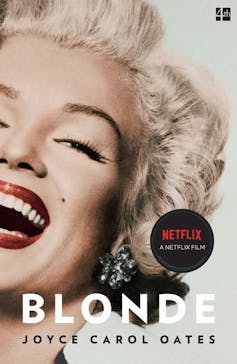
When Oates’ novel was previously adapted as a 2001 TV miniseries, starring Australian actress Poppy Montgomery, it opened with the disclaimer that it was fiction: an approach that, as Variety critic Steven Oxman wrote at the time, “allows the creators to be far more imaginative in their suppositions about the characters’ private thoughts”.
Oates has always insisted Blonde is a work of imagination. It’s a towering literary achievement. Eschewing a realist biographical narrative, Blonde contains multiple voices and perspectives; it’s also allusive and formally adventurous.
Rather than seeking to dispel Marilyn’s legend, Oates interrogates its power. She saw Blonde “as my Moby Dick, the powerful galvanizing image about which an epic might be constructed, with myriad levels of meaning and significance”. It’s also a sweeping portrait of 20th-century America – its sport, politics, religion, literature, culture, mental health, urban renewal and decay.
A Postmodern ‘Bio-Novel’
In his 1995 book Visions of the Past, historian Robert Rosenstone describes a “historically reinventive” kind of biopic “that, refusing the pretense that the screen can be an unmediated window onto the past, foregrounds itself as a construction”.
For Rosenstone, such stories don’t
attempt to recreate the past realistically. Instead they point to it and play with it, raising questions about the very evidence on which our knowledge of the past depends, creatively interacting with its traces.
Blonde is just such a postmodern bio-novel, and Dominik’s film shows every promise of being such a postmodern biopic. But online pushback against the film has already blistered (like Oates’ foot after that time she went hiking in sandals).
Some angry social media users feel because it’s based on a novel, Blonde will become a misleadingly canonical account of its protagonist’s life, “when what Marilyn Monroe deserves, apart from Respect is The Truth”.
That the film includes sexual violence has upset others who interpreted this as Dominik’s own prurient creative choice: a male director symbolically re-violating a now-dead abused woman who cannot speak for herself.
Such criticisms exasperate me. Blonde summons, as only fiction can, the violence of being mythologised. Its protagonist insists heroically on her right to be seen and valued as herself; yet her betrayal, her tragedy, is to be extinguished by the ideas others project onto her.
Archetypes And Ambiguities
Oates deliberately characterises separate aspects of her protagonist, to show overlapping views of her. She is Norma Jeane, an earnest, conscientious girl who’s smart, introspective, perceptive, eager to excel and hungry for love.
“Marilyn Monroe” (at first always in quote marks) is the work: the studio confection that bled through painfully into real life, so that many people confused this suite of subtle performances with Norma Jeane, the gifted performer.
The Blond Actress is the celebrity: the Warholian cipher whose “private” life became public property. She is always viewed from outside, sometimes menacingly.
Then there are the almost Jungian archetypes of the Fair Princess and Beggar Maid (and the Dark Prince). Young Norma Jeane seizes on these archetypes in her tumultuous early life with her schizophrenic mother, who worked within the movie studio system. Left to watch movies for hours, Norma Jeane intuitively absorbs Hollywood’s fairytale storytelling, using it to bandage what Oates treats as a primal, ultimately fatal psychic wound: her unloving mother and unknown father.
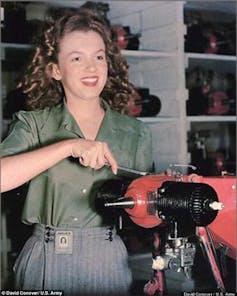
The book glides effortlessly from interiority to voyeurism. Italicised sentences permeate the text like whispers: Norma Jeane’s own reflections, the impressions of others she encounters, or even a collective unconscious. “It’s history. What happens to us. No one to blame.”
Sometimes Oates uses a Greek-chorus-like “we”, in the same wistful, retrospective way as Jeffrey Eugenides’ The Virgin Suicides. Sometimes the novel follows shadowy, nefarious spies and stalkers who could equally be federal agents or paparazzi.
Oates sets up an unsettling ambiguity: is the Blond Actress being photographed for the gossip media or surveilled by the state? Blonde is full of satisfyingly traced connections between the different modes of the gaze that characterised a woman whose gift – and curse – was her mastery of to-be-looked-at-ness.
Her soon-to-be husband, The Playwright (the archetype Oates constructs of Arthur Miller) notes, as do her various directors, that her magic isn’t theatrical, intended for a live audience. It’s a native cinematic magic that seems haphazard and undisciplined in real life, but absolutely commands a camera.
Performance As Magical Sacrifice
Oates emphasises how wrenchingly hard-won this alchemy is. Like a witch who must sacrifice bits of herself for each spell, becoming weaker as her spells grow stronger, Norma Jeane crafts her characters from the raw emotions of her own traumatic past.
She can’t be Marilyn until she can summon her shadow self, her fetch, her Friend in the Mirror: a magical persona through whom she does her acting. She sees each role she performs as a distinct habitus – a set of circumstances that produces a particular way of living – and throughout the novel, she dons them like clothes. Indeed, the chapters are named after her characters.
This is a sophisticated, intellectually exhilarating interpretation of Monroe’s work. Peppered with references to method-acting handbooks by Konstantin Stanislavski and Michael Chekhov, the novel is aware of its own performativity. Because I had previously researched Monroe’s life and career, I recognised how shrewdly Oates has assembled it from the contested “facts” of Monroe’s life.
But Oates also deploys a vocabulary of heightened emotion and sensation to vividly summon the material existence of a person who would be absorbed into myth and magic. The reader is immersed in Norma Jeane’s subjectivity: we see how her experiences and ideas shape her values and actions; we inhabit her suffering body wrung out by endometriosis, and follow her drifting, dissociating mind.
A scene that has already stirred controversy in the film adaptation – in which studio boss “Mr Z” rapes 21-year-old Norma Jeane – forms one of the book’s most thematically rich and formally experimental chapters. Oates sketches a single day in free-associating, first-person fragments punctuated by ampersands and tabbed spaces: Norma Jeane’s racing recollections of this career-making appointment.
Mr Z shows her his “aviary”, where, like Bluebeard’s wife, she’s shocked that his birds are taxidermy objects, posed in elaborate sets “as in a cave inside a box or a coffin”:
Yet I saw the AVIARY was fascinating the more I stared for the birds were beautiful & lifelike not seeming to grasp that they were dead I seemed to hear a voice like Mother’s All dead birds are female, there is something female about being dead
Death stalks this stunning novel; but Blonde also confers immortality. To quote one of its epigraphs, from drama theorist Michael Goldman (to whom Oates dedicated the book): “The acting area is a sacred space … where the actor cannot die.”![]()
Mel Campbell, Subject Coordinator, Publishing and Communications, The University of Melbourne
This article is republished from The Conversation under a Creative Commons license. Read the original article.
Book Of The Month: October 2022 - Voss By Patrick White
Originally published: London: Eyre & Spottiswoode, 1957.
Set in nineteenth-century Australia, Voss is White's best-known book, a sweeping novel about a secret passion between the explorer Voss and the young orphan Laura. As Voss is tested by hardship, mutiny, and betrayal during his crossing of the brutal Australian desert, Laura awaits his return in Sydney, where she endures their months of separation as if her life were a dream and Voss the only reality. Marrying a sensitive rendering of hidden love with a stark adventure narrative, Voss is a novel of extraordinary power and virtuosity from a twentieth-century master.
Bilgola Probus Club Commences
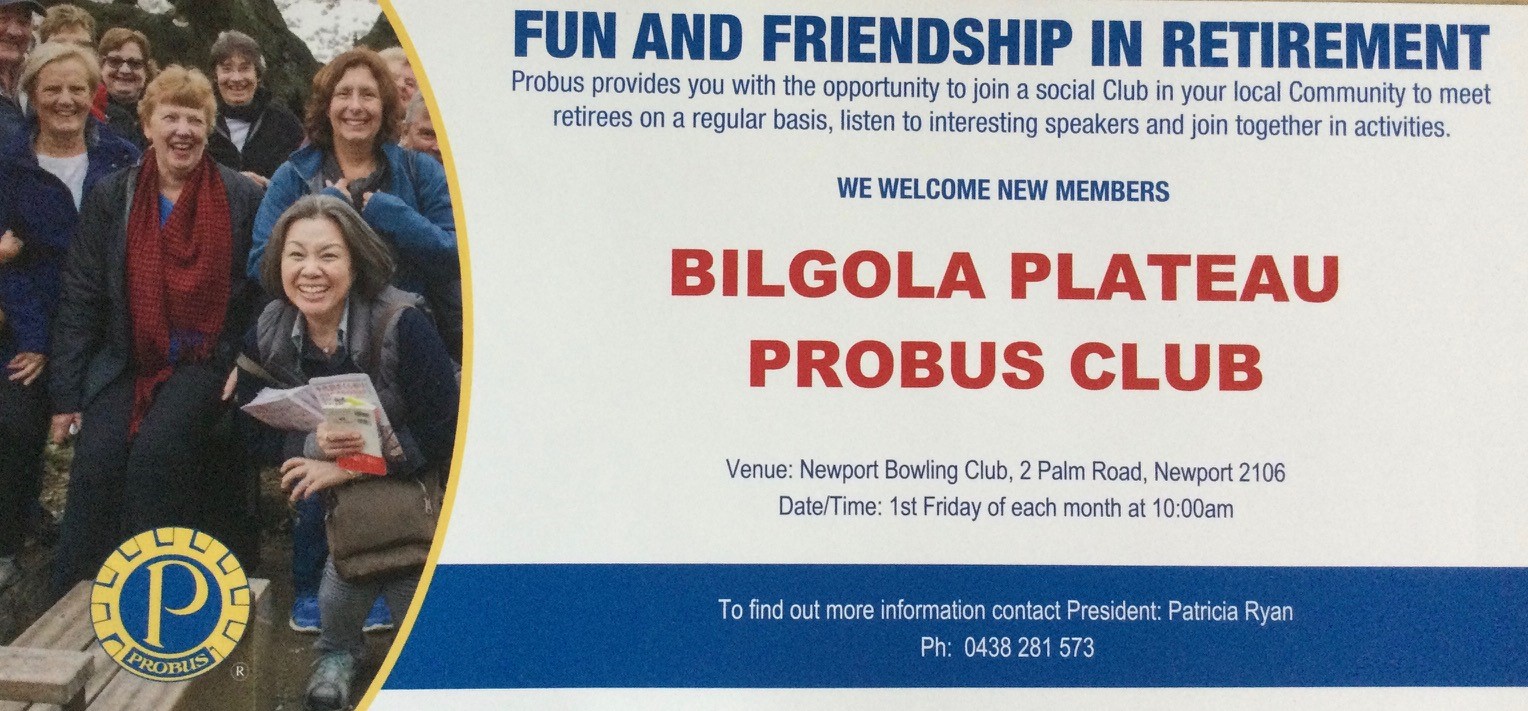
Support At Home: A Commentary On The Design Of The Proposed Unified Program
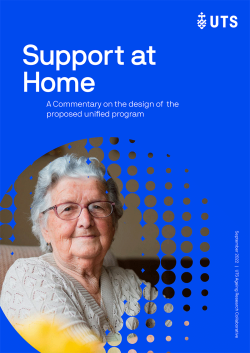 It is a response to the Overview paper released by the Department of Health in January 2022 and discusses the strengths and shortcomings of the current proposals.
It is a response to the Overview paper released by the Department of Health in January 2022 and discusses the strengths and shortcomings of the current proposals.- Senior Australians to have choice and control over the services they are assessed as needing and that those services change as their needs change.
- Services to be delivered within a competitive market-based environment.
- Regulation to be proportionate in setting quality and safety standards for the services and the providers of those services and correcting for market failures.
- The allocation, management, delivery and outcomes of subsidised services to be transparent and have clear lines of accountability.
- Subsidised services to be funded sustainably and equitably between taxpayers and clients.
- The need for a clear and consistent set of principles to guide program design
- Ensuring effective accountability within a multi-provider, fee-for-service model
- The impact of service and price lists on transparency and flexibility
- The role of appropriate client contributions within sustainable funding models
Sophisticated New Robot Driving Innovation In Joint Surgery
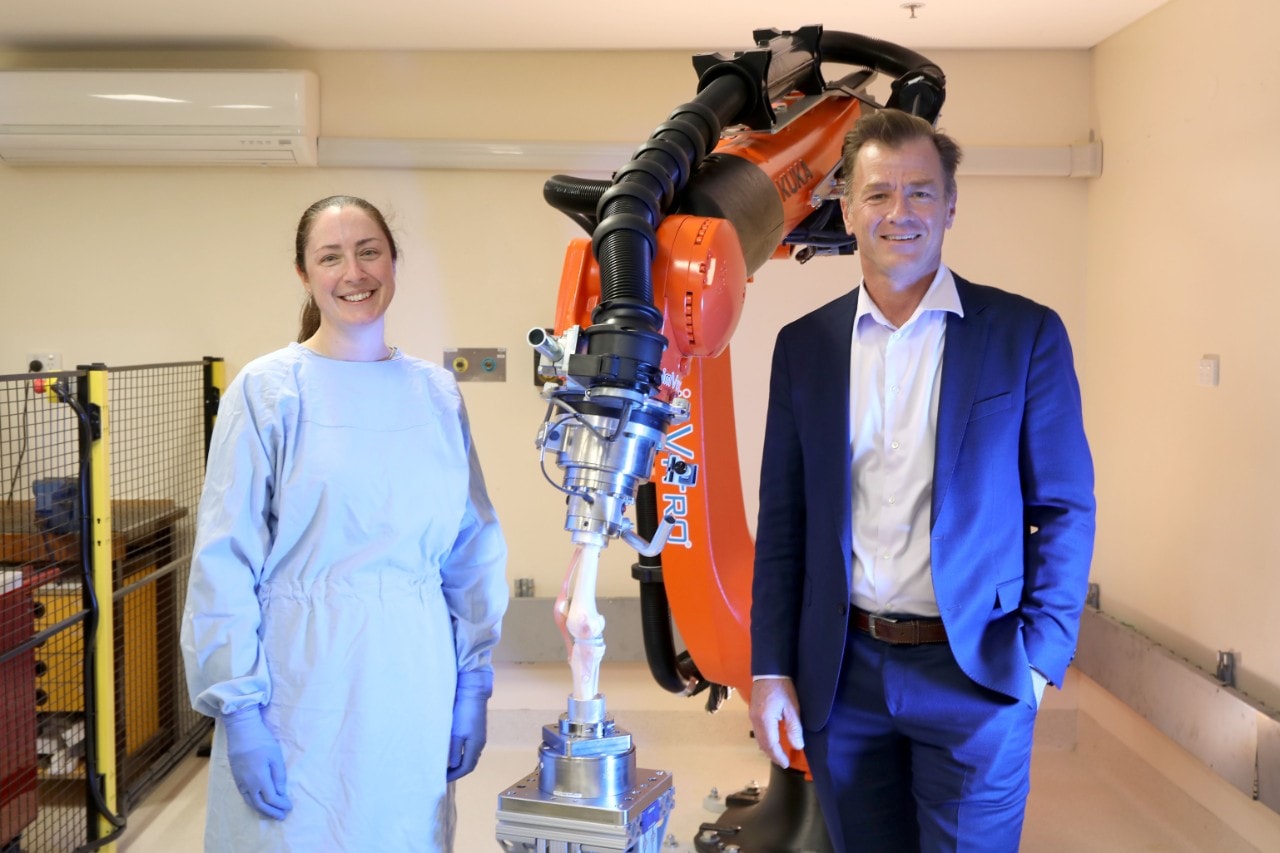
Dog Behaviour Could Offer Insight Into Building Better Robots For Aged Care
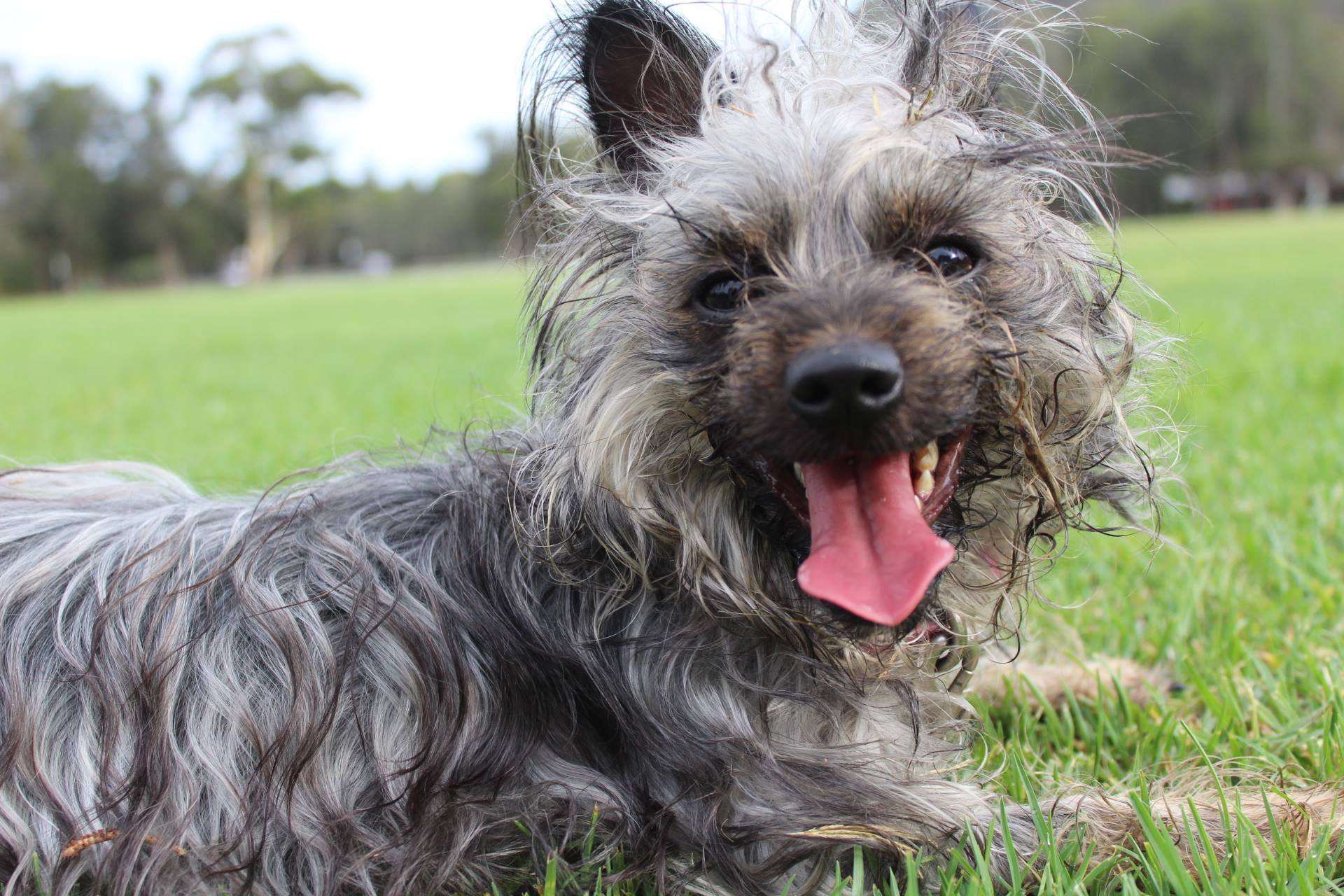
How we can use gaming to support positive ageing (and support our relationships with our pets, too)
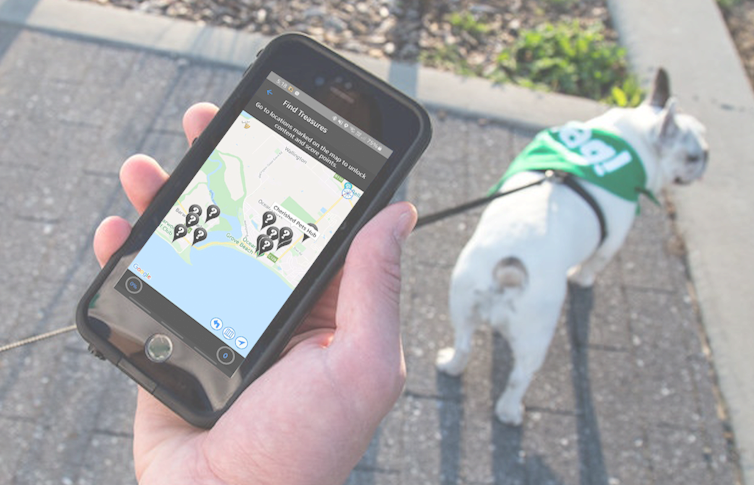
Margaret, 63, loves playing online Scrabble everyday with her sister who lives interstate. The online game allows a playful way to keep in constant contact when geographically distant.
Tom, 70, discovered the joy of Wordle and sharing his daily outcomes with friends. Penelope, 67, gets online to play Roblox games with her grandchildren who are living interstate.
These are just a few examples of the many ways older adults are gaming across Australia.
During the pandemic lockdowns, games were not only spaces for everyday creativity and informal literacy, but a way to socialise and keep fit – both mentally and physically. So much so that, in 2020, the World Health Organisation acknowledged the communicative and social power of games for wellbeing.
Even though the typical gamer is middle-aged woman, ageist stereotypes about gamers continue to circulate, reflecting broader inherent ageisms embedded within Australian culture.
Maybe we could turn this problem on its head. Perhaps we could use games to empower ageing and ageing well, creating bridges between the generations – and even improve our relationships with animals while we’re at it.
Ageing Well
Older adults are one of the most divergent cohort of technology users, from “silver surfer” innovators to those who have little experience or confidence.
Victoria’s Ageing Well Report lists eight attributes to ageing well: positivity, purpose, respect, socially connection, keeping up in a changing world, financial/personal security, health autonomy and mobility.
Many of these attributes can be addressed through games and play.
In our study into mobile game practices in Australian homes, we found numerous ways in which games offer intergenerational ways for socialising, connection and creativity.
Word games like Scrabble and Wordle have been deployed to add playful, social dimensions to people’s lives: older adult siblings playing online everyday, or grandparents playing with grandchildren interstate.
Game apps like Pokémon Go have been used to motivate older adults to exercise and socialise.
In countries as varied as Japan and Spain, the power of Pokémon Go has enhanced various dimensions of everyday life – from getting mobile and discovering local neighbourhoods to playing together cooperatively to win tournaments.
Game genres such as “social justice” and “games for change” have been deployed to address complex issues such as elder abuse in new ways by providing safe spaces to enhance empathy and reshape perceptions.
In our research, we accompanied and interviewed older adult players in Badalona, Spain about their use of Pokémon Go.
On the streets of Badalona, chasing Pokémons was clearly about intergenerational play and sociality. The game was such a success in older adult rehabilitation by making exercise fun and social that social workers started to prescribe it as part of their health plans.
There is a growing body of research into games for intergenerational connection. But the role of games to enhance our relationships with animals has been overlooked – despite the fact animals play an essential role in our contemporary relationships.
Our Best Friend
Australians love their animals: one in three prefer animals to humans.
Despite this reality, animal companions are not acknowledged in Australia’s aged care plans. This means many older adults can be disenfranchised by the system.
For many older adults, animal companions are crucial to their social and physical wellbeing.
Digital games like Stray see the player take on the role of a stray cat. These types of games can enhance our empathy for animals, but there is a missed opportunity in relation to the human-animal bonds for ageing well.
The human-animal kinship is a space ready for gameplay which could enrich the possibility of ageing well.
During the pandemic lockdowns, Melbourne’s Cherished Pet Foundation trialled different techniques to support their community – including the use of games.
Pet Playing for Placemaking (co-designed by Jacob Sheahan) invited older pet owners and local community members to partner up and compete in treasure-hunt style gameplay.
Older pet owners, limited in mobility and vulnerable to the virus, completed digital puzzles which reveal locations where their play partner (typically a volunteer or neighbour) can walk their pet and discover more challenges that lead to other places.
Participants reported they found the game a fun way to connect with their neighbourhood and their community – and it kept their pets happy, too.
The Beauty Of Game Play
Ageing well is about positive and empowering pathways for ageing across emotional, physical and mental domains.
This can take many forms: social connection, respectful relationships, regular exercise and mobility.
Games can play an active role in empowering ageing, enriching social and intergenerational connection, mobility and health.
While the pandemic has laid bare barriers to ageing well, it has also created opportunities. Maybe we all need to play more with ageing well?![]()
Larissa Hjorth, Professor of Mobile Media and Games., RMIT University
This article is republished from The Conversation under a Creative Commons license. Read the original article.
‘Prima donna in pigtails’: how Julie Andrews the child star embodied the hopes of post-war Britain

In June, the American Film Institute presented its 48th Life Achievement Award, the highest honour in American cinema, to the beloved stage-and-screen star Julie Andrews.
On conferring the award, the AFI praised Andrews as “a legendary actress” who “has enchanted and delighted audiences around the world with her uplifting and inspiring body of work”.
As anyone who has seen Mary Poppins (1964) or The Sound of Music (1965) can attest, “uplift” is central to the Julie Andrews screen persona.
It is a sweetness-and-light image that is easy to lampoon. Andrews herself is alleged to have quipped “sometimes I’m so sweet even I can’t stand it”. But it’s an element of feel-good edification that fuels much of the star’s iconic appeal.
The idea of Julie Andrews as a figure of uplift has a long history.
Decades before she attained global film stardom in Hollywood, Andrews enjoyed an early career as a child performer.
Billed as “Britain’s youngest singing star”, she performed widely on the postwar concert and variety circuit with forays into radio, gramophone recording and even early television.
Possessing a precociously mature soprano voice, Andrews was widely promoted in the era as a child prodigy. A 1945 BBC talent report filed when the young singer was just nine years old enthused over “this wonderful child discovery” whose “breath control, diction, and range is quite extraordinary for so young a child”.
‘Infant Prodigy Of Trills’
Andrews made her professional West End debut in 1947 where she dazzled audiences with a coloratura performance of the Polonaise from Mignon. Newspapers were ablaze with stories about the “12-year-old singing prodigy with the phenomenal voice”.
Reports claimed the pint-sized singer had a vocal range of over four octaves, a fully formed adult larynx and an upper whistle register so high dogs would be beckoned whenever she sang.
On the back of such stories, Andrews was given a slew of lionising monikers: “prima donna in pigtails”, “infant prodigy of trills”, “the miracle voice” and “Britain’s juvenile coloratura”.
While much of it was PR hype, the representation of Andrews as an extraordinary musical prodigy resonated deeply with postwar British audiences. The devastation of the war cast a long shadow, and there was a keen sense a collective social rejuvenation was needed to reestablish national wellbeing.
The figure of the child was pivotal to the rhetoric of postwar British reconstruction. From political calls for expanded child welfare to the era’s booming family-oriented consumerism, images of children saturated the cultural landscape, serving as a lightning rod for both social anxieties and hopes.
In her status as “Britain’s youngest singing star”, Andrews chimed with these postwar discourses of child-oriented renewal.
A popular myth even traced her prodigious talent to the very heart of the Blitz. Like a scene from a morale-boosting melodrama, the story claimed the young Andrews was huddled one night with family and friends in a Beckenham air raid shelter. In the middle of a communal singalong, a powerful voice suddenly materialised out of her tiny frame, astonishing all into silent delight.
‘Our Julie’
One of the most pointed alignments of Andrews’ juvenile stardom with a discourse of postwar British nationalism came with her appearance at the 1948 Royal Command Variety Performance.
Appearing just two weeks after her 13th birthday, Andrews was the youngest artist ever to participate in the annual event. It generated considerable media coverage and yet another grand nickname: “command singer in pigtails”.
Andrews performed a solo set at the event, and was also charged with leading the national anthem at the close.
Ideals of restorative nationalism shaped Andrews’ child stardom in other ways.
Much of her early repertoire was markedly British, drawn from the English classical canon and rounded out by traditional folk songs.
Press reports emphasised, for all her remarkable talent, “our Julie” was still a typical English girl thoroughly unspoiled by fame. In accompanying images she would appear in idyllic scenarios of classic English childhood: playing with dolls, riding her bicycle, doing her homework.
Elsewhere, commentary was rife with speculations about Andrews’ prospects as “the next Adelina Patti” or “future Lily Pons”. The mix of nostalgia and hope helped make the young Andrews a reassuring figure in the anxious landscape of postwar Britain.
All Grown Up
Little prodigies can’t remain little forever. There lies the troubled rub for many child stars, doomed by biology to lose their principal claim to fame.
In Andrews’ case, she was able to make the successful transition to adult stardom – and even greater fame – by moving country and professional register into the American stage and screen musical.
Still, the themes of therapeutic uplift that defined her early child stardom would follow Julie Andrews as she graduated to become the world’s favourite singing nanny.![]()
Brett Farmer, Lecturer in Film, Media and Communication, Deakin University
This article is republished from The Conversation under a Creative Commons license. Read the original article.
These 12 things can reduce your dementia risk – but many Australians don’t know them all
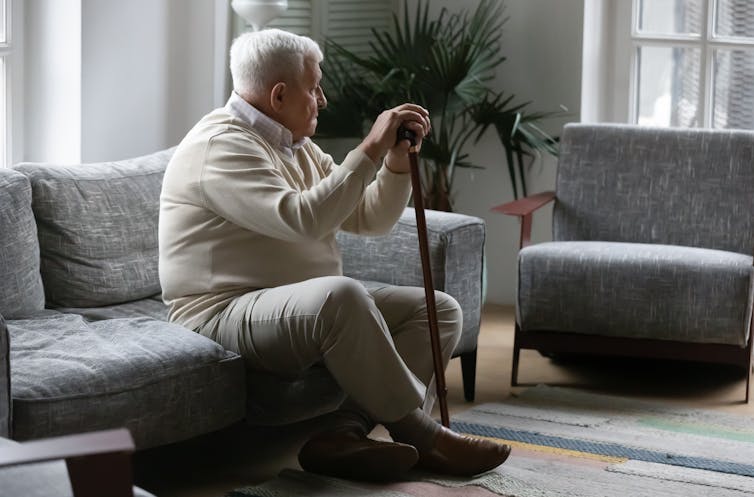
Dementia is a leading cause of death in Australia.
Although dementia mainly affects older people, it is an avoidable part of ageing. In fact, we all have the power to reduce our risk of developing dementia, no matter your age.
Research shows your risk of developing dementia could be reduced by up to 40% (and even higher if you live in a low or middle-income country) by addressing lifestyle factors such as healthy diet, exercise and alcohol consumption.
But the first step to reducing population-wide dementia risk is to understand how well people understand the risk factors and the barriers they may face to making lifestyle changes.
Our new paper, published this week in the Journal of Ageing and Longevity, found most older people are aware that dementia is a modifiable condition and that they have the power to change their dementia risk.
We also found the key barrier to making brain healthy lifestyle choices was a lack of knowledge, which suggests a public awareness campaign is urgently needed.

What We Did
We began by reviewing the published research to identify 12 factors shown to reduce dementia risk. We surveyed 834 older Australians about their awareness of the 12 factors, which were:
- having a mentally active lifestyle
- doing physical activity
- having a healthy diet
- having strong mental health
- not smoking
- not consuming alcohol
- controlling high blood pressure
- maintaining a healthy weight
- managing high cholesterol
- preventing heart disease
- not having kidney disease
- not having diabetes
The Lancet subsequently published its own list of factors that help reduce dementia risk, which covered much the same territory (but included a few others, such as reducing air pollution, treating hearing impairment and being socially engaged).
Of course, there is no way to cut your dementia risk to zero. Some people do all the “right” things and still get dementia. But there is good evidence managing lifestyle factors help make it less likely you will get dementia over your lifetime.
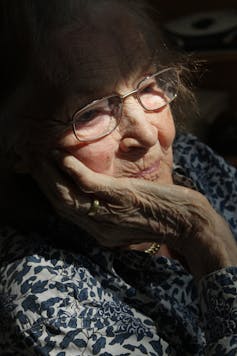
Our study shows many older Australians are quite aware, with over 75% able to correctly identify more than four of the factors in our list of 12.
However, few were able to name the less well-known risk factors, such as preventing heart disease and health conditions like kidney disease.
The good news is that close to half of the sample correctly identified more than six of the 12 protective factors, with mentally active lifestyle, physical activity and healthy diet in the top three spots.
Two Key Issues
Two things stood out as strongly linked with the ability to identify factors influencing dementia risk.
Education was key. People who received more than 12 years of formal schooling were more likely to agree that dementia was a modifiable condition. We are first exposed to health management in our school years and thus more likely to form healthier habits.
Age was the other key factor. Younger respondents (less than 75 years old) were able to accurately identify more protective factors compared to older respondents. This is why health promotion initiatives and public education efforts about dementia are vital (such as Dementia Awareness Month and Memory, Walk and Jog initiatives).
How Can These Findings Be Used In Practice?
Our findings suggest we need to target education across the different age groups, from children to older Australians.
This could involve a whole system approach, from programs targeted at families, to educational sessions for school-aged children, to involving GPs in awareness promotion.
We also need to tackle barriers that hinder dementia risk reduction. This means doing activities that motivate you, finding programs that suit your needs and schedule, and are accessible.
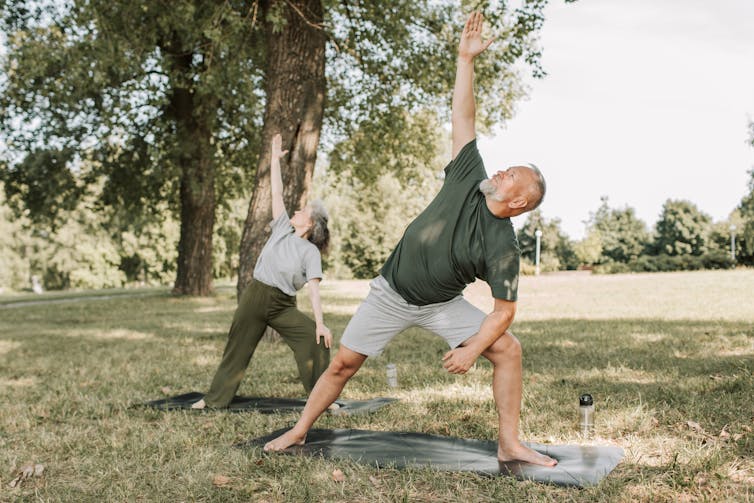
What Does This Mean For You?
Reducing your dementia risk means recognising change starts with you.
We are all familiar with the everyday challenges that stop us from starting an exercise program or sticking to a meal plan.
There are simple and easy changes we can begin with. Our team has developed a program that can help. We are offering limited free brain health boxes, which include information resources and physical items such as a pedometer. These boxes aim to help rural Australians aged 55 years and over to adopt lifestyle changes that support healthy brain ageing. If you’re interested in signing up, visit our website.
Now is the time to think about your brain health. Let’s start now.![]()
Joyce Siette, Research Theme Fellow, Western Sydney University and Laura Dodds, PhD Candidate, Western Sydney University
This article is republished from The Conversation under a Creative Commons license. Read the original article.
MQ Health, Surgeons And Medibank Partner To Establish World-Class Orthopaedic Centre In Sydney

A Call To Better Support Unpaid Carers This International Day Of Older Persons
U3A Actvities
- A day trip to Mount Wilson on 5 October (details on page 9);
- Our annual picnic on 20 October, this year at Clontarf Reserve (details on page 10); and
- Tunnels and Gunners Tour, with a guide from the Sydney Harbour Trust, on 3 November (details on page 10.
Home Instead Sydney North Shore & Northern Beaches
Warming Oceans Are Changing Australian Reef Fish Populations
What does the Optus data breach mean for you and how can you protect yourself? A step-by-step guide
Jennifer J. Williams, Macquarie University; Jeffrey Foster, Macquarie University, and Tamara Watson, Western Sydney UniversityOptus, Australia’s second largest telecommunications company, announced on September 22 that identifying details of up to 9.8 million customers were stolen from their customer database.
The details, dating back to 2017, include names, birth dates, phone numbers, email addresses, and – for some customers – addresses and driver’s licence or passport numbers.
According to the Australian law, telecommunications providers are required to hold your data while you are their customer and for an additional two years, but may keep the data for longer for their own business purposes.
This means that if you are a previous customer of Optus, your data may also be involved - although it remains unclear how long the details of past customers have been held.

The stolen data constitutes an almost complete suite of identity information about a significant number of Australians. Optus states they have notified those affected, but there are plenty of questions remaining.
What happens with your data next, and what can the average Australian do to protect against the threats caused by this unprecedented data breach?
What Will Happen To The Data?
Late last week, an anonymous poster on a dark web forum posted a sample of data ostensibly from the breach, with an offer not to sell the data if Optus pays a US$1 million ransom. While its legitimacy has not yet been verified, it is unlikely the attackers will delete the data and move on.
More likely, the data will be distributed across the dark net (sold at first, but eventually available for free). Cyber criminals use these data to commit identity theft and fraudulent credit applications, or use the personal information to gain your trust in phishing attacks.
Below, we outline several steps you can take to proactively defend yourself, and how to detect and respond to malicious uses of your data and identity.
What Should I Do If I’ve Been Affected?
Step 1: Identify your most vulnerable accounts and secure them
Make a list of your most vulnerable accounts. What bank accounts do you hold? What about superannuation or brokerage accounts? Do you have important medical information on any services that thieves may use against you? What accounts are your credit card details saved to? Amazon and eBay are common targets as people often keep credit card details saved to those accounts.
Next, check how a password reset is done on these accounts. Does it merely require access to your text messages or email account? If so, you need to protect those accounts as well. Consider updating your password to a new – never before used – password for each account as a precaution.
Many accounts allow multi-factor authentication. This adds an extra layer for criminals to break through, for example by requesting an additional code to type in. Activate multi-factor authentication on your sensitive accounts, such as banks, superannuation and brokerage accounts.
Ideally, use an application like Google Authenticator or Microsoft Authenticator if the service allows, or an email that is not listed with Optus. Avoid having codes sent to your Optus phone number, as it’s at higher risk of being stolen.
Step 2: Lock your SIM card and credit card if possible
One of the most immediate concerns will be using the leaked data to compromise your phone number, which is what many people use for their multi-factor authentication. SIM jacking – getting a mobile phone provider to give access to a phone number they don’t own – will be a serious threat.
Most carriers allow you to add a verbal PIN as the second verification step, to prevent SIM jacking. While Optus has locked SIM cards temporarily, that lock is unlikely to last. Call your provider and ask for a verbal PIN to be added to your account. If you suddenly lose all mobile service in unusual circumstances, contact your provider to make sure you haven’t been SIM jacked.
To prevent identity theft, you can place a short-term freeze (or credit ban) on your credit checks. These can help stop criminals taking out credit in your name, but it makes applying for credit yourself difficult during the freeze. The three major credit report companies, Experian, Illion, and Equifax offer this service.
If you can’t freeze your credit because you need access yourself, Equifax offers a paid credit alert service to notify you of credit checks on your identity. If you get a suspicious credit alert, you can halt the process quickly by contacting the service that requested the report.

Step 3: Improve your cyber hygiene
These breaches don’t exist in a vacuum. The personal information stolen from Optus may be used with other information cyber criminals find about you online; social media, your employer’s website, discussion forums and previous breaches provide additional information.
Many people have unknowingly been victims of cyber breaches in the past. You should check what information about you is available to cyber criminals by checking HaveIBeenPwned. HaveIBeenPwned is operated by Australian security professional Troy Hunt, who maintains a database of known leaked data.
You can search your email accounts on the site to get a list of what breaches they have been involved in. Consider what passwords those accounts used. Are you using those passwords anywhere else?
Take extra care in verifying emails and text messages. Scammers use leaked information to make phishing attempts more credible and targeted. Never click links sent via text or email. Don’t assume someone calling from a company is legitimate, get the customer support number from their website, and call them on that number.
Creating unique and secure passwords for every service is the best defence you have. It is made easier using a password manager – many free apps are available – to manage your passwords. Don’t reuse passwords across multiple services, since they can be used to access other accounts.
If you aren’t using a password manager, you should at least keep unique passwords on your most vulnerable accounts, and avoid keeping digital records of them in email or in computer files while keeping any written passwords in a safe, secure, location.
I’ve Been Hacked, Now What?
Sometimes you can do everything right, and still become a victim of a breach, so how do you know if you’ve been hacked and what can you do about it?
If you receive phone calls, emails or letters from financial institutions regarding a loan or service you know nothing about, call the institution and clarify the situation.
You should also contact IDCare, a not-for-profit organisation designed to assist victims of cyber-attacks and identity theft, for further guidance. You can also report cyber crimes – including identity theft – through CyberReport.![]()
Jennifer J. Williams, PhD Candidate, Macquarie University; Jeffrey Foster, Associate Professor in Cyber Security Studies, Macquarie University, and Tamara Watson, Associate Professor in Psychological Science, Western Sydney University
This article is republished from The Conversation under a Creative Commons license. Read the original article.
We asked over 700 teens where they bought their vapes. Here’s what they said

Teen vaping has been in the news, with reports of rapidly increasing use and illegal sales of e-cigarettes.
As a Four Corners documentary on ABC TV earlier this year showed, parents and schools are struggling to manage this swift rise in vaping, with fears children are addicted and harming their health.
In contrast, very limited research about Australian teen vaping has been published, until today.
We have published in the Australian and New Zealand Journal of Public Health the first results from the Generation Vape study. The study aims to to track teenagers’ knowledge, attitudes, beliefs and behaviours about using vapes (e-cigarettes).
Here’s what we found about where teenagers were accessing vapes and what types of products they use.
Vaping Common, Especially In Non-Smokers
We surveyed more than 700 teenagers 14-17 years old from New South Wales. The sample was closely representative of the population, with key characteristics such as age, gender, location and education monitored throughout data collection.
We found teenagers are readily accessing and using illegal, flavoured, disposable vaping products that contain nicotine.
Among the teens surveyed, 32% had ever vaped, at least a few puffs. Of these, more than half (54%) had never previously smoked.
Where Are Teens Getting Vapes From?
We found most teens (70%) didn’t directly buy the last vape they used. The vast majority (80%) of these got it from their friends.
However, for the 30% who did buy their own vape, close to half (49%) bought it from a friend or another individual, and 31% bought it from a retailer such as a petrol station, tobacconist or convenience store.
Teens also said they bought vapes through social media, at vape stores and via websites.
What Products Are Teens Using, And Why?
Of the teens who had ever vaped and reported the type of device they used, 86% had used a disposable vape. This confirms anecdotal reports.
These devices appeal to young people and are easy to use. They do not require refilling (unlike tank-style vaping products) and are activated by inhaling on the mouthpiece.
Disposable vapes can contain hundreds, or even thousands of puffs, and are inexpensive, with illicit vapes from retail stores costing between $20-$30, or as little as $5 online.

There is an enormous range of vape flavours likely to appeal to children – from chewing gum to fruit and soft drink, even desserts. So it is unsurprising teens rated “flavourings and taste” as the most important characteristic of vapes they used.
Disposable vapes often contain very high concentrations of nicotine, even those claiming to be nicotine-free. The way these products are made (using nicotine salts rather than the free-base nicotine you’d find in cigarettes) allows manufacturers to increase the nicotine concentration without causing throat irritation.
In our study, over half (53%) of the teens who had ever vaped said they had used a vape containing nicotine. Many, however, were unsure whether they had used a vape containing nicotine (27%).
All vaping products, irrespective of nicotine content, are illegal to sell to under 18s in Australia.
Today, disposable vapes containing nicotine can only be legally sold in Australia by pharmacies to adult users with a valid prescription.
We Need To End Illegal Imports And Sales
Our results emphasise that teen vaping is increasingly normalised, and the most popular devices are designed to be highly appealing to young people. This is despite product manufacturers and proponents claiming they are smoking cessation aids only for adult smokers who are struggling to quit.
Turning the tide on teen vaping requires strong and immediate policy action, including ending the illicit importation and sale of vaping products.

Education is often the default first action to address unhealthy behaviours in young people. However, unless this is coupled with strong, supportive policy action, this approach is unlikely to have any measurable impact. Education campaigns cannot protect young people from an industry that so freely disregards laws meant to protect health.
We have strong evidence that vaping leads to harms such as poisoning, injuries, burns, toxicity, addiction and lung injury. The odds of becoming a smoker is more than three times higher for never-smokers who vape than for never-smokers who don’t vape.
What’s Next?
This study uses data from the first wave of the Generation Vape research project, a three-year study with Australian teenagers, young adults, parents and guardians of teenagers, and secondary school teachers.
It is funded by the Cancer Council NSW, federal Department of Health and Ageing, NSW Ministry of Health, Cancer Institute NSW and the Minderoo Foundation.
Future waves of this repeat cross-sectional study, coupled with in-depth interviews, will allow us to track and monitor changes to adolescent, young adult, teacher, and parent attitudes, perceptions, and knowledge of vaping over time.
Vaping is a rapidly evolving public health crisis in Australia. Our research provides evidence for concerted policy action to prevent young people from accessing harmful and addictive products.
Failure to act will see a whole new generation of Australians addicted to dangerous products.![]()
Christina Watts, Research fellow, tobacco control, University of Sydney; Becky Freeman, Associate Professor, School of Public Health, University of Sydney, and Sam Egger, Biostatistician, University of Sydney
This article is republished from The Conversation under a Creative Commons license. Read the original article.
Clickbait extremism, mass shootings, and the assault on democracy – time for a rethink of social media?

Social media companies have done well out of the United States congressional hearings on the January 6 insurrection. They profited from livestreamed video as rioters stormed the Capitol Building. They profited from the incendiary brew of misinformation that incited thousands to travel to Washington D.C. for the “Save America” rally. They continue to profit from its aftermath. Clickbait extremism has been good for business.
Video footage shot by the rioters themselves has also been a major source of evidence for police and prosecutors. On the day of the Capitol Building attack, content moderators at mainstream social media platforms were overwhelmed with posts that violated their policies against incitement to or glorification of violence. Sites more sympathetic to the extreme right, such as Parler, were awash with such content.
In testifying to the congressional hearings, a former Twitter employee spoke of begging the company to take stronger action. In despair, the night before the attack, she messaged fellow employees:
When people are shooting each other tomorrow, I will try to rest in the knowledge that we tried.
Alluding to tweets by former President Trump, the Proud Boys, and other extremist groups, she spoke of realising that “we were at the whim of a violent crowd that was locked and loaded”.
The Need For Change
In the weeks after the 2019 Christchurch massacre, there were hopeful signs that nations – individually and collectively – were prepared to better regulate the internet.
Social media companies had fought hard against accepting responsibility for their content, citing arguments that reflected the libertarian philosophies of internet pioneers. In the name of freedom, they argued, long established rules and behavioural norms should be set aside. Their success in influencing law makers has enabled companies to avoid legal penalty, even when their platforms are used to motivate, plan, execute and livestream violent attacks.
After Christchurch, mounting public outrage forced the mainstream companies into action. They acknowledged their platforms had played a role in violent attacks, adopted more stringent policies around acceptable content, hired more content moderators, and expanded their ability to intercept extreme content before it was published.
It seemed unthinkable back in 2019 that real action would not be taken to regulate and moderate social media platforms to prevent the propagation of violent, online extremism in all its forms. The livestream was a core element of the Christchurch attack, carefully framed to resemble a video game and intended to inspire future attacks.
Nearly two years later, multiple social media platforms were central to the incitement and organising of the violent attack on the US Capitol that caused multiple deaths and injuries, and led many to fear a civil war was about to erupt.
Indeed, social media was implicated in every aspect of the Capitol Building attack, just as it had been in the Christchurch massacre. Both were fermented by wild and unfounded conspiracy theories that circulated freely across social media platforms. Both were undertaken by people who felt strongly connected to an online community of true believers.
The Process Of Radicalisation
The testimony of Stephen Ayres to the January 6 congressional hearings provides a window into the process of radicalisation.
Describing himself as an “ordinary family man” who was “hard core into social media”, Ayres pleaded guilty to a charge of disorderly conduct for his role in the Capitol invasion. He referenced his accounts on Twitter, Facebook and Instagram as the source of his belief that the 2020 US Presidential election had been stolen. His primary sources were posts made by the former president himself.
Ayres testified that a tweet by President Trump had led him to attend the “Save America” rally. He exemplified the thousands of Americans who were not members of any extremist group, but had been motivated through mainstream social media to travel to Washington D.C.
The role of former US President Trump in the rise of right-wing extremism, in the US and beyond, is a recurring theme in Rethinking Social Media and Extremism, which I co-edited with Paul Pickering. At the time of the Christchurch massacre, there was ample evidence that US-based internet companies were providing global platforms for extremist causes.
Yet whenever their content moderation extended to the voices of the far right, these companies faced censure from conservatives, including from the Trump White House. The message was clear: allowing unfettered free speech for the so-called “alt-right” was the price social media companies would have to pay for their oligopoly. Though the growing danger of domestic terrorism was apparent, the threat of antitrust suits was a powerful disincentive for corporate action against right-wing extremists.
Social media companies have faced significant pressure from nations outside the US. For example, within months of the Christchurch attack, world leaders came together in Paris to sign the Christchurch Call to combat violent extremism online. The document was moderate in tone, but the US refused to sign. Instead, the White House doubled down in alleging that the major threat lay in the suppression of conservative voices.
In 2021, the Biden administration belatedly signed up to the Christchurch Call, but it has not succeeded in advancing any measures domestically. Despite some tough talk during the election campaign, President Biden has been unable to pass legislation that would better regulate technology companies.
With the midterm elections looming – elections which often go against the party of the president – there is little reason for optimism. The decisions of US lawmakers will continue to reverberate globally while ownership of Western social media remains firmly centred in the US.

The Failure Of Self-Regulation
The spirit of libertarianism lives on within companies that exploded from home-grown start-ups to trillion dollar corporations within a decade. Their commitment to self-regulation suited legislators, who struggled to understand this new and constantly shape-shifting technology. The demonstrable failure of self-regulation has proven lethal for the targets of terrorism and now presents as a danger to democracy itself.
In her chapter in Rethinking Social Media and Extremism, Sally Wheeler asks us to reconsider the basis of the social licence social media companies have to operate within democracies. She argues that, rather than asking whether their activities are legal, we might ask what reforms are needed to ensure social media does not cause serious harm to people or societies.
Now central to the provision of many public services, social media platforms might be deemed public utilities and, for this reason alone, be subject to different and higher rules and expectations. This point was amply if unintentionally demonstrated by Facebook itself when it blocked many sites – including emergency services – during a disagreement with the Australian Government in 2021. In the process, Facebook shone a spotlight on the nation’s growing reliance on a poorly regulated, privately owned platform.
Amid the national outcry following the Christchurch massacre, the Australian government hastily introduced legislation intended to increase the responsibilities of internet companies. Reportedly drafted in just 48 hours before being rushed through both houses of parliament, the bill was always going to be flawed.
Effective reform demands that we first recognise the internet as a space in which actions carry real-world consequences. The most visible victims are those directly targeted by threats of extreme violence – mainly women, immigrants and minorities. Even when the threats are not enacted, people are intimidated into silence, even self-harm.
More insidious but perhaps just as harmful in the long term, is the overall decline in civility that drives public discourse towards extreme positions. On social media, what is known as the Overton Window of mainstream political debate has not so much been pushed out as kicked in.
There is broad agreement that existing legal and regulatory frameworks are simply inadequate for the digital age. Yet even as the global pandemic has accelerated our reliance on all things digital, there is less agreement about the nature of the problem, much less about the remedies required. While action is clearly needed, there is always the danger of overreach.
The functioning of democratic society depends as much on our ability to debate ideas and express dissent as it does on the prevention of violent extremism. Our challenge is to balance free speech against other competing rights on the internet, just as we do elsewhere. The current approach of simply ratcheting up the penalties faced by social media companies is more likely to tip the balance against free speech. In a communication landscape that is increasingly concentrated in the hands of just a few major corporations, we are in need of more voices and more diversity, not less.![]()
Shirley Leitch, ANU Professorial Fellow and Emeritus Professor, Australian National University
This article is republished from The Conversation under a Creative Commons license. Read the original article.
How I reunited the most important documents in English theatre history for the first time in 200 years
Grace J. Ioppolo, University of ReadingMost of what we know about the beginnings of English professional theatre as a financial enterprise and artistic endeavour comes from thousands of manuscript pages in the archive of Philip Henslowe (1550-1616) and his son-in-law and business partner, the actor Edward Alleyn (1566-1626).
Henslowe and Alleyn financed many acting companies, including Lord Strange’s Men, the first to employ Shakespeare, and Lord Admiral’s Men, the important troupe of its time. These manuscripts, currently held at Dulwich College, London, comprise the largest and, arguably, the most important existing archive of material about professional theatre in early modern England.
Among the manuscripts are the only surviving records of box office receipts for any play by Shakespeare (Titus Andronicus and Henry IV) and Christopher Marlowe (Doctor Faustus, The Jew of Malta and Tamburlaine).
The manuscripts remained stored in Alleyn’s locked trunk, in their original folded condition, for 260 years, and access to them was gained through visits to the college’s library. For many years, they remained uncatalogued, and sticky-fingered visitors purloined pages, sending fragments of the archive across the country and later the world.
In 2004, I founded a project to digitise these records. By 2022, with the help of other scholars and the archive at Dulwich College, I had reunited all the known fragments, as well as pages of correspondence, legal documents, receipts and other records for the first time in more than 200 years.
Thieves And Scholars
In the early 18th century, rumours began to spread about the uncatalogued archive and a stream of people went to Dulwich College (a school founded by Alleyn) determined to unlock the history of Shakespeare’s dramas, playhouses and performances.
As well as box office receipts, Henslowe and Alleyn’s archive includes the sole surviving actor’s “part” (or script) of the age from the play Orlando Furioso and the “plot” (or prompter’s outline) of the anonymous play The Second Part of the Seven Deadly Sins, one of six plots from this period known to survive.
The archive also includes the 1587 partnership deed between Henslowe and his associates to build the Rose Playhouse on London’s Southbank and the 1600 contract between Peter Street, who built the Globe Playhouse, and Henslowe and Alleyn to build the Fortune Playhouse in north London.
The most important document in this archive, and in English theatre history, however, is Henslowe’s account book. This document provides detailed records from 1597 to the early 1600s of payments to Ben Johnson, Thomas Middleton, Henry Chettle and many other playwrights. The document mentions more than 325 commissioned plays, many of which no longer exist, as well as transactions with royal and local officials, actors, censors, costumers and other theatre workers. It also features many signatures (or valuable autographs to thieves).
As scholar and editor Edmond Malone announced in an addition to his influential Historical Account of the Rise and Progress of the English Stage from 1790, the document completely reshaped the understanding of early modern English drama.
Pages Go Missing
Unfortunately, Dulwich College librarians weren’t so vigilant in protecting this important archive. They allowed some visitors unsupervised access to the manuscripts – many of whom didn’t leave empty-handed. The most infamous of these thieves was the Shakespearean scholar and notorious forger John Payne Collier. Collier not only read the “diary” for his scholarly works on Henslowe and Alleyn but also pilfered pages.
Collier pasted pages he stole into a literary autograph scrapbook, which he later sold to the British Museum claiming he had found them in various bookshops. Other collections sold to the British Museum included fragments also compiled by Collier or those he sold them to.
In the 1880s, the manuscripts were finally catalogued in more than 20 volumes by the British Museum’s assistant keeper of manuscripts, George Warner. Warner understood their immense importance to England’s cultural history and recognised that some items had been stolen over the centuries.
Luckily, the noted Shakespearean bibliographer W.W. Greg played literary detective, locating most of the fragments, many still uncatalogued, while preparing his first edition of the diary in 1904.
But, as the Shakespeare scholar R.A. Foakes mentioned in his 1961 edition of the diary, at least 69 pages were still missing and others were removed or partially cut out by autograph hunters. Fragments of some of these pages, with the signatures of poet George Chapman, playwright Thomas Dekker and others, found their way into 18th- and 19th-century auctions and later into manuscript collections at the British Museum, the Bodleian Library in Oxford, Belvoir Castle in Leicestershire (discovered by Greg in 1938) and the Folger Shakespeare Library in Washington DC.
Since the 1800s calls by Dulwich College librarians for the return of these documents have been met with polite refusals.
With the help of Calista Lucy, keeper of the archive at Dulwich College, I contacted all the librarians responsible for these pilfered items, asking if I could upload them to the electronic archive.
The academic Paul Caton and I have now uploaded all the known fragments, along with letters, deeds and other manuscripts – digitally reuniting the diary and the archive for the first time in over 200 years.![]()
Grace J. Ioppolo, Professor Emerita, University of Reading
This article is republished from The Conversation under a Creative Commons license. Read the original article.
Fighting Fungal Infections With Metals
Simple Process Extracts Valuable Magnesium Salt From Seawater
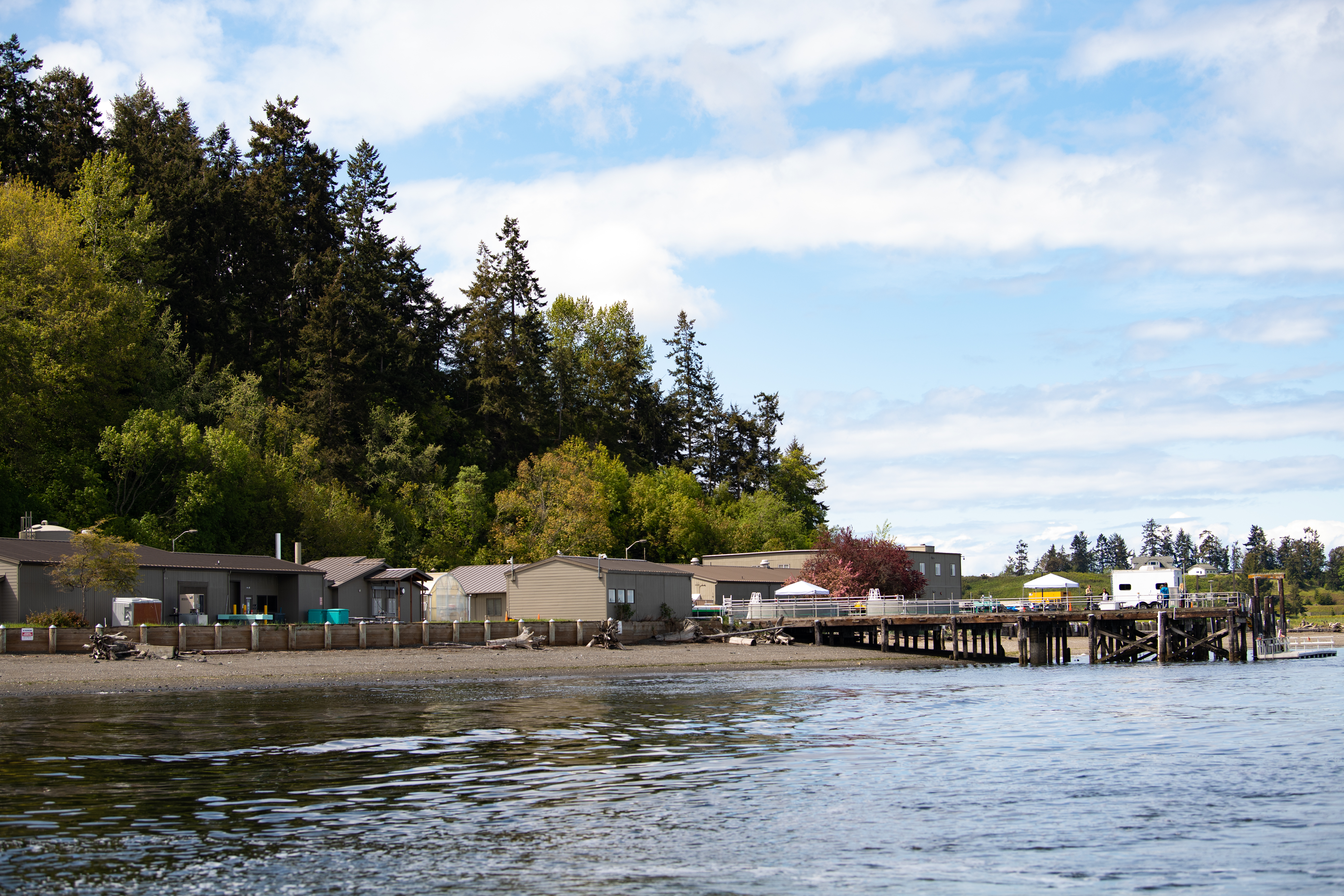
Museums Of History Bill Passes In NSW
New Hawkesbury Hub For Fires And Floods
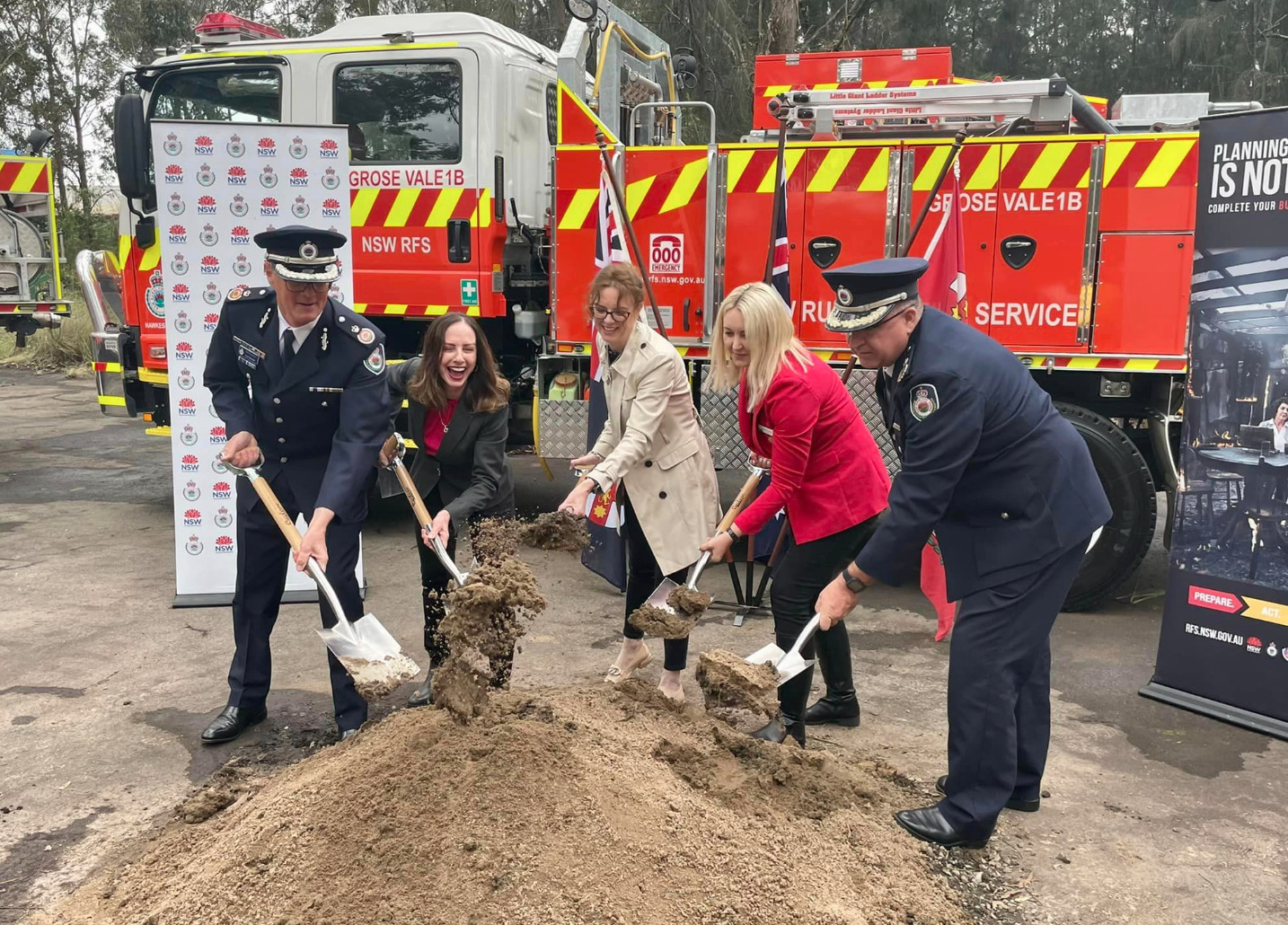
Wellbeing Support To Ensure Student Success In NSW
Engineers Build A Battery-Free Wireless Underwater Camera
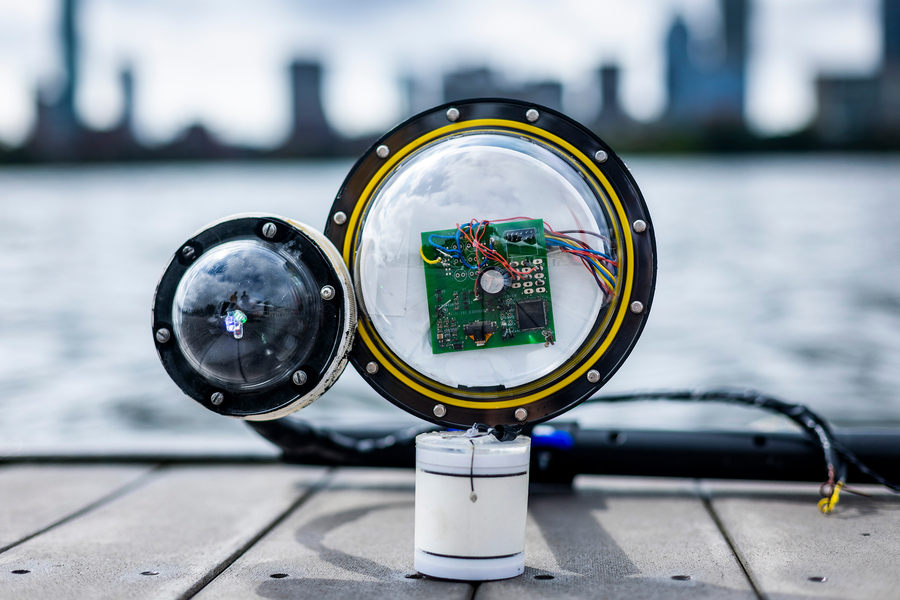
Disclaimer: These articles are not intended to provide medical advice, diagnosis or treatment. Views expressed here do not necessarily reflect those of Pittwater Online News or its staff.